
the journal of the mountain hunter and committed conservationist



the journal of the mountain hunter and committed conservationist

SETTING NEW STANDARDS IN WARMTH AND LIGHTWEIGHT PACKABILITY.
A RIPSTOP FACE FABRIC PROVIDES ADDED PROTECTION FROM RUGGED GLASSING TERRAIN.

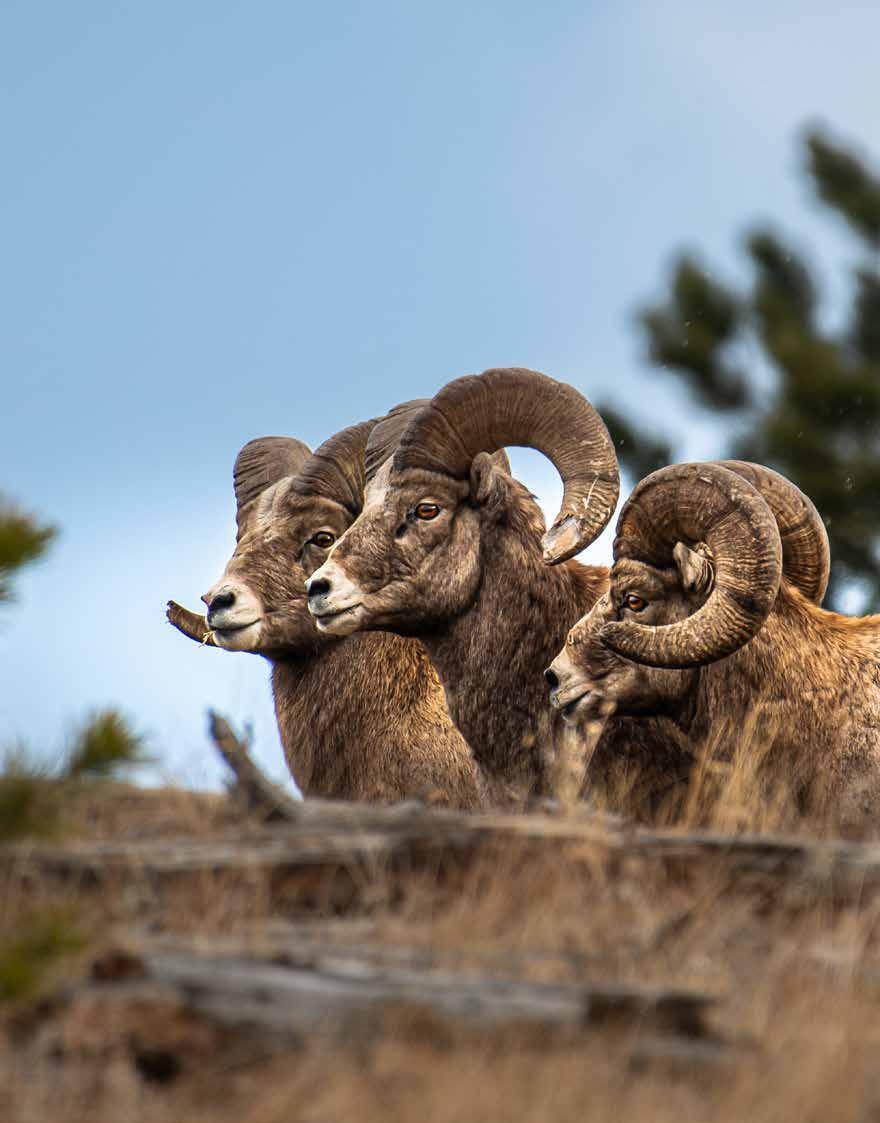

Photo: Bob Strong
No Way Out
Trapped beneath blood-red cliffs on a bone-chilling December afternoon, an estrus ewe faces an unrelenting wall of rams. There was no long pursuit this time—just strategy, strength, and inevitability. I’ve followed this Colorado Bighorn herd for six years, watching once-insignificant rams rise to power as old legends quietly disappear. What you see here isn’t just a photo—it’s a turning point in an unfolding saga. — Bob Strong






Stone’s Sheep: The Pinnacle of 50 Years of Hunting by Jeff McNerney
Strength and will win out on a Yukon Stone’s hunt.
46
A Gift From The Land Of The Long White Clouds by Alexander Sharif
Chasing tahr (and wallaby, rabbits and trout) in New Zealand.
54
Ram Romance: Passion And Science In Sonora by Ashley McEnroe
A huge heart for people and sheep: Jorge Artee of Sierra El Álamo. 62
Designer Rams And Dire Wolves by Chester Moore
What does cloning and gene editing mean for hunter-conservationists? 70 A Tale Of Three Ibex by Jack Atcheson, Jr.
Why wait for a sheep tag when you can hunt the mountains for ibex?
Shooting School: Ensuring The Hit by Wayne Van Zwoll
Who scoffs at instruction may find later it was salvation in disguise.
Official publication of The Wild Sheep Foundation
WSF World Headquarters: 412 Pronghorn Trail • Bozeman, MT 59718 • 406-404-8750
Cody Office: 1285 Sheridan Avenue, Suites 260/275 • Cody, WY 82414 • 406-404-8750
CHAIRMAN: Charlie Kelly • ckelly@wildsheepfoundation.org ..............................
VICE CHAIR: Kyle Stelter • kstelter@wildsheepfoundation.org ..............................
SECRETARY: Jann Demaske • demaskes@msn.com .............................................
TREASURER: Larry Jacobs • lljacobs4@aol.com ...................................................
Clint Bentley • sheepspotr@aol.com
Bralli Clifford • bclifford@wildsheepfoundation.org
Sam Cunningham • scunningham@wildsheepfoundation.org
Kevin Kehoe • kkehoe@wildsheepfoundation.org
Larry Johns • ljohns@wildsheepfoundation.org
Emilio Rangel W. • emiliorw@me.com • rangel@wildsheepfoundation.org
Logan Richard Young • loganyoung270@gmail.com
Term Expires 2026
Term Expires 2028
Term Expires 2026
Term Expires 2027
Term Expires 2027
Term Expires 2028
Term Expires 2027
Term Expires 2028
Term Expires 2028
Term Expires 2027
Term Expires 2026
PRESIDENT & CEO Gray N. Thornton • gthornton@wildsheepfoundation.org
PRESIDENT & CEO - EDITOR IN CHIEF, WILD SHEEP ® MAGAZINE: Gray N. Thornton • gthornton@wildsheepfoundation.org • Bozeman HQ
Corey Mason, Chief Operating Officer & Executive Vice President of Conservation Certified Wildlife Biologist® cmason@WildSheepFoundation.org Carrollton, TX
Kim Nieters, VP of Operations - Auction Director knieters@WildSheepFoundation.org Cody, WY
Kevin Hurley, Vice President of Conservation—Emeritus Certified Wildlife Biologist® khurley@WildSheepFoundation.org Boise, ID
Terry Ziehl, Finance Director tziehl@WildSheepFoundation.org Cody, WY
Keith Balfourd, Director of Marketing & Communications keith@WildSheepFoundation.org Bozeman, MT
Julie Tripp, Awards & Publications Director jtripp@wildsheepfoundation.org Lolo, MT
Paige Culver, Development Manager pculver@WildSheepFoundation.org Bozeman, MT
Maddie Richards, Membership Manager/ <1 Clubs Manager mrichards@WildSheepFoundation.org Bozeman, MT
Justin Phillips, Graphic Arts & Design Jphillips@wildsheepfoundation.org Cody, WY
Megan Costanza, Banquets & Events Manager mcostanza@WildSheepFoundation.org Reno, NV
Gray N. Thornton, Editor in Chief
Julie Tripp, Editor
Scott Morrison, Art/Design Director
Justin Phillips, Graphics/Design
Mike Aiazzi, Expo & Exhibits Manager maiazzi@wildsheepfoundation.org Reno, NV
Jaime Teigen, E-Commerce & Office Administrator jteigen@wildsheepfoundation.org Bozeman, MT
Matt Dwonch, Marketing and Content Strategist mdwonch@wildsheepfoundation.org Bozeman, MT
Becky Layne, Exhibitor Concierge (PT) blayne@wildsheepfoundation.org Bozeman, MT
Rebecca Anne Rebrovich, Assistant (PT) rrebrovich@wildsheepfoundation.org Bozeman, MT
Margie Forster, Registration Assistant (PT) mforster@wildsheepfoundation.org Reno, NV
CONTRACT & CONSULTANTS
Dr. Ryan Brock, Youth Education Coordinator rbrock@wildsheepfoundation.org Reno, NV
Greg Schildwachter, Lobbyist greg@watershedresults.com Washington, DC
Charlie Booher, Lobbyist Associate Wildlife Biologist® charlie@watershedresults.com Missoula, MT
Kurt Alt, Conservation Director— International Programs altwildlife@yahoo.com kalt@wildsheepfoundation.org Bozeman, MT & Brussels, Belgium
Ken Nowicki, Field Editor
Chester Moore, Writer Ashley McEnroe, Writer Wayne van Zwoll, Contributor
Contributing photos, articles, stories, and research pertaining to wild sheep or the interests of the members of WSF are always welcome. Contributed material will be published at the editor’s discretion. Please include a selfaddressed stamped envelope if you wish materials to be returned.
Clay Brewer, Mexico Initiative Lead & Special WAFWA Projects Claybrewer1@outlook.com Rochelle, TX
Pat Cummings, DNWR—NTTR Project Lead Patrickcummings1002@gmail.com Las Vegas, NV
Maureen Jefferson, Conservation Permits Jm_hullinger@sbcglobal.net Las Vegas, NV
Bill Jex, Thinhorn Sheep Program Lead RPBio BC bjex@wildsheepfoundation.org Smithers, BC
Kevin Martin, USFS & BLM Planning Kevindmartin63@gmail.com Pendleton, OR
Ashley McEnroe, Staff Writer aoliverio@gmail.com Big Sky, MT
Shane Mahoney, Special Conservation Consultant shane@conservationvisions.com St. John’s, Newfoundland
Chester Moore, Staff Writer chester@chestermoore.com Orange, TX
Scott Morrison, Editor & Designer, Wild Sheep® magazine scott@morrisioncreative.com Livingston, MT
Steve Rosenstock, Grant Writer Certified Wildlife Biologist® steve@wildsheepfoundation.org Flagstaff, AZ
Greg Schildwachter, Columnist Morrison Creative Company, Inc. Magazine Design/Production
Advertising & Editorial Submissions
Wild Sheep Foundation Headquarters
412 Pronghorn Trail, Bozeman, MT 59718
ATTN: Editor

For more information on submission guidelines, meetings and convention information, and service, conservation and hunting award criteria, please visit our website at www.wildsheepfoundation.org. All membership dues include $28/year for a subscription to Wild Sheep® magazine.
PUBLISHED QUARTERLY BY THE WILD SHEEP FOUNDATION OF BOZEMAN, MONTANA, IN CONJUNCTION WITH MORRISON CREATIVE COMPANY, INC. OF LIVINGSTON, MT.
The Wild Sheep Foundation’s mission is to enhance wild sheep populations, promote scientific wildlife management, and educate the public and youth on sustainable use and the conservation benefits of hunting while promoting the interests of the hunter.
The tradition began on a November weekend at Mt. Horeb, Wisconsin, in 1974. Thirteen wild sheep enthusiasts passed the time by sharing stories about their encounters with the majestic mountain creatures. After realizing how fortunate they were to have all shared such incredible experiences, they decided it was time to give something back. They forged FNAWS so men and women everywhere could get more involved in the positive management of wild sheep. It was incorporated as a non-profit corporation in Iowa on September 14, 1977, and began accepting paid memberships in 1978 as more people joined the cause. The commitment and noble spirit of FNAWS quickly helped the foundation become the fastest-growing wildlife conservation organization of its kind.
DISCLAIMER While Wild Sheep Foundation strives to attract quality advertisers and donors, it cannot be responsible for the ultimate quality of the products which they may present to our members and buyers. Neither the Wild Sheep Foundation nor its Officers or Directors is a guarantor of your satisfaction with the products it makes available to you. Our dedication is to the wild sheep of the world and not to policing our advertisers or donors. We cannot, under the law, reject an advertiser or donation simply because of a prior complaint from a dissatisfied consumer. We will strive to make available quality merchandise and hunts, but without warranty or guarantee.
WILD SHEEP FOUNDATION®, WSF, FOUNDATION FOR NORTH AMERICAN WILD SHEEP®, <1 CLUB®, <1ICLUB, CHADWICK RAM SOCIETY®, MARCO POLO SOCIETY®, MOUNTAIN ROYALTY SOCIETY, LEGENDS SOCIETY, PINNACLE SOCIETY, TODAY, TOMORROW, & FOREVER FOR WILD SHEEP, FNAWS, CHRIS KLINEBURGER MOUNTAIN HUNTER HALL OF FAME AWARD®, PUTTING AND KEEPING WILD SHEEP ON THE MOUNTAIN®, SHEEP SHOW®, SHEEP WEEK®, SHEEP FEVER®, TAKE ONE PUT ONE BACK®, THE SHEEP SHOW®, RAM LAY-AWAY PROGRAM®, WILD SHEEP® MAGAZINE, COME FOR THE SHEEP, STAY FOR THE PARTY®, FULL CURL®, WIHI®, WOMEN HUNT®, WH®, WOMEN IN HUNTING®, WOMEN IN HUNTING INITIATIVE® and their respective logos are Registered trademarks and cannot be used, commissioned, or otherwise displayed without permission of the Wild Sheep Foundation.
GRAND SLAM® is a registered trademark of Grand Slam Club/Ovis. Used with permission.
Wild Sheep® (USPS# 009-460) is published quarterly by Wild Sheep Foundation, 412 Pronghorn Trail, Bozeman, MT 59718 Periodical Postage Rate is paid at Bozeman, MT 59718 and additional mailing offices.
Subscription Price $28.00 All membership dues include $28/ year for a subscription to Wild Sheep® Magazine Postmaster: Send address correction to: Wild Sheep Foundation, 412 Pronghorn Trail, Bozeman, MT 59718


15

160

400

997



To be the best managed, most respected, influential, and relevant conservation organization benefitting wild sheep worldwide.
To Put and Keep Wild Sheep on the Mountain.
We enhance wild sheep populations and their habitats, promote scientific wildlife management, and educate the public and youth on sustainable use and the conservation benefits of hunting while promoting the interests of the hunter.
Values The principles that guide us
Honesty Teamwork Accountability Integrity Positive Attitude Stewardship Respect for Others Respect for Wildlife Loyalty Hunting Ethics

Putting and Keeping Wild Sheep on the Mountain Since 1977








by Gray N. Thornton President & CEO
Sometimes the stars align, shared purposes coalesce, and magic happens. That is exactly what occurred on May 8, 2025, in Charleston, South Carolina during the Wild Sheep Foundation’s inaugural Icons of Conservation Gala when an astonishing $10 million was pledged to the Wild Sheep Legacy Foundation (WSLF) Endowment Fund. This incredible support, $10 million in one day, will go a long way to help WSF realize our goals of $21 million secured in the WSLF Endowment Fund by the end of 2027, and $30 million by 2030.
So why is this important? When joining WSF as CEO in May of 2008, and after 18 years with two other fine organizations in our space, I warned the then board that I was concerned that our industry model of depending on our annual bake sale (convention) to raise 80% or more of our funds was risky. That is a classic “all eggs in one basket” portfolio, and one fraught with risk. My caution was that WSF must diversify and raise funds like a university in addition to our Sheep Show® celebration and fundraiser. The pandemic showed us how risky our bake sale model is, but characteristically, WSF weathered that too in fine form. The University model is an endowment. An endowment is forever funding, or as I like to call it, “mailbox money.” Funds raised
and directed to the endowment are principal and are never drawn on or spent, only a portion of the earnings and income from the principal are distributed to fund education in the university model, or wild sheep conservation in ours.
For example, if $1 million is raised and directed to an endowment, and throughout the year that endowed fund earns 10% in the equity, bond, and other markets, that $1 million after 12 months is worth $1.1 million. $1 million is principal or “corpus” and cannot be touched, ever, and $100,000 is earnings and could be available to fund programs.
The approved Investment Policy of our Wild Sheep Legacy Foundation supporting foundation is to annually distribute 4% as a distribution to WSF to fund Grant in Aid (GIA). So, in the above model, $40,000 is directed to fund GIA, and the remaining $60,000 of earnings keeps the original $1 million fund growing. All things equal, the $1,060,000 becomes $1,166,000 after 24 months and the 4% distribution for GIA in year two is $46,640. This keeps growing, and the distribution keeps occurring…“mailbox money” forever.
In 2010, WSF’s Endowment Fund was about $5 million. In 2013, we formed WSLF as a separate supporting foundation with a sole purpose to manage,
protect, and grow the endowment and moved the Fund from WSF to WSLF. As of April 1, 2025, we’ve grown that WSLF endowment to ~$15 million. We’ll add another $2.2 million in cash to the endowment this fiscal year (ending June 30, 2025) for a total of about $17 million in the fund. WSF’s development goal is to grow that to $21 million by the end of the 2026-27 fiscal year. My goal is to grow it to $25 million in the same timeframe (see graphic at right).
The significance of these objectives, using the same math as above, is very important.
At $15 million our annual 4% distribution is slightly less than $600,000 (we actually use a three-year average to calculate the distribution.) 100% of that $600,000 is directed to help WSF fund the $3.4 million in Grant-inAid we’ve budgeted to wild sheep conservation programs this next fiscal year. Next year, after our $2.2 million directed to the fund our 4% distribution will be about $680,000.
At $25 million, WSF’s “mailbox money” distribution is $1 million annually, forever. At $30 million it is $1.2 million, at $50 million the annual distribution to GIA is $2 million. You see where I’m heading. Such a nest egg endows WSF’s critical conservation work for wild sheep not only for today, and tomorrow, but forever. Long after most of us are long gone.


So back to our magical $10 million day in May.
We presented the above goals to about 50 Marco Polo Society, Mountain Royalty Society, and Legacy Society members at a breakfast meeting in Charleston. At the conclusion, Endowment Development Committee Chair, Kevin Rinke and wife Janine pledged $1 million to the Endowment Fund followed by Past FNAWS and WSF Chair Lou Rupp, pledging $1.02 million In Loving Memory of Pauline Rupp. Endowment Development Committee member Gary Raba pledged $150,000. Fabulous support! When I returned to my room, I received an email from Lee Anderson confirming his incredible gift of $5 million,
$1 million a year for five years, creating the Lee & Penny Anderson Conservation Endowment. This is the largest gift to date in FNAWS/ WSF’s 48-year history! Paige also received an email from Tommy Lang, with a gift of $250,000. By late morning May 8th, we had received about $7.5 million in gifts and pledges. Then, before dinner, Marco Polo Society members Doug and Shelly Sayer pledged an incredible $2.5 million to get us to $10 million in gifts and pledges in one day. Unbelievable and so demonstrative of the altruism of the WSF family. Thank you all!
Do you believe in magic? I do.
You can read more about our inaugural Icons of Conservation
Gala and 2025 inductees, John & Jane Babler, Louis Breland, and Bernie Feideldey in Paige Culver’s column starting on pages 28-30 of this issue.
Have a great summer and good luck on the July/August sheep openers! WS
Yours in conservation,
Gray N. Thornton
President & CEO, Wild Sheep Foundation
Editor-in-Chief, Wild Sheep® magazine
Marco Polo Society® Member
Summit Life Member
Chadwick Ram Society® Member
Legacy Society Member
Summit Life Member



by Charlie Kelly Chair
As I step into the role of Chair of the Wild Sheep Foundation (WSF), I find myself reflecting on the incredible journey that has brought me here. It all began in 1998, during my first wild sheep hunt in the breathtaking and rugged mountains of Arizona. Little did I know that this experience would ignite a passion for mountain hunting and wildlife conservation that would shape nearly three decades of my life. Since joining the WSF Board five years ago, I have had the honor of working alongside some of the most dedicated and talented individuals in the field. Together, we have fostered a community of over 11,000 WSF members who are essential to our mission. Our loyal donors, exhibitors, and attendees have made the annual Sheep Show® a resounding success, providing crucial support for our initiatives and helping us raise significant funds for wild sheep conservation.
I would be remiss if I didn’t take a moment to express my gratitude to our outgoing Chair, Glen Landrus. His leadership over the past three years and his nine years of service on the WSF board have set a high standard for us all. I deeply appreciate his mentorship and friendship throughout my tenure.
As I look ahead to my first year as WSF Chair, I am excited to share six major goals that will guide our efforts:
1. Improving cohesiveness with WSF Chapters and Affiliates: Strengthening our connections will

enhance our collective impact on wild sheep conservation.
2. Increasing Grant-In-Aid Funding: Each fiscal year, we will strive to grow our funding to support more projects that benefit wild sheep populations.
3. Planning for the 2027 50th Anniversary Sheep Show®: This milestone event will be an opportunity to celebrate our achievements and renew our commitment to conservation.
4. Implementing the “Tell Our Story” Action Plan: We will focus on sharing our successes and the importance of our mission to our members and engage and inspire others.
5. Maximizing Board Effectiveness: We will work to ensure that our board of directors is fully equipped to contribute to our mission and improve our organizational operations.
6. Growing the Endowment Fund: Our development efforts will continue to bolster the Endowment Fund managed by the Wild Sheep Legacy Foundation,

ensuring sustainable funding for future generations.
In addition to these goals, I believe it is essential for our board and staff to maintain a balanced approach to our operations. I call this mindset “Today, Tomorrow, and Forever for Wild Sheep.”
- Today: Focus on impactful projects and activities that will make a difference in the current fiscal year.
- Tomorrow: Plan for future opportunities based on a strategic vision that anticipates the needs of wild sheep conservation.
- Forever: Build our endowment fund to ensure lasting support for wild sheep conservation efforts for generations to come.
As I conclude this message, I want to share a mantra that I have encouraged our board members and staff to embrace: Am I “Moving the Needle for Wild Sheep?”
This simple question serves as a scorecard for our effectiveness and commitment to our mission. Together, let’s ensure that our actions today lead to a brighter future for wild sheep and the ecosystems they inhabit.
Thank you for your ongoing support, and I look forward to working alongside all of you in the coming year.
With gratitude and determination,
Charlie Kelly






When it’s day nine of your ten-day Dall Sheep hunt in the Northwest Territories, and you wake up to six inches of snow it’s not a great time to be limited by your hunting boots. Some may wait it out in the tent, but your Mountain Extremes give you the wherewithal to continue hunting, no matter what Mother Nature throws at you. There is nothing tougher than high altitude sheep hunting, so to help you in your hunting adventures, we built a boot tough enough to keep on charging, no matter what conditions arise.


“When your season consists of 100 days in the mountains, carrying heavy packs, you need great boots. Footwear for us is not a matter of luxury or fashion, it’s a function of performance under terrible conditions. Years and miles of abuse have shown me which boots work best - Kenetrek; comfort and durability to match the conditions of my hunts.”
-Randy Newberg, Host of Fresh Tracks

by Kurt Alt Conservation Director, International Programs
In a landmark move for wildlife conservation, Mongolia is reinvesting proceeds from this year’s Wild Sheep Foundation (WSF) auction of a single argali conservation permit into a suite of vital conservation initiatives. These include nationwide population surveys, a Gobi biodiversity conference, development of species, and area-specific management and implementation plans, legislative reform, and the launch of a new online database system anchored by the introduction of horn plugging—a proven method to verify legal harvests and track wild sheep data.
Beginning in 2025, all legally harvested argali in Mongolia will be required to undergo horn plugging (also referred to as “sealing”) prior to export. This practice, long supported by the Wild Sheep Foundation across North America, marks the first time horn plugging will be fully implemented in this region of the world.
A Memorandum of Cooperation has been signed between the Mongolian Ministry of Environment and Climate Change and the Mongolian Wildlife Association (MWA) authorizing the

horn plugging program. Together, these organizations have developed and will oversee the rollout of this new program beginning with the 2025 argali hunting season.
To support this effort, the WSF and MWA also signed a Memorandum of Understanding, under which the WSF commits to supplying the horn plugs and specialized drill bits needed to install them correctly—free of charge.
Hunters and conservationists familiar with North American practices will recognize horn plugging. In most U.S. states, Canadian provinces, territories, tribal and First Nation jurisdictions, legally harvested mountain sheep must have a tamper-proof plug inserted into one horn. This plug carries a unique alphanumeric code tied to the specific ram, serving as both proof of legal harvest, legal possession, and a cross-referencing tool for wildlife enforcement.
First adopted by Wyoming in 1977, horn plugging has expanded significantly since the 1980s. It has been instrumental in reducing illegal possession, trade, and trafficking of wild sheep across North America.





Beyond verification and enforcement, the horn plugging process allows for the collection of valuable biological data. Information such as horn measurements, morphology, age, and even tissue samples (like horn shavings for genetic analysis) help scientists assess both population health and broader habitat conditions.
In Mongolia, each plug will be inserted by authorized personnel and linked to a standardized data sheet. Developed jointly by the Ministry and MWA, this form will record essential information; the plug’s unique ID, age of the ram, harvest location, horn dimensions, and more. All data will be digitized
and managed by both the Ministry and MWA, ensuring it informs ongoing management, research and
conservation policy decisions.
The horn plug number will be referenced in the CITES export permit, creating a verifiable link between the physical specimen and its legal documentation that benefits hunters, exporters, and wildlife officials. This integration strengthens trust in the legal argali trade and provides a powerful deterrent against illegal trafficking. With these new investments and systems, Mongolia is taking a bold, science-based action to ensure the long-term sustainability of its argali populations and funding derived from sustainable use to support both the resource and local communities—setting an example for conservation efforts worldwide. WS



BX-4 PRO GUIDE HD EDGE-TO-EDGE CLARITY FOR ALL-DAY GLASSING


by Corey Mason & Sam Cunningham Conservation Director, International Programs & WSF Board Member
On May 14-15 over 100 wild sheep enthusiasts gathered in Alpine, TX. The topic was managing desert bighorn sheep in Texas—challenges of the 21st century.
Led by Texas Parks and Wildlife Department (TPWD), and emceed by Dr. Louis Harveson, Director of the Borderlands Research Institute and Associate Provost of Research at Sul Ross State University, the symposium brought together the leading experts in bighorn sheep management. Attendees included landowners, agency staff, outfitters, wildlife veterinarians, academic partners, and non-government organization partners, with all gathering to discuss strategies to address the precipitous decline of desert bighorn sheep in Texas. The symposium began with comments from TPWD Executive Director, Dr. David Yoskowitz, followed by former WSF Conservation Director and retired TPWD biologist, Clay
Brewer, describing conservation efforts and challenges to date and visioning forward.
The insights and perspectives of two conservation-minded and insightful landowners next shared challenges of managing wild sheep in a landscape dominated by aoudad. A number of academic and agency experts detailed research and challenges with aoudad and Mycoplasma ovipneumonia (MOVI). The conclusion—you cannot have aoudad and desert bighorn sheep—you have to pick one.
The invasive, exotic aoudad were introduced into Texas in the 1950s by TPWD and have adapted to the landscape in a way unimaginable to all. Fast forward to today and due to resource competition and MOVI transmission from aoudad to desert bighorn sheep, sheep numbers are roughly a third of what they were a decade ago. Further, other big game species, like mule deer, are also declining due to competition with
aoudad. And with an estimated 100,000+ aoudad on the landscape, nothing short of focused and sustained culling programs will make a dent.
The session concluded with TPWD Desert Bighorn Sheep Program Leader, Froylan Hernandez, giving an overview of the draft Health Action Plan and seeking input from attendees. The plan focuses on adaptive management, protecting the healthy herd at Elephant Mountain Wildlife Management Area, identifying future restoration sites, aggressive aoudad control and disease management, and associated surveillance plan.
As conservation partners and sponsors of the symposium, the event concluded with remarks by Texas Bighorn Society President and WSF Director, Dr. Sam Cunningham, and WSF COO and Executive VP of Conservation, Corey Mason. WS

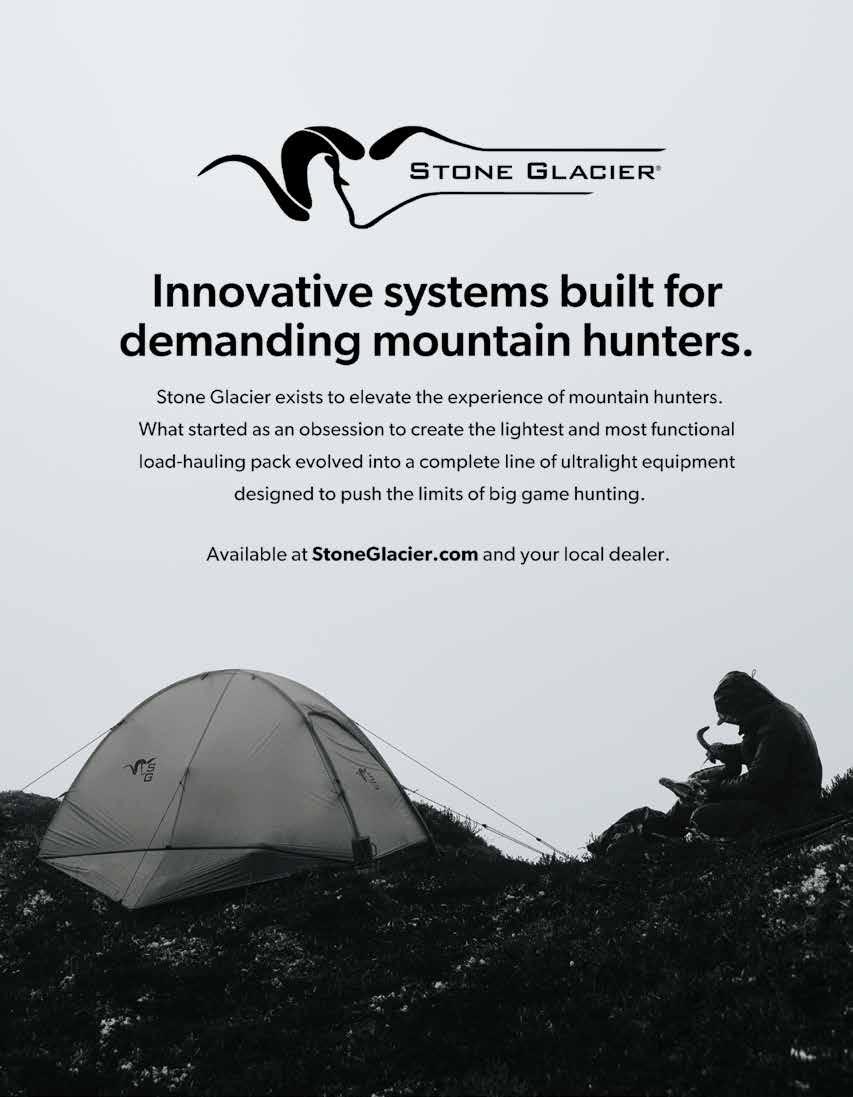

The Wild Sheep Foundation is proud to present the Western Association of Fish and Wildlife Agencies, Wild Sheep Initiative 2025 Range-wide Status of Bighorn and Thinhorn Sheep in North America. This edition features an introduction and will be followed by the individual state/provincial reports in subsequent issues of Wild Sheep.
The purpose is to provide a general overview of the current population status and general abundance trends for bighorn and thinhorn sheep throughout their range in North America. The Wild Sheep Initiative (WSI) consists of representatives from 20 state, territorial, and provincial agencies that comprise the Western Association of Fish and Wildlife Agencies (WAFWA).
The WSI’s mission is to provide a collaborative approach to finding solutions to improve wild sheep conservation and management. The general population status and trajectory of wild sheep populations is commonly requested by stakeholders including agency leadership, NGOs, hunters, and the public at large. To provide a quick snapshot of the status of these species, the WSI assembled this information by having each agency representative provide the current population status, and harvest information (Tables 1 – 3) and disease status/management for their respective jurisdiction. All states and provinces use very different methods to survey and estimate population size and




harvest. Some jurisdictions do not estimate population size, but rather, look at changes in trend using different metrics including harvest, hunter effort, or trend counts. Wild sheep populations are below management goals in most jurisdictions due to a variety of factors, of which, disease, primarily pneumonia, harsh winter conditions, and climate are perhaps the most important. Wildlife managers, veterinarians, and researchers have been tirelessly seeking solutions to population decline with some success.
Bighorn sheep (Rocky Mountain and California BHS – Table 1 and Desert BHS – Table 2) populations are generally stable with a recent downward trend across most jurisdictions (Figure 1), however, British Columbia is reporting significant declines in California BHS populations through the past five years.
Thinhorn sheep population status data is incomplete. In Alaska, managers estimate that Dall’s sheep have been stable with a recent dramatic, sharp decline due to extraordinarily harsh winter conditions. In British Columbia, Dall’s sheep have been stable, but estimates were increased in 2019 resulting from new genetic information that expanded the range of that subspecies to include areas previously identified as Stone’s sheep (Table 3, Figure 2).
Stone’s sheep estimates from British Columbia show a similar trend over the past 23 years with a modest decline in 2020 (Table 3, Figure 2).
As sheep numbers decline, license availability and harvest
Table 1. Range-wide estimates of 2024 bighorn sheep (Rocky Mountain and California BHS combined) population size, number of hunting licenses issued, and number of rams and ewes harvested.
1Alberta – Includes licenses allocated to outfitters, and general and special (limited entry hunt) licenses sold to Alberta residents.
2British Columbia – data listed under licenses includes only the numbers of available draws/permits issued in Limited Entry Hunt Zones
3Limited entry hunt units only
4Montana – includes limited and unlimited hunting district ram harvest
5Includes controlled hunts, 1 auction tag, and 1 raffle tag. n/a – not available
2
Table 2. Range-wide estimation of 2024 Desert bighorn sheep population size, licenses issued, and rams harvested provided by member agencies of WAFWA. Click on a state/province/territory name to go directly to that jurisdiction.
1Total ram tags including management ram hunt for one-horn ram
2Two outstanding tags at time of print; hunt season ends 30 September 2025. n/a – not available

hunting opportunity based on license issuance (on average >60%). On average, bighorn sheep, desert bighorn sheep, and Stone’s sheep account for 35%, 5%, and 1% of wild sheep hunting licenses available, respectively (Figure 3). Interestingly, on average bighorn sheep and Dall’s sheep provide about an equal amount of harvest at 35% and 38%, respectively. And, on average, desert bighorn sheep and Stone’s sheep account for 16% and 11%, respectively (Figure 4). WS
1
sheep
Table 3. Range-wide estimation of 2024 Thinhorn sheep (Dall’s sheep and Stone’s sheep) population size, licenses issued, and rams harvested provided by member agencies of WAFWA. Click on a state/ province/territory name to go directly to that jurisdiction.
1British Columbia – data listed under licenses includes only the numbers of available draws/permits issued in Limited Entry Hunt Zones n/a – not available
2

3


4
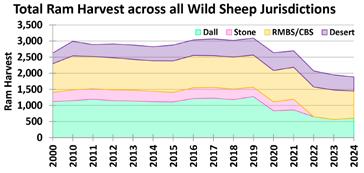
The Conklin Foundation would like to gratefully acknowledge and thank the following businesses and individuals for their generous donations.
The support of donors makes it possible for the Conklin Foundation to continue its efforts to educate youth about hunting.
• Canada North Outfitting
• Mexico Hunting Specialists
• Giuseppe Carrizosa
• Spanish Mountain Hunts
• Rancho Santa Elena
• Legelala Safaris
• High Mountain Hunts
• MJ Miller and Company
• Salvaforcaza
• Go with Bo
• Brilliant Stars
• Bellreguart de Sochiapa
• Iberian Hunters
• Canis Ventures
• Fernando Saiz
• Profihunt
• Vidale Safaris
• Finstincts
• Weatherby Rifle
• Swarovski Optics
• Yukon Stone Safaris
• Baranof Jewelers
• Kevin Downer Sporting
• Point Blank Hunts
• No Fly Zone Outfitters
• SCI Manitoba
• Johnny Fidler
• Laser Shot
• Renee Snider
The Conklin Foundation board is pleased to announce the 2025 winner of the Conklin Award. Deron Millman is the 23rd winner of the “Tough Man” award, named after the late Dr. James Conklin, a Weatherby Award winner, who liked to pursue difficult animals throughout the world.
Deron has been married to Patricia for 33 years. They reside in North Canton, Ohio. They have twin children, Anthony and Taylor, and a granddaughter, Bailey. At age 28, Deron started and developed one of the largest commercial land survey companies in North America.
Proud Partner of Conklin Foundation

Deron started hunting at age 10 with his grandfather. He has 39 different Ovis species and 39 different Capra species. He has taken over 500 animals and has been to Asia over 36 times.
Deron persevered over the other challenging finalists: Jeff Demaske, Gervasio Negrete, Wayne Farnsworth, Lee Anderson, and Jan Dams.

In 2013 the Wild Sheep Foundation (WSF) launched a legacy campaign, Ensuring the Future of Wild Sheep, that includes tax and estate planning opportunities, counsel and advice, major gifts, and giving societies to raise the funds required to ensure the future of the wild sheep resource by directing even more dollars to wild sheep restoration, repatriation and conservation. Our vision is to build a series of funds from which a targeted annual offtake of ~4% will allow WSF to direct 100% of our convention fundraising to mission programs. Our goal is $5 to $6 million annually in mission focused Grant-In-Aid and other funding to “Put and Keep Wild Sheep on the Mountain.” With your help we can achieve this vision and goal.
The Marco Polo Society was established in 2008 as WSF’s premier giving society. To compliment the Marco Polo Society and expand this giving concept to ALL WSF members and wild sheep advocates, WSF created a new giving society in the fall of 2013 – the Chadwick Ram Society with five benefactor
levels enabling tax-deductible, donor directed gifts from $250 to $5,000 per year to mission areas of the donor’s desire. Donations can be made to the WSLF Endowment Fund, WSF Conservation Fund, our annual Convention and/or Area of Greatest Need to fund specific programs and initiatives. Chadwick Ram Society members are recognized with a lapel pin displaying their Copper, Bronze, Silver, Gold or Platinum benefactor level. Members may also “upgrade” their benefactor levels within the Chadwick Ram Society as well as to the Marco Polo Society.
For more information on the Chadwick Ram Society, Ensuring the Future of Wild Sheep campaign, or the Keep Climbing Campaign contact WSF President & CEO, Gray N. Thornton, Development Manager, Paige Culver, or visit our website.
We cordially invite you to join the Chadwick Ram Society and help Ensure the Future of Wild Sheep!



CRS

The fog finally lifts, and there, in a distant hanging basin scattered through the lush green vegetation, are seven white rams.
After hours of shivering through the heavy snowfall and frigid north wind, you spot an old, heavily broomed bighorn stepping out of the timber.
Something catches your eye. It’s the flick of an ear. You tweak the focus on your 10-power Swarovskis and make out the base of a horn, and it’s big. There, buried in the cactus and desert flora, is a desert ram worth a closer look.
Your eyes are fatigued, and your neck aches from glassing the vast mountainside above you. Suddenly, from out of the endless rocky rims and talus slopes, a sheep stands up. It’s a beautiful, dark grey, nearly-black Stone’s sheep ram.
These scenes play out in my dreams, both day and night. And I’m sure many of you see similar ones. When I became a member of The Foundation of North American Wild Sheep decades ago, I was surrounded by thousands of like-minded individuals. My belief that all hunters and outdoor folks should be stewards of the animals we pursue was solidified and validated. Immediately, opportunities were available for me to learn more about wild sheep conservation. Through volunteering, participating in raffles
and auctions, and, of course, socializing, we all can contribute to our shared goal of “Putting and Keeping Wild Sheep on the Mountain.”
The Chadwick Ram Society allows me to take my stewardship up a notch. With the different levels of gifting available, donations can be made reasonably and comfortably. It is relatively easy to start a commitment and adjust the level of support. With the integrity of the Wild Sheep Foundation, we can see, with our own eyes, how the funds are used and the good they do.
I firmly believe that we all want to leave the pristine forests, mountains, lakes, and streams as good, if not better, than when we first encountered them. We want more hunting and outdoor adventures available for our kids and grandkids. And we want there to be more sheep and other wildlife. This won’t be easy as the human population grows and industrialization expands. But, WE ARE STEWARDS OF THE WILD SHEEP. If we take that seriously, stuff it in our backpacks, and climb the rugged, steep mountain, we can make a difference.
Please consider joining the Chadwick Ram Society. Do it for the sheep.
Summit Life Member - Jim Manley
(January 1, 2025 - Press Time)
PLATINUM - $50,000
GOLD - $25,000
Nicholas Vakay (PA)
SILVER - $10,000
Jeff & Kris Brant (WA)
Ed Checque (AK)
Jason & Julie Childs (WA)
William & Corinne Duryea (IL)
Douglas & Jacky Johnson (AK)
Cam Rader & Beth Kaplan (AK)
Loren Keisling (AK)
Richard & Megan Novotny (AK)
Thomas Rea (CO)
BRONZE - $5,000
Cory & Rebecca Jackson (AK)
Charles & Hannah Kahahawai (AK)
Jeff McMinn (KY)
Joel Tavera (FL)
Robert Wallock (WI)
Dilan Worthley (AK)
COPPER - $2,500
Doug Beattie (AK)
Nick Brigley (AB)
Richard Cousineau (MI)
Cameron Crivelli (CA)
Tyler Donahue (SD)
Lee Downing (CO)
Spencer Jacobs (AK)
Craig Johns (NV)
Ken Jones (AK)
Delaney & Ashlyn Kavanagh (AK)
John King (IL)
Cody McLaughlin (AK)
Henry & Amy Noss (PA)
Clark Olsen (AK)
Sasha Pais (NT)
Jakobee Reviglio (NV)
Chase Sheehan (AB)
Nick & Ashley Staller (AK)
Paco Velez (DE)
Harper Walton (AK)

by Paige Culver WSF Development Manager

Charleston, South Carolina— long known for its enduring beauty, deep-rooted heritage, and pivotal moments in American history—set the stage for yet another historic occasion as the Wild Sheep Foundation (WSF) hosted its inaugural Icons of Conservation Gala. Held in this iconic city, the event was nothing short of extraordinary. It marked not only a celebration of leadership and legacy but also an unexpected and incredible, record-setting day of fundraising for the Wild Sheep Legacy Foundation (WSLF) Endowment Fund—an achievement that underscores the foundation’s unwavering focus on the future.
This landmark evening honored our first three Icons of Conservation; John & Jane Babler, Louis Breland, and Bernie Fiedeldey, individuals whose dedication, vision, and impact have helped shape the direction and success of WSF. Their stories moved and inspired all in attendance, reinforcing the importance of leadership in conservation and the responsibility we all share in safeguarding the future of wild sheep. It also reinforced the undeniable truth: WSF is family.
But the evening’s most powerful statement came not from words, but from action. Thanks to the generosity of key WSF members and
supporters, the Foundation raised a record-breaking $10,000,000 in pledges and gifts for the Endowment Fund. With the ability to take 4% off of the growth of the carefully managed WSLF Endowment, these gifts are much more than just “money in the door”. They are long-term, perpetual, FOREVER investments in wild sheep conservation needs. These gifts will never. stop. giving.
This milestone comes at a critical time. WSF is keenly focused on its long-term viability and its ability to meet conservation needs well into the future. As wild sheep continue to face complex and evolving challenges, our strength
• Lee & Penny Anderson (FL)
• G. Thomas & Patricia Lang (FL)
• Tim & Ruth Van Der Weide (IA)

• Gary & Jude Romaine (OR)
Keep Climbing campaign society members may direct your gifts to where you feel it is needed most consistent with our Today, Tomorrow, and Forever for Wild Sheep conservation focus. However, to ensure wild sheep conservation and the Wild Sheep Foundation succeeds in perpetuity, 33% of all Keep Climbing Society gifts will be directed to the Wild Sheep Legacy Foundation Endowment Fund.
WE INVITE YOU TO KEEP CLIMING WITH US TO PUT AND KEEP WILD SHEEP ON THE MOUNTAIN® TODAY, TOMORROW AND FOREVER
• Kip & Sue Slaugh (UT) For more information contact: Paige Culver • 406.404.8758 • pculver@wildsheepfoundation.org
PLEDGES ARE CURRENT AS OF 3/3/25
DIAMOND
Terry Rathert (TX)
Mike Snider (MI)
Matt Tomseth (OR)
EMERALD
Mike J. Borel (CA)
Peter & Wendy Burchfield (PA)
Wayne & Denise Lennington (TN)
RUBY
Derek & Harbor Blake (AK)
Zach & Amber Higgins (ID)
Hank Raats (NV)
David Reed (TX)
earlier this year, WSF launched the Keep Climbing campaign—a bold initiative aimed at growing the endowment and ensuring the sustainability of our mission for generations to come.
The Keep Climbing campaign is already gaining momentum, fueled by the same spirit of dedication and vision that filled the room in Charleston. It is clear our members share the belief that conservation is not just about the present—it’s about what comes next. The choices we make today will define the future of wild sheep conservation.
Charleston served as the perfect setting for this defining moment. A city that has borne witness to some of the most transformative periods in American history now joins the Wild Sheep Foundation in charting a course for the future. The Icons of Conservation Gala was more than just an evening spent “gussied up”—it was a declaration of purpose, a celebration of legacy, and a rallying cry for all who believe in the enduring value of wild sheep and wild places.
Thanks to the generosity, vision, and leadership of our community and, particularly our Endowment Development Committee, the path ahead is clear, and we are well equipped to Keep Climbing. The future of wild sheep depends on it—and we are rising to meet that challenge. WS
For more information on how you can be part of this historic effort by joining the Mountain Royalty, Legends, or Pinnacle Society, please reach out to Development Manager, Paige Culver.









The Marco Polo Society® (MPS) is the Wild Sheep Foundation’s premier major giving “society” whose members have given and/or pledged a minimum of $100,000 to the Foundation. These donors have played a key role in the Wild Sheep Foundation’s success over the last 16 years. Quite frankly, this special group of donors has led the way in achieving our purpose of “putting and keeping wild sheep on the mountain”.
WSF SALUTES OUR MARCO POLO SOCIETY® MEMBERS TO DATE - Alphabetical Order
Shane & Angela Alexander (TN)
Lee & Penny Anderson (FL)
Anonymous
Anonymous
Stanford & Pamela Atwood (CA)
John & Jane Babler (MN)
Bryan & Barbara Bartlett (NM)
Scott & Erica Barry (MI)
Brian & Debbie Benyo (OH)
Gary Bogner (MI)
Dan & Kathy Boone (TX)
Louis & Patti Breland (AL)
Jerry & Amy Brenner (NC)
Steve & Jackie Bruggeman (MN)
Peter & Wendy Burchfield (PA)
Tony & Virginia Caligiuri (IA)
Ron & Billi Carey (AB)
Oscar & Valerie Carlson (MN)
Michael Carpinito (WA)
Walt & Joan Coram (TX)
Guinn & Betsy Crousen (TX)
Sam & Tracy Cunningham (TX)
Denis & Diane Dale (AB)
Dean & Paige Darby (MI)
Monty & Becky Davis (TX)

Jeff & Jann Demaske (CO)
Chris & Jaimie Dianda (NV)
Mike & Julie Dianda (NV)
Mark & Janice Dickson (CA)
Billy Dunbar (AK)
The Fiedeldey Family (OH)
Tom Foss (AB)
Ronald S. Gabriel, MD (CA)
Kevin Gilbert (MT)
Paul Greene (CO)
Brian and Susan Ham (AZ)
Marc & Cheryl Hansen (PA)
Jim & Sue Hens (NY)
Charles Herron (AL)
Tom & Denise Hoffman (NY)
Steve & Jill Hornady (NE)
Larry & Jane Hunts (OR)
Kevin Hurley (ID)
Ross & Nicole Jackson (CO)
Scott Jesseman (IL)
Kaan & Nurgul Karakaya (TUR)
Roger Kenner (ND)
G. Thomas & Patricia Lang (FL)
George & Kelly Lawrence (WA)
Doug & Dana Leech (WV)


Since its inception in 2008, $11 million in MPS gifts/pledges have been directed to WSF and mission programs. We are so proud to announce that the Marco Polo 100 member goal was achieved at the 2024 Sheep Show when a group of generous Marco Polo members purchased the #100 member spot for a whopping $1 Million Dollars to be directed to the Wild Sheep Legacy Foundation’s Endowment Fund. We are so humbled and proud to witness the Wild Sheep Family come together to create history and we have never been more excited and hopeful for the future of wild sheep worldwide.
Thomas Lemmerholz (GER)
Wayne & Denise Lennington (TN)
Jeff Lindgren (MN)
Robert Hall & Jane Link (FL)
Paul Mattes (MI)
Kyle & Joanne Meintzer (NV)
Joe & Christine Michaletz (MN)
Craig & Therese Mueller (ID)
Richard & Linda Murphy (NM)
The Olmstead Family (BC)
Mark & Gabriela Peterson (MI)
Ron & Vicki Pomeroy (WY)
Larry & Brenda Potterfield (MO)
Rancho La Palmosa (MEX)
Joni & Gary W. Raba (TX)
Terry Rathert (TX)
Gary & Yvonne Rigotti (OR)
Christopher Ring (TX)
Kevin & Janine Rinke (MI)
Alan & Barbara Sackman (NY)
Doug & Shelly Sayer (ID)
Roger Segebrecht (WI)
Steve & Sue Skold (IA)
Kip & Sue Slaugh (UT)
Kevin & Tuesdy Small (CA)
Dan Smith Jr. (CA)
Dan Smith III (CA)
J. Alain Smith (WA)
Mike Snider (MI)
Jeff Sorg (MT)
Daryll & Shauna Southwick (CO)
Brandon & Kristi Stokes (OR)
Rick Taylor & Carole Danyluk (BC)
Jelindo & Sandee Tiberti (NV)
Gray & Renée Thornton (MT)
Matt Tomseth (OR)
Mark Watkins (MN)
Tim & Ruth Van Der Weide (IA)
Ken & Anna Vorisek (AK)
Neal & Jody Wanless (AZ)
Mark Watkins (MN)
Jay & Martha Webster (TX)
Craig West (NC)
Steven & Ardyce Whisler (MT)
Clayton & Modesta Williams (TX)
Lyle & Jennifer Wood (AB)
Russ & Debi Young (TX)
Gary & Penny Young (WV)
Alan Young (YT)
#100 - $1M to the Endowment

by Charlie Booher WSF Lobbyist
Another footnote has been added to the history of America’s public lands. In the middle of May 2025, Congress debated the merits of selling federal public land in Utah and Nevada to help balance the federal budget. As of this writing, this provision has been stripped out of the socalled “Big Beautiful Bill” that is being considered under a budget reconciliation process, but its presence in the first place ought to be enough for us to pause and reflect on how we got here, as well as where we go moving forward.
For starters, the Wild Sheep Foundation was grateful to see this attempt halted.
“WSF is very pleased to see the removal of public land sales and exchanges from the House budget bill,” said WSF Chief Conservation Officer Corey Mason. “We applaud Congress for recognizing the value of public lands to all citizens and for all intended purposes. We will continue to work with Congress and the administration to support and improve the proper processes for considering sales and exchanges. Effective use of these transactions will increase the overall value of public land for recreation and other conservation values when sales or exchanges are being considered.”
The history of our public lands, including their acquisition, disposal, and management, extends to the very earliest days of European settlement on this continent. Artifacts of this history, in the form of treaties, land grants,
township surveys, reams of paper comprising the U.S. Code and Code of Federal Regulations, and land management institutions staffed with resource professionals surround us. Entire courses and many, many bookshelves have been filled with this history, but we as sportsmen must engage with this history if we are to chart a future for our shared estate.
In the early history of our country, land speculation and sales were used to encourage westward settlement, finance the construction of railroads, and fund education (both local schools and land-grant universities). However, for much of the last century, land sale has been replaced by land management underpinned by laws like the Federal Land Policy & Management Act, and its predecessor the Multiple-Use Sustained-Yield Act. Notably, some places like Alaska and Southern Nevada, have additional law governing how lands are to be managed, bought, sold, or to be given away.
Recent past attempts to liquidate federal lands at scale have repeatedly failed, thanks to strong opposition from hunters, anglers, and conservationists who understand what’s at stake. Yet the pressure resurfaces every few years. Why? Because public lands, though held in trust, are always vulnerable to short-term thinking driven by our current needs and the election cycles that our leaders are beholden to. When budgets tighten or ideologies harden, the idea of selling “surplus” land can
appear appealing. That is, until we remember that we would be selling a perpetual loss of opportunity, access, and, at least sometimes, wildlife habitat.
Public lands are not a line item to be erased in an accounting ledger. They are a legacy—440 million acres in the Lower 48 alone, entrusted to federal agencies for the benefit of all Americans. These lands provide critical habitat for bighorn sheep, elk, mule deer, and countless other species. They are the stage on which the North American Model of Wildlife Conservation has played out successfully for more than a century. They are where we hunt, fish, hike, and find solitude.
As an organization committed to Putting and Keeping Sheep on the Mountain®—lead by folks who know that 95 percent of sheep in the U.S. spend some part of their life on public land—WSF has been unequivocal in its stance against wholesale transfer or disposal of federal public lands in the lower 48. In WSF’s official position statement, the organization affirms that “Federal public lands are a public trust resource” and that “the wholesale transfer of federal public lands to state ownership or control is fraught with peril and contrary to the interests of wildlife conservation and public access.”
At the same time, WSF recognizes that public land management can, should, and must improve. Not all parcels of federal land provide the same conservation value, and there are times when a well-

considered exchange, grounded in transparency and guided by science, can result in better outcomes for wildlife and recreation alike. The processes, both through the federal land management agencies and in the Congress, by which these sales, acquisitions, and exchanges are made are slow. We are committed to improving the processes themselves and ensuring that the interests of wild sheep and those of us who pursue them are considered in decision-making.
Our public lands don’t just belong to one region, one party, or one generation. They belong to all of us. Their management must reflect that shared ownership. For WSF, that means continuing to invest in habitat restoration, public-private partnerships, and public policy rooted in the best available science, while defending against actions that would fragment or degrade the land base our wildlife depends on.
The events of earlier this year were a reminder, not a resolution. The reconciliation bill is, as of this writing, moving forward without the sale of public lands, but the debate over the fate of America’s federal estate will continue, as it has for generations. At the Wild Sheep Foundation, we will keep advocating for the stewardship of our shared lands—lands that allow wild sheep to thrive, and give us all a place to pursue adventure, conservation, and legacy. WS












by Dave Turchanski Chair, Ram Awards Committee
The 2025 Ram Awards was a huge success, and we look forward to even a bigger and better 2026 Awards Program.
As the former Chair of the International Sub-Committee Awards, I am looking forward to serving as the Chairman for the WSF Awards. I would like to thank Tony Caligiuri, past Chair of the WSF Awards, for his support of the awards program and wish him all the best with his future endeavors.
WSF Awards recognize awards for two different categories: North American sheep and goats and international sheep and goats. North American sheep and goats are one committee, and the international sheep and goats are another committee. Combined, the group of volunteers make up the awards committee and without their hard work and dedication the awards would not be possible. There is one lady that keeps us all in line to make sure things are moving forward and happening on schedule and that is Julie Tripp, WSF Awards and Publications Director. Thanks, Julie, for keeping it all rolling smoothly.
As the 2026 awards are quickly approaching, we are working diligently to make it a bigger and better event than in previous years. Without the support of all our award sponsors these events would not be possible, so thank you! Of course, we cannot forget the entries submitted by you, the members. The time preparing for

each hunt, the money spent for these hunts-of-a-lifetime—as well as the fantastic trophies taken— we look forward to awarding and recognizing both the hunters and their fantastic trophies.
This is a perfect time to update WSF members on a change to the requirements for entering your ram or goat into our awards program. At the April 2025 board of directors meeting, the members unanimously voted to update the membership requirement.
Beginning with the 2026 Ram Awards, hunters will need to be national WSF members at the time they submit their entry. This is a change from the past where hunters were asked to be a member before they ever harvested the ram. The intent and spirit behind this change is to grow our program and also welcome new members to our family of dedicated sheep and mountain hunters. If you have any questions, don’t hesitate to reach out to our Awards director, Julie Tripp.
For everyone’s reference, the submission deadlines for the 2026 Ram Award are as follows:
Rams/goats taken after August 30, 2023, through August 30, 2025—that haven’t already been received a Ram Award—will be eligible for the 2026 Ram Awards Program. The absolute deadline for submissions is November 1, 2025.
The deadline for submittal is November 1 of each year. For the 2026 Awards Period, the animal must have been taken between August 30, 2022 - August 30, 2025. This three-year timing allows for some delay after harvesting the animal to obtain a proper measurement.
My background in the hunting world and my passion for chasing these animals and conserving their environment has brought me to where I am today. I harvested my first Stone’s sheep in 1998, and in 2006, I took a nice Dall’s sheep in the Yukon. I was bit by the sheep bug, and since then, I have collected the North American 30, Capra World Slam, Ovis World Slam, as well as a few other awards in the hunting world.
I look forward to serving as the new WSF Chair and meeting both past and new members during the Awards Program as well as on the show floor at Sheep Show® in Reno. Good luck to everyone in the hunting world and remember “if lead’s not flying, sh!t’s not dying”.
Cheers and happy hunting! WS

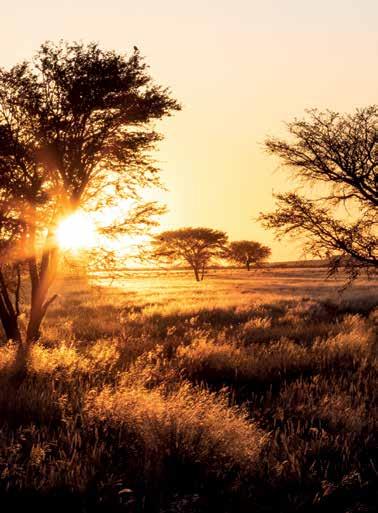




Find peace of mind when hunting with an African Dawn Outfitter







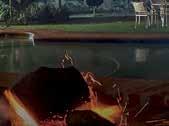

If you are serious about hunting in Africa, SIGN UP to Africa’s Greatest Hunting Magazine.







































free travel through Jo’burg & Cape Town













A-Z, one-point-of contact after your hunt, taking responsibility of your trophies, until they are home.


















BY JEFF MCNERNEY

With my heart pounding from both exhaustion and a slight sense of terror, I reached up to grab the bottom of the walking pole that Riley had extended down to me. I was hanging onto the pole and
grasping handfuls of wet moss with the other hand. My rifle was slung over my back like a Wild West horseman allowing both hands to be free. Once up, I crouched beside Riley and peered nearly straight up and around the rock wall trying
to get a look at our three rams without being detected. At that moment, I knew that if I had the strength and will, that I was about to experience the pinnacle of my 50 years of big game hunting in North America.
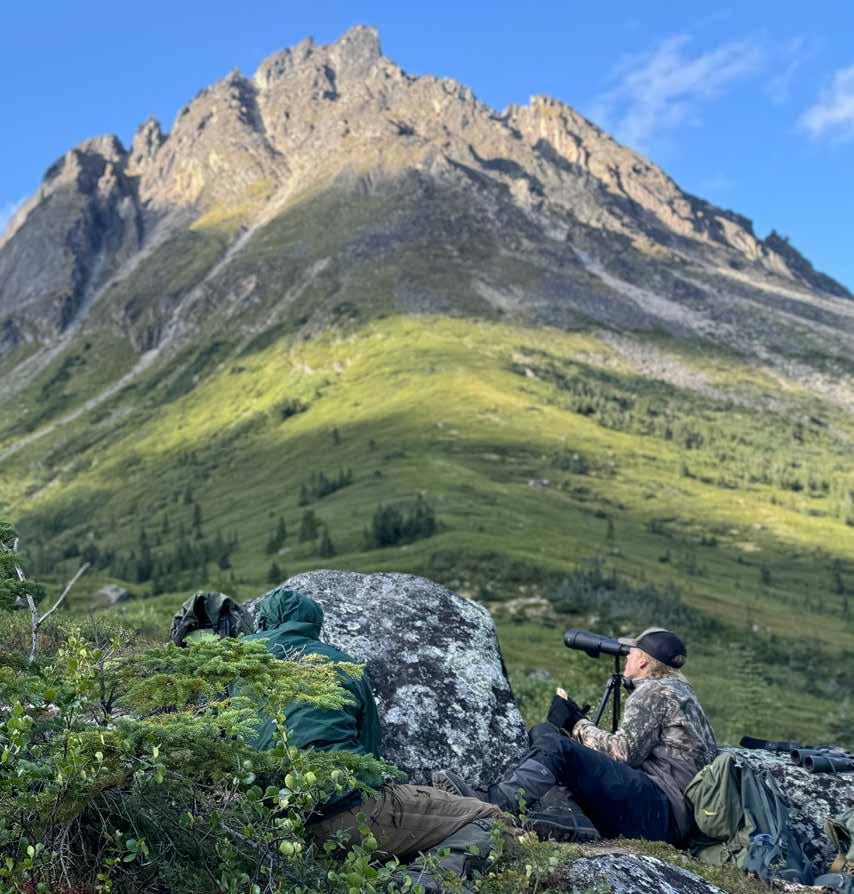
I started hunting pheasants and quail on my grandfather’s dairy farm in a small town in northern Oregon in 1974. After deer and elk hunting in Oregon and surrounding states for the next 30 years, a trip to a national Mule
Deer banquet in Utah led to my first paid hunt with an outfitter. Dan Montgomery from Wasilla, Alaska was at the show, and before I left, my hunting buddy Joe Wiggs and I were booked for brown bear hunts on the Alaskan Peninsula.
As the story goes, after a successful bear hunt, I told Dan to put me in for Dall’s sheep moving forward, knowing full well I would never draw. At least that’s what I told my wife. Six years later I drew a tag and was in the Chugach
Mountains of Alaska chasing Dall’s sheep with Hank Flatow.
Fast forward another nine years and I drew a Nevada desert sheep tag. My wife was starting to call BS on my “I will never draw that tag” line! Joe joined me in Henderson, Nevada as we hunted with Matt Blackburn in the Black mountains above Lake Mead. Ram number two was down a few days later. My temperature started to rise for more sheep at this point.
Darwin Cary had been recommended to me by a couple of outfitters that I had hunted cougars and moose with in BC the past few years. The hunt was booked with Darwin and I was on my way to Scoop Lake Outfitters on August 11th, 2024 to try for a Stone’s sheep.
Another of Darwin’s hunters, Alex Hudson, met me at the Whitehorse, Yukon airport and we were off to Watson Lake on the Alcan highway to take a short flight to Scoop Lake. Once at the main base camp, we checked the zero on our rifles with the help of Trina, one of the Cary’s daughters, and Devan Kirker, their son-inlaw. Darwin and Devan checked our gear, had a short chat, then without further ado, I was off to another small lake and met up with my guides Riley Kitchen from Alberta and Victor Evans from New Zealand. With my gear stowed in the panniers, we were off on a three-hour horse ride to my home for the next 12 days. Dawson Penner, who resembled a young Viking at 17 years old, greeted us in camp after the ride in.
To say that the scenery was beautiful in this part of

Northern British Columbia is an understatement. Riding horses along crystal clear creeks with the smell of subalpine brush and lodgepole pine permeating the cool mountain air while gazing up at the high spiraling jagged stone mountains is nothing less than soul cleansing. We knew there were some big rams in the area as the previous hunter had gotten into a group of six rams with several big guys in the group. The boys had named one “Golden Boy” for his yellow looking full curl horns and a dark gray cape. Enthusiasm was in the air for all of us.
On day two of the hunt, we glassed up a legal ram and made our way through the bottom of the valley jumping from one rock to another staying out of view of
the ram. I was glad I had pushed myself in my CrossFit classes jumping on boxes and carrying kettle bells. At 61 years old, carrying a rifle and a pack and trying to keep up with 20–35-yearolds as they skirt across moss covered granite was challenging to say the least. The days ahead would entail lots of ibuprofen for sore ankles and quads.
Once closer to our quarry, we scaled up the ridge to a better vantage point for the spotting scope. Although a good legal ram, he wasn’t Golden Boy and it was only the second day of the hunt. Riley continued to glass around the adjacent mountains from our vantage. As I watched the first legal ram we were sitting on and thinking “he looks good to me”,
Riley exclaimed he had other rams. Golden boy was with two other rams. Riley said to forget the ram that was almost in range. We were now on a mission as two of the “new” rams were big, and Riley felt that one may be a giant!
Down to the bottom of the ridge and into the cover of brush we went. A plan was devised to head straight up the mountain which was across the valley from where we glassed the first legal ram. We knew it would be tough to get in range without being detected...not to mention heading straight up the mountain. Riley, Dawson and I took off with Victor staying back at the original vantage point to keep track of the rams. With Riley leading, the three of us motored up the face. As we got within 600 yards the air currents shifted and we watched in exhaustion as the three rams made a quick exit over the top of the mountain and out of sight. Back at camp, Dawson whipped up some camp goulash with macaroni and moose sausage. Once again, we were filled with excitement knowing that we had options—and now there was another ram that rivaled Golden Boy. The next morning, after Riley’s signature eggs and bacon breakfast and black coffee, we were off to the same mountain to find our rams.
Further up the same drainage from the day prior, the group of three were again spotted. Unbelievably, they were feeding down in the sub-alpine and the chase was on. Horses were tied up and the rock-hopping in the creek bottom commenced. Although Golden Boy was a true trophy,


I began to wonder if I should have asked God for a little additional help on this one.
Riley felt like the other ram could be the biggest ram he had ever seen in his years as a sheep guide. The rams seemed content to take their time grazing on the moss and lichen. They slowly fed up and worked their way into the cover of the jagged rocks and cliffs. Later, back at Scoop Lake camp, Devan would refer to those upper cliffs as the “No Fun Zone” and I would be in total agreement!
Once the rams were tucked up in the high peaks and out of sight, we knew it was time to hit the giddyup-and-go button. Riley asked if I would say a prayer. I thanked the Heavenly Father for allowing us to experience this blessing and asked for strength and stealth for us to reach our goal. Off we went. This time it was me and Riley on the stalk with the other guys staying on a couple of vantage points in case the rams eluded us. The wind was right this time. Now we just needed to get close enough to pick them out of the rocks. As we scaled up the mountain, we were literally looking straight up trying to get a sense of their whereabouts. It seemed to me we were simulating rock climbers without ropes. I began to wonder if I should have asked God for a little additional help on this one.
Towards the upper part of the mountain Riley spotted the legal ram from day two. At 150 yards and horizontal, it was tempting to take the shot, but we knew we had a ram-of-a-lifetime somewhere up above us. We let that one walk. Suddenly we heard rocks rolling above us. As we came around a rock ledge Riley stopped and pointed nearly 90 degrees straight
up. Our stud ram, “Big Boy”, was looking down at us. I grabbed my range finder but it wasn’t necessary. Even though he was way up the mountain, the ballistic horizontal yardage was close. I had removed my bipod back at camp as I wanted my gear as light as possible. I threw the .280 Ackley across a boulder in front of us, shouldered the rifle in an awkward position and took aim. At the shot, dust and rocks flew up right in front of the muzzle. I should have had the little bipod. Amazingly, the big ram was still staring down at us. I jacked another round in. Now the gun wouldn’t fire. I handed the gun to Riley to see if he could figure it out. We were both rattled by now, and the ram was still looking. Finally, I was able to get a fresh round in the chamber. I tried to calm down and shot again. Dust flew up below the ram and off he went. I think we both wanted to cry.
Later, Victor showed us footage as he was filming from across the drainage. The bullet had hit a rock outcropping below the ram due to the extremely steep angle of the shot. Big Boy and Golden Boy were gone. We checked the zero on the rifle back at camp and confirmed it was still on. I put the extreme bipod back on the gun.
Four days later, and my bottle of ibuprofen was quickly dwindling. After the missed opportunity on day three, we left the two big rams alone and checked out other drainages. We hoped they would still be on the original mountain. Several days came and went. Dawson and Victor would pack the lunches daily with moose meat or peanut butter and jelly
sandwiches along with a few other goodies. The joke was they kept trying to sneak soy protein bars into Riley’s lunch. He had a real aversion to soy protein. Something about affecting your manliness?
We had days filled with glassing smaller rams and seeing ewes and kids, along with naps in the warm afternoons on top of the moss and lichen covered sub-alpine. Nothing came close to tempting us after the two big rams from the first three days of the hunt.
Day eight, my 61-year-old body was telling me to take a break. Along with my whining, Dawson had broken his back in a snowboarding accident the winter prior, so he was getting tired of the riding in the saddle. It was decided that Riley and Victor would check out a completely new mountain range, and Dawson and I would head back up the trail for an easy day glassing the mountain where we saw the big rams five days prior. Dawson and I had just sat down and started glassing not far from camp. At the same time, we both spotted rams on the face of the mountain. It was Golden Boy and Big Boy! The two guides were somewhere on a different mountain. Dawson sent a message on his inReach telling them to haul ass back. No response. On top of that, he was down to 3% charge on the inReach. We kept an eye on the rams as they fed under the cliffs about a mile away. Thankfully Riley and Dawson finally got the message and raced back on their horses and the hunt was on.
We all took our hats off and said another prayer for strength, stealth, and success. Riley and I

took off on the horses. The two rams had fed up into the cliffs (No Fun Zone). We tied the horses at the base of the mountain and took off on foot as fast as we could. Victor and Dawson stayed back until we had made it part way up, then they came closer to keep track if the rams went over the top. My guts were in knots—both from nervousness and too many days of Mountain House and camp goulash. There was no time to slow down and we went as hard as we could as we ascended the face of the mountain.
Near the top and in the cliffs, a
calmness seemed to come over us as we knew we were close. Riley and I both sensed that it was about to happen. As we looked up, a ram jumped up, followed by another and then a third ram came out on the cliffs several hundred yards straight up from our position. In an instant all three rams were looking down at us. The only shot was going to be in the middle of the chest as we knew they were about to bolt. Riley confirmed that the biggest one was in the middle. It seemed like déjà vu from day three. This time I had the bipod and it allowed better clearance for
the muzzle of my .280 Ackley.
At the shot, all three rams took off on a sprint. The middle ram had a hanging leg and within 15 yards he stumbled and fell over the cliff towards us, crashing down on his head and horns and tumbling further down.
It was over. The gravity of the moment was overwhelming. Riley hollered and jumped on me and we both embraced and welled up with the emotions of a great ram and an epic hunt. Indeed, it was the pinnacle moment of my hunting career. We could almost hear Dawson and Victor screaming from across the valley!
We knew he was a good ram, and as we got up to him, Riley was awestruck and I was flooded with a sense of relief and respect. The horns were intact, although a little frayed on one side. We were at the top of the mountain, and on the pack down the vertical chute, Victor and Dawson were “skiing” on the patches of snow and ice with a sheep on their backs.
We had sheep heart casserole with Crown Royal for dinner. Riley got one side measured during dinner and came up with 85”. He wanted to wait for morning when the spirits weren’t clouding his skills to tape the other side.
At 2:00 in the morning he got up and scored the other side and got 85 1/8” for a total green score of 170 1/8”. The horns were 41 2/8” x 41 3/8”. The bases were both 14”. The official net B&C score ended up at 169 1/8” on December 31st.
During the nine-hour horse ride back to the lake, we all were thinking about cheeseburgers and pizza. I was only in there for eleven
days and lost 10 pounds; the other three had been in the bush for a month and they were looking pretty lean. Riley and Victor were due to head back for another hunt. We met up with Devan at the lake, and in short order, he and I were in the plane on our way back to base camp. Tiffany and Wendy Cary cooked a mouth-watering meal for me and the other two hunters, Alex and Tom Kimble. They both
took good rams as well. We all enjoyed the serenity of the wild as we listened to the calls of the loons on Scoop Lake. I hoped I would be back for another hunt with the Carys as I thought about how to convince my wife Cassandra that we needed a mountain goat on the wall! Alex and I finally got those cheeseburgers back in Whitehorse prior to our flights home. WS



BY ALEXANDER SHARIF
Whether you admire or despise them, the shorthorned-stocky Himalayan tahr in his golden winter robe is one of the most handsome game animals that roam our planet’s mountains. A mature bull tahr is at his most imposing from late March to August with copious amounts of golden shaggy hair covering his neck, his brisket, and even part of his legs midway down to his back. His gait across the alpine landscape during the rut resembles that of an arrogant swagger as if the
alpine world is his kingdom. In my opinion, this golden winter cape is half the trophy and is a feature that only the mature males boast.
The allure of hunting tahr in New Zealand goes beyond the species’ beauty. It represents one of the few remaining affordable mountain hunts for the everyday working family man. For years, the idea of chasing tahr across the Southern Alps had lingered in my mind, but the right opportunity had always eluded me—until October 2024. That’s when I was

introduced to Stacey Anderson of New Zealand Hunting Safaris through friends Andre Van Hilten and Kelly Wiebe, both seasoned sheep guides from Nanton, Alberta. Having hunted with Stacey multiple times, they had nothing but praise for his knowledge and his down-toearth demeanor. I wasted no time in booking my hunt with him, securing the only available slot he had—March 3-9, 2025.
Before I delve into the story of the hunt, we will discuss some

of the characteristics of this interesting mountain game animal. The Himalayan tahr (Hemitragus jemlahicus) is endemic only to Nepal. However, transplant of 13 animals in 1904 by the Duke of Bedford to New Zealand has taken off so successfully that its population is estimated at 35,000 in recent years. This successful transplant into an open and expanding range mirrors what my late mentor/friend Dr. Valerius Geist suggested and successfully implemented for our bighorns around the town of Cadomin in Alberta. The horns configuration is heteronymos (meaning different looking), generally short, and sweep backwards in a regular fashion with tips pointing inwards

After breakfast, with a pack full of snacks and a heart full of hope, we hiked up above the hut to a saddle that posed commanding views of several drainages. It resembled sitting on the gates of heaven.
in mature males. Both sexes have horns, but those of the males are much longer and thicker. Any bull over eight years of age with 12” long horns and 8” thick bases is a worthy trophy. They evade predators by either fleeing or freezing still and concealing themselves in vegetation. Their sense of smell and hearing are good, but their eyesight is superb. They emit a high pitch whistle when alarmed. Their current CITES listings do not include the Himalayan tahr as threatened.
Extreme environmentalists such as Malcolm Douglas et al have called for their cull in New Zealand because of the so-called threat to the reduction of alpine landscape and flora. In recent times though, the position of the New Zealand government has become softer, viewing them as a survival tool for the species in case of an ecological disaster in Nepal. As I stepped off the airstairs of the Boeing 737 in Queenstown, Stacey was waiting for me with a firm handshake. He is a farmer
and a family man who owns and operates his hunting outfit solely by himself and just one guide; exactly the type of outfit that I fancy hunting with.
Once we arrived at his homestead in Wanaka, his wife Jene greeted me with open arms and said, “Welcome to our home.” Right there I knew I would soon get to experience some genuine kiwi hospitality.
On my international hunts, I always take my rifle but, in this case, I opted to borrow one from


Stacey to avoid the paperwork and the hassle. We drove out to a bench he had set up on his farm and I proved the 200-yard zero of his Tikka 30-06 by firing two shots. We then went to his main farm where he ranches over 2,000 head of sheep and 80 head of cattle. Watching him round up the sheep with his three dogs gave me a glimpse of his everyday life.
Prior to my arrival, I had made it clear to Stacey that I was only interested in an old bull and that age trumps size or beauty in my book. We got up at 5am the next day, and with a truck packed
with provisions, drove north towards the small town of Fairlie. Unfortunately, rain, drizzle, and fog were in the forecast, and it wasn’t until 1pm that we arrived at the mid-mountain hut which was to be our home for the next three to four days. The rain finally stopped, and we had a partial view of the mountains around us. The hut was located on a hillside with an interminable view that took my breath away. We quickly set up the spotting scope and within an hour, Stacey had located a group of six bulls bedded on rocks. None were mature and we kept on looking.
Within another 20 minutes, we had spotted a mature bull in a meadow above us. He looked regal with a good mane, but being the first day of our hunt, I decided to pass him up. We then hopped into his Mitsubishi truck and drove to a basin half an hour away. Glassing from the road was futile and we decided to hike up a ridge to a high vantage point to spot from. Near the top, I saw Stacey crouch down all at once—and I followed suit.
Once the spotter was set up, four beautiful bull tahr were visible. Again, Stacey aged them around six years old and we let them walk. More hiking and glassing yielded similar bachelor groups of tahr, but none to my liking.
We got back to the hut and made lamb chops washed down with a couple of cold Steinlagers, the perfect treat after a long day of hiking and glassing.
Next morning we woke up to calm skies and serene mountain scenery. After breakfast, with a pack full of snacks and a heart full of hope, we hiked up above the hut to a saddle that posed commanding views of several drainages. It resembled sitting on the gates of heaven. The sun’s rays were poking through the motionless clouds and the air was still with birds chirping and the flies buzzing through the flora. It was such an idyllic setting which eluded me as to why New Zealand had been the backdrop for filming The Lord of the Rings. We spent over three hours glassing from basin to basin, looking at small meadows in between the subalpine scrubland, searching for tahr. Surprisingly, we only saw one
small bull tahr, two red deer cows and one fallow buck. By noon, we decided to descend back to the hut, have lunch and go to plan B.
Plan B was to drive down to the valley floor, leave the truck and come up on a far ridge that would allow us to glass the country not visible from the hut.
By 4pm, we had gained enough altitude hiking on the ridge that would allow glassing. Unlike our mountain sheep in North America, the bull tahrs spend most of their time during the prerut in mid-mountain elevations. They are typically found in the higher elevations above the alpine during the rut only. This was key information that Stacey had collected over decades of hunting them, and one which allowed us to look for them in the right places. Local knowledge matters!
Around 5pm, we spotted a group of four bulls in the basin to the north. Approaching them would not be possible as the wind was blowing from our back. We hunkered down for about an hour, and during this time, the bulls descended lower, and the wind shifted from the west. We hastily climbed the ridge above them and by 6pm, were laying down and gauging them through the spotting scope. There was a total of 14 young, medium, and one mature bull which caught our attention. He had a gorgeous goldish-grey mane, and exuded dominance over the other bulls. The distance was around 300 yards, but the steep slope made it impossible to shoot from a prone position. We fiddled with our packs, and I got a semisideway position behind the rifle
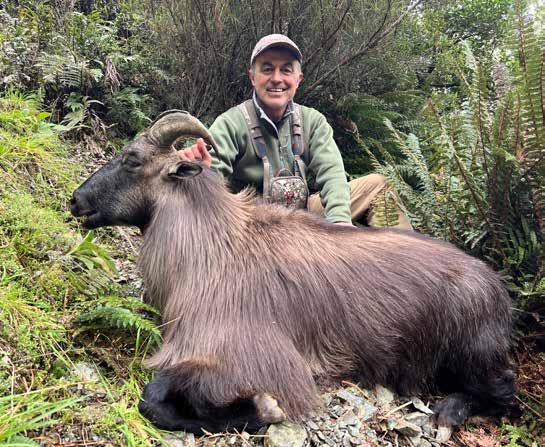
and waited for the target bull to separate from the rest.
With a short prayer and calm nerves, I squeezed the crisp trigger of the Tikka, sending a 150-grain spitzer towards the bull’s chest. We both heard the thump of the bullet striking hide. The bull made a high forward leap, and they all bolted downhill towards the creek and up on the other side through the tussock ledges next to the heavily forested hillside. I was in a bit of a shock as I had expected him to buckle. We sat there scrutinizing the terrain carefully through our scope as to where they had gone but it was extremely hard to see them in the thick vegetation. Finally, after about 30 minutes, we located and noticed four of the bulls staring at one particular tree. We suspected our wounded bull was laying there. Sure enough, Stacey found him under that tree with only his neck and part of his brisket visible. I did my ballistic math, got as comfortable as I could
and administered another shot which hit him hard and made him run downhill through the bush and collapse. What a relief!
The hike down the steep slope was slow and methodical as I was nursing my injured knees using an ACL brace and hiking poles. The magnificent bull was laying in the thick brush, yards away from the creek. High fives and handshakes were followed by a shot of whiskey from a mickey which belonged to one of Stacey’s friends who had been tragically killed in a helicopter crash (RIP). The photo session and the caping took a good one hour, and by 7:30pm, we were loaded and ready to climb up to the ridge to start our descent back to the truck. It had been a great day in the Southern Alps, and we had collected an eight-year-old, mature bull with a superb cape that exceeded my expectations.
Until this time, we had seen several wallabies, but I had averted shooting them not to break the

silence. Suddenly, I noticed a big male wallaby sitting in a green patch 200 yards away, and now that my bull tahr was in the salt, I had no hesitation and dispatched him with one shot. They are considered true pests and a big threat to the flora.
We arrived at the hut around 9pm and celebrated our success with more lamb chops and fermented hydration.
Next morning, we rose early, packed up the truck, descended from the mountain and hit the highway. It was a sunny day with wall-to-wall sunshine; one that made you want to live forever. I was able to see what I had missed on our drive to the area, and in particular, an unobstructed view of Mount Cook, New Zealand’s highest peak. What a spectacle! Along the way, Stacey continued educating me about the kiwi lifestyle and I enjoyed every moment of it.
Once back at Wanaka, we dropped the bull with the taxidermist, went home to clean up, and had lunch. In late afternoon, we hitched up the trailer with Stacey’s speed boat
perched on it, and around 6pm, were trolling the deep waters of Lake Wanaka for trout. We caught six beautiful rainbows, but only kept one for the pot. I volunteered to cook supper that night, preparing tahr shishkabob loins marinated in teriyaki sauce, together with poached trout garnished with butter, lemon, and parsley. It was heavenly next to some fine New Zealand wine.
The next morning, we grabbed two shotguns, a couple of boxes of shells with Stacey’s liver and white springer spaniels and drove to one of his leased properties. Separated 100 yards apart and the dogs in the middle, we terrorized the landscape culling rabbits. In about 90 minutes, we had dispatched over 25. The devastation brought by these pesty critters is beyond belief. Stacey culls over 3,000 of them on his leased properties and cannot even scratch the surface.
The next day signaled the end of my four day New Zealand safari, and the time had come to return to Queenstown to fly home. I thanked the Anderson
family for their hospitality, sharing with me their home and their local knowledge.
This had been a wonderful experience and had allowed me to not only enjoy a genuine free range mountain hunt and collect a mature tahr, but to also experience fishing and small game hunting, which I enjoy tremendously. As the Airbus A320 soared above the cheatgrass -covered hills of Queenstown, I made a promise to come back to this paradise and experience the magic of the Land of the Long White Cloud one more time. WS

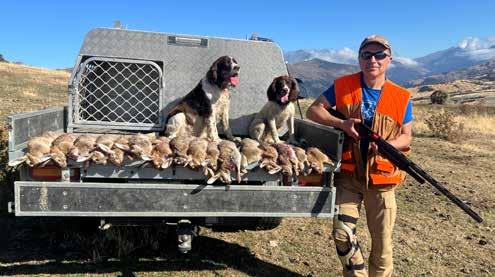


















Browning redefines Total Accuracy yet again with the new X-Bolt 2 and Vari-Tech stock. This new stock design is engineered with three-way adjustment that allows you to customize the fit of the rifle to meet your specific needs, helping you achieve consistent, tack-driving performance while retaining the silhouette of a traditional rifle stock.


























LENgth of pull
Internal spacers lock in length of pull. Adjustable from 13-5/8" to 14-5/8" right from the box, this system is sturdy and rattle free.


Two interchangable grip modules are available for the Vari-Tech stock: The traditional Sporter profile and the Vertical profile. Both let you optimize finger-to-trigger reach and control.





























Achieve consistent eye-to-scope alignment and a rock-solid cheek weld even with large objective lens optics. Six height positions offer 1" of height adjustment. COMB HEIGHT




BY ASHLEY MCENROE
PHOTOS COURTESY IVAN LOZANO, TEXAS A&M

“SCIENCE IS NOT ONLY A DISCIPLE OF REASON BUT, ALSO, ONE OF ROMANCE AND PASSION.”
STEPHEN HAWKING
This year’s G.C.F. Dalziel Outstanding Guide Award recipient Jorge Artee of Sierra El Álamo in Mexico’s state of Sonora was praised at the Sheep Show®’s Grand Finale Banquet as a huge-hearted man who approaches all clients with love to create a transformational experience out of desert sheep hunting. His 30plus years of guiding successful,
safe hunts were far from the whole story. In accepting the award, Jorge explained that guiding sheep hunts had been his boyhood “burning passion,” which his parents and three brothers pushed him to chase.
“Everything begins with a dream,” Jorge declared in accepting the Dalziel Award. It was all about “unconditional love,” Artee added. That love is so big he readily
shares it: Peers respect him, clients trust him, his family cherishes him. Beyond this, Sonoran desert sheep draw strength from him and the Artee family that have nurtured and liberated them.

Years ago, Jorge’s father and Sierra El Álamo founder Javier Artee and his sons began freeing desert bighorns from high-fence enclosures to roam their historic

range. These releases continue to this day and amount to hundreds of rewilded desert sheep. The romance of stately desert rams posed on Sonora’s prismatic mountains is the result of the Artees’ labor of love involving tremendous financial commitment and risk. In the end, if these desert bighorns and the family whose future is tied to them shall succeed, sound science must inform each decision. Yet, a tremendous knowledge gap exists. Scientific studies on the spatial ecology of desert bighorn sheep in Mexico are rare. The effects of habitat management, including establishment of permanent water sources, have not been widely evaluated in reintroduced desert bighorns. All this is about to change.
Thanks to grant funding from WSF, a binational team of researchers based at Texas A&M University and at Universidad Autónoma Agraria Antonio Narro in Saltillo, Coahuila, Mexico, is providing groundbreaking technology and expertise to
study Sierra El Álamo’s sheep in the wild. With data collected from sheep wearing GPS collars equipped with video capability, Sierra El Álamo is pioneering science-based desert sheep conservation and management that can be applied on a much larger scale throughout northern Mexico. The results released so far in this multi-year endeavor are already generating excitement and offer an example of how this novel technology can benefit other wild sheep populations.
Satellite telemetry collars for wildlife studies are nothing new, but the addition of video cameras is extremely uncommon in wildlife studies. Each collar costs thousands, then comes the expense of researchers gathering and evaluating the resulting data. With partial support from a $40,000 WSF grant, GPS collars equipped with video are being deployed on desert sheep released over a three-year period to ramble at will and join wild herds at Sierra El
Álamo. In 2022, the first 16 desert bighorns in the study, nine wearing video-equipped collars and the rest with GPS only, were set free. As this story goes to print, another 12 GPS-collared sheep, with one carrying video technology, are being prepared for release along with several other herd mates. An additional six to twelve collared sheep will be set free at the ranch later this year, according to Jacob Artee of Sierra El Álamo, with a total of 24 to 32 more animals rewilded. In all, the study will amass data from 28 GPS-collared desert bighorns, with 10 of them video-enabled.
Three times daily, in the morning, afternoon, and right before sunset, each collar’s camera clicks on, taking 15-second clips. While GPS data is transmitted in real time to reveal a sheep’s exact location, the videos are not available to the research team until the collar is recovered after a year riding around on a bighorn’s neck. Each collar is equipped with a
Instead of offering scientists a blip on a map, the video reveals details never seen before in the desert sheep world.
small device engineered to quietly pop the strap so it drops off at a specific programmed date and time after one year of wearing. The automatic drop off removes any need to recapture the sheep to recover the hardware. Satellite data allows researchers and the Artees to locate collars anywhere they land.
Dovetailed with data points showing precise topography and locations of each collared animal, the videos provide researchers a more holistic view of desert bighorn life in the Sonora Desert. Once compiled and analyzed, the three years of data encompassing tens of thousands of locations and hours of video will reveal the sheep’s secret everyday affairs, everything from their food and water choices, segregation of
the sexes, survivorship, daily movement patterns, lambing habitat, breeding activity, stressors, causes of death, distant migrations, and much more.
If you ever dreamed of living as an embedded spy within a desert bighorn community, this is the closest you will ever get. Clips posted of the operation so far show sheep foraging through a variety of food options, nibbling on cactus, tree bark and foliage, bedding down in caves, milling with their brethren, and gazing from high rock perches across the desert landscape. Instead of offering scientists a blip on a map, the video reveals details never seen before in the desert sheep world.
Texas A&M wildlife scientist Dr. Stephen Webb is the university’s professional lead on the collaring
project. “We are leveraging this study to inform the Artees’ operations and their on-the-ground sheep and habitat management decisions. For example, we can help them determine if their water projects are optimized, based on where we find the sheep and where they go on the ranch,” Webb says.
This information is invaluable to the Artees, who have entwined their future with the fate of their desert bighorns.
“We are releasing the sheep, but what is happening to them? How many migrate back and forth from one mountain to another? How many stay, and how many leave our ranch?” asks Jorge Artee. “It’s very important what’s happening now at Sierra El Álamo because it’s also documented on video. It’s going to be exciting to see the results.”
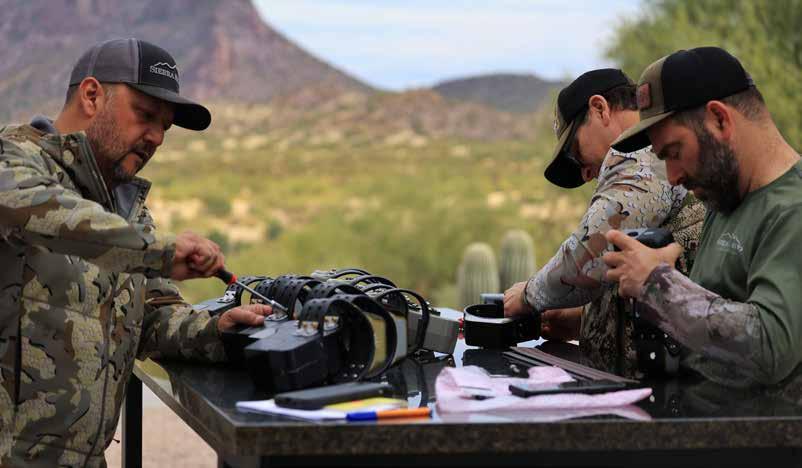

That excitement is building, with the Artees having recently shipped the first translocation’s video collars to Texas A&M.
Research findings, according to Webb, can help the Artees assess the best places to install new water resources or make habitat improvements at Sierra El Álamo. The study can also inform the Artees on the mechanics of future
desert bighorn releases—how many to set free at once, at what ideal time and whether it is best to open a gate and let the sheep wander out on their own, or to capture, transport and release them elsewhere on the ranch—the where, when and how of sheep rewilding.
“Whenever you move sheep from one environment to another, we
want to give them the best chance of success by providing appropriate habitat and other sheep to join in the wild,” Webb notes.
A chance encounter orchestrated by WSF led to this unique research collaboration. Back in 2019, Jorge and his brother Jacob Artee were attending the WSF-hosted 7th World Mountain Ungulate Conference in Bozeman, Montana, and encountered Dr. Alejandro Lozano, a wildlife biologist, researcher and professor at Universidad Autónoma Agraria Antonio Narro in the state of Coahuila. Hailing originally from Coahuila and holding a Ph.D. from Texas A&M–Kingsville, Lozano was already serving as a consultant on desert bighorn and other ungulate repopulation projects in his home state. Lozano wanted to study desert bighorns and other wildlife in Sonora. Jorge and Jacob had the ideal place and an immediate interest in Lozano’s research. It was a serendipitous meeting.
After the conference, Lozano started talking to his Texas A&M colleagues, and WSF ultimately approved a grant to support the collaring project that would be designed and managed by Texas A&M under Webb and Lozano’s supervision. Lozano’s son Ivan, also a graduate student at Texas A&M, added his drone expertise and is participating in the project by assisting in analyzing drone footage of the released sheep and the ranch, which added yet another layer to the study.
“This is how everything starts,” Jacob Artee notes. “We met in Montana, and from there everything connected.”
With WSF funding, Ph.D.

candidate Dylan Stewart of Texas A&M’s Rangeland, Wildlife & Fisheries Management Program is in charge of gathering and assessing the collar data, which will be parlayed into his doctoral dissertation and other publications to showcase the novel research. Now, with the video collars from the Artees’ first desert bighorn translocation in hand, Webb and Stewart are processing the digital film and preparing to publish their initial findings.
“We expect to get some very unique insight into the ecology of desert bighorn sheep,” Stewart says.
While the stream of new video is just arriving, the GPS data has been pouring in all along, providing researchers a daily trove of valuable insights.
“I can analyze the data in real time,” explains Stewart. “These GPS collars that transmit location data in real time allow us to react
and make quick management decisions, if need be. For example, we know immediately if a bighorn sheep is moving close to a domestic sheep herd.”
The collars at Sierra El Álamo also alert researchers when a bighorn does not move for eight hours, indicating it has died.
Mortality sensors in the collars send out texts and emails notifying researchers of a potential sheep death, Webb says. From there, the Texas A&M team alerts the Artees so they can investigate and head straight to the precise location where the sensor went off.
In one instance, the death signal arrived, and the Artees’ inspection indicated a likely cougar predation on the ewe. After receiving the deceased ewe’s collar, Webb and Stewart were amazed at what they witnessed. Video footage showed the sheep’s final resting location in late evening, and by the following
morning, the next clip revealed the lens covered in sticks. The ewe had been buried, most likely by the lion that had killed her.
“Cameras on the collars tell us so much more,” Jacob Artee says. “Is the sheep alone? Why is he there? What’s going on? The video tells the story.”
“This is a whole new realm,” Stewart declares. Dovetailing the video clips with satellitepinpointed locations, “We get unique insight into what a sheep is doing, where they eat, sleep and who they hang out with. We get glimpses into what they do when they move long distances from their typical range, then return.”
To date, the Artees have turned 340 desert bighorns out of high-fenced habitat and into the wild. In the first releases, some sheep stuck around Sierra El Álamo, while others meandered to parts unknown.

“That’s part of the program, so they can expand their range,” Jacob says. The latest bighorns the Artees set free, however, all stayed close to home. “This tells us that the water projects, feeders and everything we’re doing is right.”
One thing the binational researchers have gathered from the video collars and visual observations is that formerly fenced bighorns, once let loose, waste no time in joining their freeroaming brethren. Newly released sheep adapt to freedom by finding teachers from their own species in the wild, according to Webb. This visibly lessens the stress on the animal, as evidenced by the collar data and video footage revealing normal feeding patterns and mingling activity after joining an established group on the range.
“We can validate our bighornsheep behavioral models using video technology,” Stewart explains. Video can also lead researchers to revise their models when reality captured on camera
doesn’t stack up with theory. “We can either guess what a released desert bighorn’s behavior will be, or we can use video to actually see what happens in the field.”
Beyond building a mountain of new insights into desert bighorn sheep habits and health, the goal is to establish similar video collaring programs elsewhere, using Sierra El Álamo as a research model.
“The idea is to replicate the model elsewhere,” Jacob Artee says. “We would love to have these collars in other places around Sonora.”
Lozano has big dreams for the project as well. “My vision is to repopulate desert bighorns in all of northern Mexico where the habitat is most suitable. This will increase the economic opportunities for private landowners and also for communal landowners in Mexico who need a better quality of life, for these are very poor people.”
Ultimately, Lozano sees large desert bighorn herds roving unimpeded by fences between
the US and Mexico, which he calls a “conservation model of no boundaries.” With vast ecoregions hospitable to desert bighorns spanning Texas, Sonora, Chihuahua, Coahuila and other states in Mexico, this noboundaries approach is best for wildlife to thrive.
“The only way to improve conservation is to develop practical research to increase our knowledge,” Lozano says.
“WSF has made a great impact in northern Mexico with desert bighorns, and I would love to see more. We have a great opportunity to expand WSF’s vision for desert bighorns throughout northern Mexico.”
Stewart’s doctoral dissertation will publish the study’s findings upon his graduation in 2027. Beyond this, the Texas A&M team anticipates taking their results to the general public through publication in scientific journals, on social media, and in presentations to landowner groups,
“We can either guess what a released desert bighorn’s behavior will be, or we can use video to actually see what happens in the field.”
scientific associations, and school classes. At this year’s Sheep Show® Youth Wildlife Conservation Experience, Stewart served as a volunteer and wowed kids of all ages with videos from the collared sheep at Sierra El Álamo.
Meanwhile, the Artees applaud the separate WSF grant that supported expansion of the ranch’s water system. Over the past three years, the Artees have installed an extensive new network of pipes to reach 22 spots where wildlife can drink. The latest upgrade to the system is a main well and a pump, all solar-powered, that send water up to a huge holding tank built on a saddle between peaks at an elevation of 2,500 feet. From there, water flows by gravity through 10 miles of newly established pipelines to fill guzzlers across about 40 percent of the ranch. This replaces the old system requiring trucking water for miles.
Over the past six years, WSF has provided $115,000 to support Sierra El Álamo’s water infrastructure projects. Between the new water works and nutritional supplements—alfalfa and protein pellets—that the Artees supply daily, the area’s desert sheep, mule and Coues deer, javelina, foxes and birds are reaping the benefits. Rams with heavier curls dot the horizon. Quail, once scarce at the ranch, now flock by the hundreds. Species gather for water despite years of withering drought.
“We’re doing this for all the animals, and it’s working,” says Jorge Artee.
Yet, Jorge would be quick to admit that all this is no simple
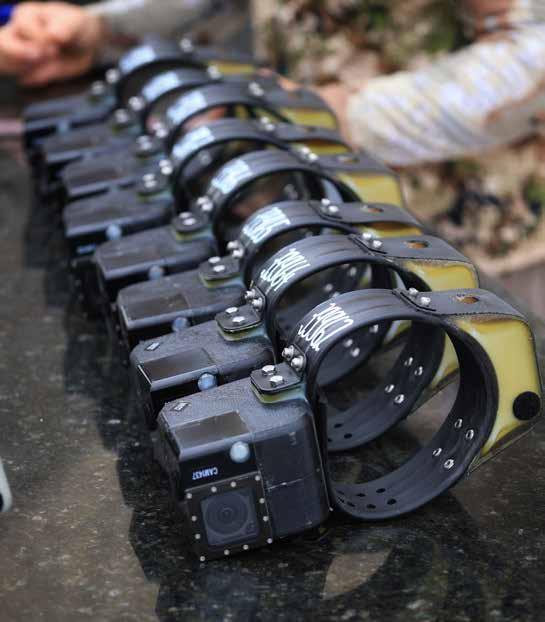
tale of pipes, tanks, collars, or cameras, or even guiding and hunting. It’s a love story, set in a magical desert and starring the beautiful bighorns God sent to inspire His people.
Check out the desert bighorn video compilation online at the QR code at right or at https:// tx.ag/Bighorn. WS
BY CHESTER MOORE
In 2024, the most widely circulated wildlife story was the illegal cloning and trafficking of a Marco Polo sheep by a Montana man.
The most widely covered wildlife story of 2025, by a large margin, is the cloning and de-extinction of the dire wolf, a species from the Late Pleistocene Epoch.
That Marco Polo sheep is alive at an undisclosed location under federal supervision, and the three dire wolves are under close watch at the sprawling Colossal Bioscience facility near Dallas.
Wildlife science has entered a new realm where science fiction is becoming a reality. And although this may seem no concern to hunter-conservationists, nothing could be further from the truth.
This technology is real, developing quickly, and being used at the highest levels of government wildlife agencies around the globe.
An understanding of what’s going on is paramount to securing the not-so-distant future of wildlife conservation.
At Colossal Biosciences in the Dallas area, three massive canids roam a private enclosure.

Romulus, Remus, and Khaleesi appear at first like robust gray wolves. However, their pale coats, heavy jaws, and behavior suggest a deeper lineage.
These are the world’s first “functionally de-extinct” dire wolves.
“This is what we call functional de-extinction,” said Matt James, Chief Animal Officer at Colossal.
“It relies on cloning technology, but we are using genetic engineering to try to identify close living relatives to an extinct species.”
The closest relative turned out to be the modern gray wolf. From there, scientists edited 20 key genes to recreate traits unique to Canis dirus, such as heavier bone structure, broader skulls, and metabolic characteristics aligned with the ancient apex predators.
“This isn’t a Frankenstein experiment. We want to be very measured and deliberate and ensure animal welfare,” James said.
“Twenty edits was this nice area where we could get the core phenotypes in, but also ensure positive outcomes and optimal welfare for the animals.”
James and his team wrote a 160-page animal care manual for
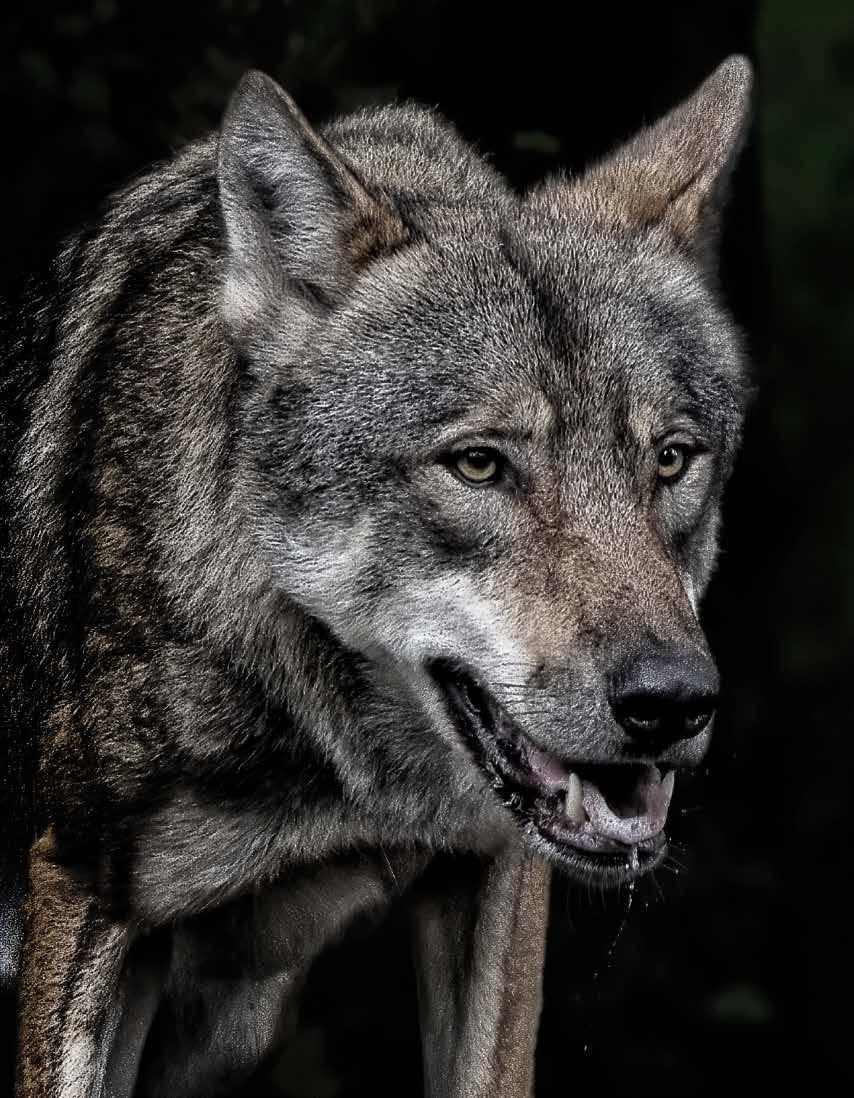

a species that had been extinct for over 12,000 years.
Their work involved sequencing a 13,000-year-old tooth from a museum in Ohio and a 72,000-year-old skull from Idaho, which provided 500 times more data than had ever been available on dire wolves.
“You can’t just clone from 10,000- or 70,000-year-old tissues because the DNA is no longer viable,” he explained.
“There’s a lot of genomic sequencing and computational biology required to piece all the broken fragments of DNA back together.”
Although media coverage has generally referred to this as “cloning,” there is much more going on here.
There are two issues at hand: cloning and gene editing.
Cloning involves creating a genetically identical copy of an organism. This process replicates the entire DNA sequence of the original, resulting in an individual with the same genetic makeup as
the original.
Gene editing, on the other hand, is a precise method of altering specific genes within an organism’s DNA. Using tools like CRISPR-Cas9, scientists can add, remove, or modify genetic material to correct mutations, enhance particular traits, or study the functions of genes.
Unlike cloning, gene editing doesn’t create a copy of an existing organism but instead modifies its genome in targeted ways.
While dire wolves represent a case of deliberate, high-profile de-extinction, another case shows how the same tools can be used with far different motives.
In 2024, Arthur “Jack” Schubarth entered into a plea agreement with federal officials for one count of Lacey Act trafficking and one count of conspiracy to violate the Lacey Act.
According to Forest Legality, the Lacey Act, initially created in
1900, is a United States law that bans the trafficking of fish, wildlife, or plants that are illegally taken, possessed, transported, or sold.
Schubarth and five others, who federal officials labeled in court documents as Persons A-E, were allegedly involved in various activities. Three are from Texas, one from Montana, and another from Minnesota.
Court papers cite the following claims:
*On or about January 25, 2013, Person A entered the United States with biological tissue from a Marco Polo argali sheep that had been hunted in Kyrgyzstan. Person A did not declare the animal parts upon entry.
*On or about October 6, 2015, Schubarth entered into an “Ovine Cloning Contract” to clone an unspecified number of Marco Polo sheep from the tissue. He provided a deposit of $4,200 for the cloning.
* On or about November 22, 2016, Schubarth received 165 cloned Marco Polo embryos at the Schubarth Ranch.
While cloning wildlife might be a shock to many within the hunting community, it has been a reality at the highest levels in the world of endangered wildlife management for several years.
*On or about May 15, 2017, a pure Marco Polo argali sheep male was born from the cloned embryos Schubarth named “Montana Mountain King.”
*Starting in 2018 at the latest, Schubarth harvested semen from M1\.1K to inseminate ewes via LAP-AI to create Marco Polo argali hybrid offspring.
Other notes from the case involved sending semen straws from MMK to Texas as well as transferring its offspring to Texas. This has resulted in numerous Marco Polo sheep hybrids being bred, sold, and possibly hunted.
Hybridization of wild sheep species is not a new concept. More than 50 years ago, Louis Stumberg of the Patio Ranch in Texas bred mouflon ewes with argali rams which at the time were present in a zoo to create what became known as the Stumberg Sheep.
The Texas Dall’s rams, which
are popular in exotic hunting circles, for example, are a hybrid of a mouflon and merino, albeit a distant one.
The difference now is these animals don’t have to be put in a pen together and bred anymore. They can be cloned from simple tissue or be artificially inseminated with sperm from cloned animals. And the search is on for more tissue, with numerous social media posts showing a desire to get tissue from species like the Altai argali.
While cloning wildlife might be a shock to many within the hunting community, it has been a reality at the highest levels in the world of endangered wildlife management for several years.
On December 10, 2020, “Elizabeth Ann,” a black-footed ferret, was cloned from the frozen cells of “Willa,” a specimen that
lived in the 1980s as part of a U.S. Fish & Wildlife Service project that involved scientists at Revive & Restore (a cloning conservation group), ViaGen Pets & Equine, San Diego Zoo Global, and the Association of Zoos and Aquariums.
“The Service sought the expertise of valued recovery partners to help us explore how we might overcome genetic limitations hampering the recovery of the black-footed ferret, and we’re proud to make this announcement,” said Noreen Walsh, Director of the Service’s Mountain-Prairie Region.
“Although this research is preliminary, it is the first cloning of a native endangered species in North America, and it provides a promising tool for continued efforts to conserve the black-footed ferret.”
In 2024, the Service and its genetic research partners announced the birth of two more
The Stumberg is a hybrid sheep breed created by a Texas rancher decades ago but it was done the old fashioned way-by putting animals in a pen and allowing nature to take its course.
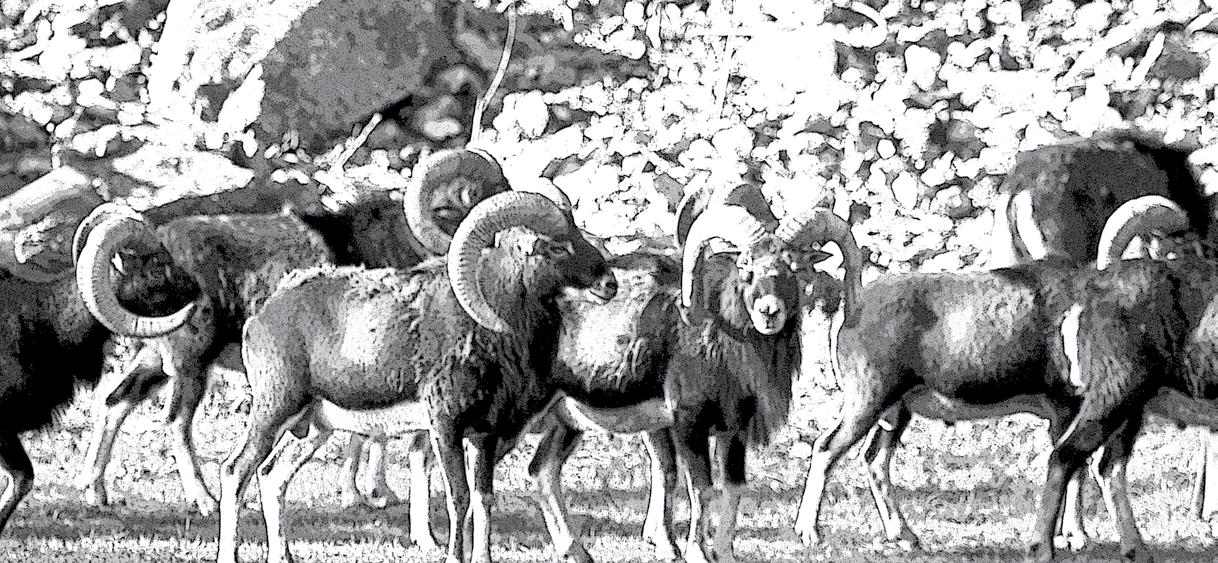
Technology is neutral. What is done with it can either do great good or have the opposite effect.
black-footed ferret clones—known as “Noreen” and “Antonia” both cloned from the same frozen specimen as Elizabeth Ann, who is alive and thriving at the ferret program’s headquarters in Fort Collins, CO.
Service officials said the application of this technology to endangered species addresses specific genetic diversity and disease concerns associated with black-footed ferrets.
“The Service views this new potential tool as one of many strategies to aid species recovery alongside efforts to address habitat challenges and other barriers to recovery.”
In February 2023, a cloned Przewalski’s horse, a native of Mongolia, was born at the ViaGen
Pets & Equine cloning facility in Texas and was moved to the San Diego Zoo Safari Park.
According to San Diego Zoo officials, “Ollie” is a clone of a male Przewalski’s horse stallion whose living cell line was cryopreserved over 40 years ago in the San Diego Zoo Wildlife Alliance Biodiversity Bank’s Frozen Zoo.
“The world’s first cloned Przewalski’s horse, Kurt, also living at the Safari Park, is the genetic twin of the foal, as he was born in August 2020 from the same stallion’s living cell line.”
Although ferret cloning is groundbreaking in several ways, it is not the first cloning of a wild animal at a governmental level. It happened with wild sheep back in 2015.
According to The Guardian,
researchers at Iran’s Royan Institute cloned a wild Isfahan mouflon using a domestic sheep as a surrogate mother.
“We have been working on the project for around four years,” project head Mohammad Hossein Nasr-Esfahan, told The Guardian.
“Conservation of wildlife is an important concept in developing countries, and so far, a few successful projects involving the birth of wild animals by interspecies cloning have been achieved worldwide.”
Gene Drives: The X-Factor Gene drives are engineered genetic sequences designed to spread rapidly through a population. By biasing the inheritance process, gene drives


can ensure that a particular trait is passed on to nearly all offspring. They are primarily explored for controlling or eradicating invasive species or disease vectors by reducing reproductive success or altering sex ratios.
Research, for example, is ongoing in the field of using gene drives to decrease the frequency of respiratory disease in domestic swine.
The Wyss Institute at Harvard University has been working on this topic with rats and has published several studies.
“Since the 1940s, researchers have thought of using gene drives to eradicate populations of pests and disease vectors and to reduce or eliminate invasive species that wreak havoc on natural ecosystems.”
“Deployed willfully in human intervention efforts, a propagated dominant gene modification could, for example, by biasing the production of one sex over the other over many generations, force a deleterious disease vector to decline and lose its dangerous potential.”
In an article published by
the University, Kohl asked an intriguing question on the other side of the equation.
“What if you introduce a gene-edited rat to reduce their populations on an island, and then that rat escapes the island, and you drive that rat species extinct?” Kohl says.
“That has consequences for everyone across the entire planet.”
At this point, the story might seem far from the shocking tale of an illegally cloned Marco Polo sheep or the creation of a “dire wolf,” but it’s not.
This all ties together, and hunterconservationists need to address these issues because, eventually, they will have direct implications on hunting and the species we pursue.
For decades, animal rights activists have advocated for “humane” methods of deer population control, focusing on contraceptives, which have been a failure.
In a conversation with a scientist involved in this type of genetic research, I inquired whether gene drives were being considered for controlling feral hog populations.
I was told it was not only possible but could serve as a “more humane” method of population control.
See, that “humane” language is already in use.
Just as artificial intelligence has radically changed the world in a short span, cloning, and gene editing will likely experience similar leaps in advancement and be employed even more in wildlife management.
In reality, Marco Polo sheep on ranches would, on the surface, present no more of a threat to wild sheep than dozens of different domestic varieties or species like aoudad.
But what happened here takes us into entirely new territory.
Is it possible that unchecked cloning could produced cloned specimens and their offspring inadvertently more susceptible
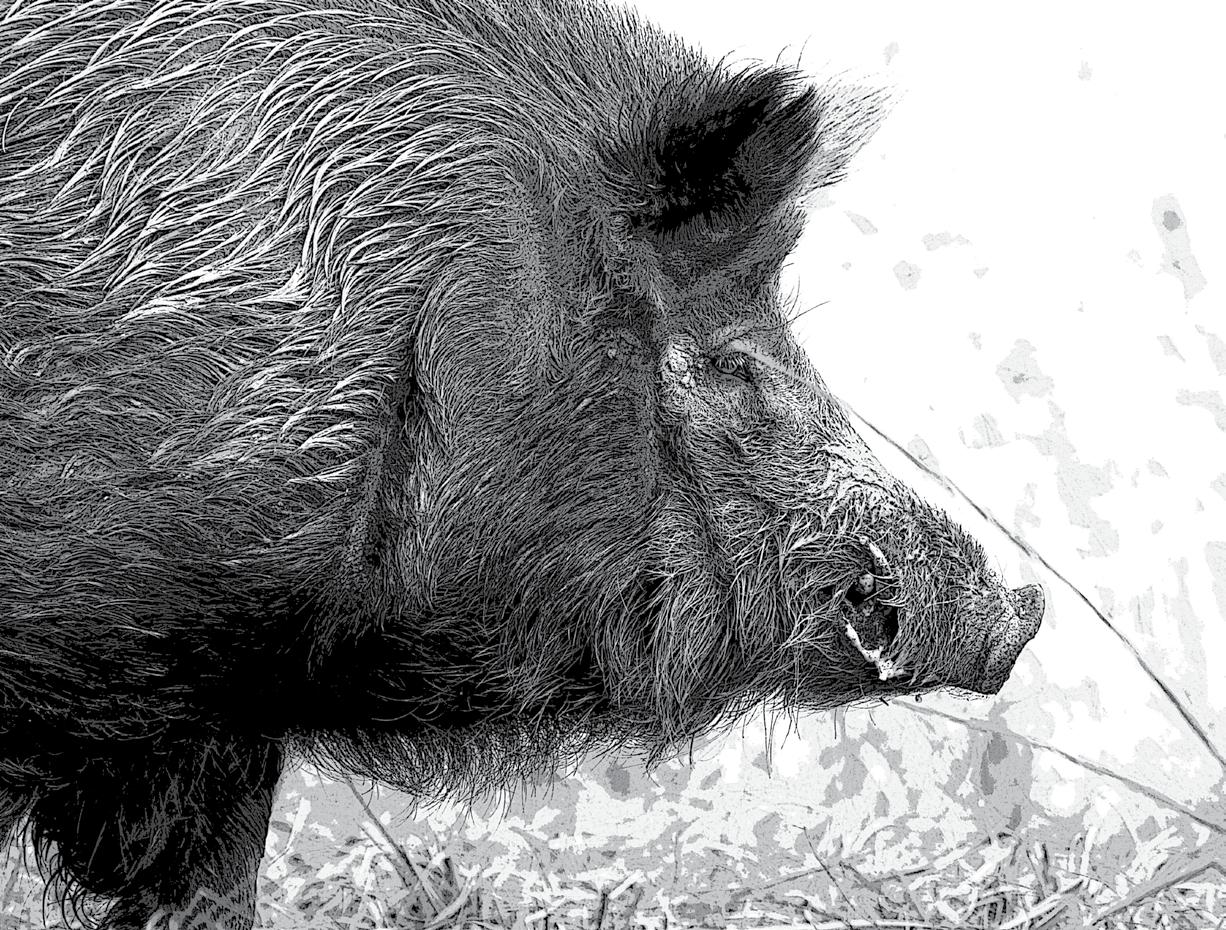
to health issues that spread to native wildlife?
If the private, underground cloning of wild sheep started in 2015, what about gene editing of herds of various animals?
Are there herds that have gene-edited specimens that might cause them to grow larger horns, grow more quickly, or have better reproduction but also have adverse side effects that could impact other wildlife?
Technology is neutral. What is done with it can either do great good or have the opposite effect.
Whether we like it or not, cloning and gene editing are now part of the equation for wildlife conservation, and they have
already been applied to wild sheep.
As a hunter-conservationist and wildlife journalist, my role is to ask questions, and so I have laid them out here.
If a man can spend a few thousand dollars and send argali tissue to Mexico and get cloned embryos sent back to his ranch, what other wildlife has already been cloned? What impact could it have on native wildlife?
And if scientists are already considering gene editing a “humane” way of controlling invasive exotics, how long will it be before there’s a push to make this policy somewhere?
Will the cloning process really
programs like that of the blackfooted ferret? Colossal Bioscience is already working on something similar with red wolves.
Could there be positive uses of this technology no one has yet considered?
Wildlife in America has recovered and thrived because of hunterconservationists leading the way with science-based management.
It’s time we engage this cloning and gene-editing issue with an open mind but also with the determination not to allow technology to overthrow common sense simply because it’s new and interesting. WS

“Record


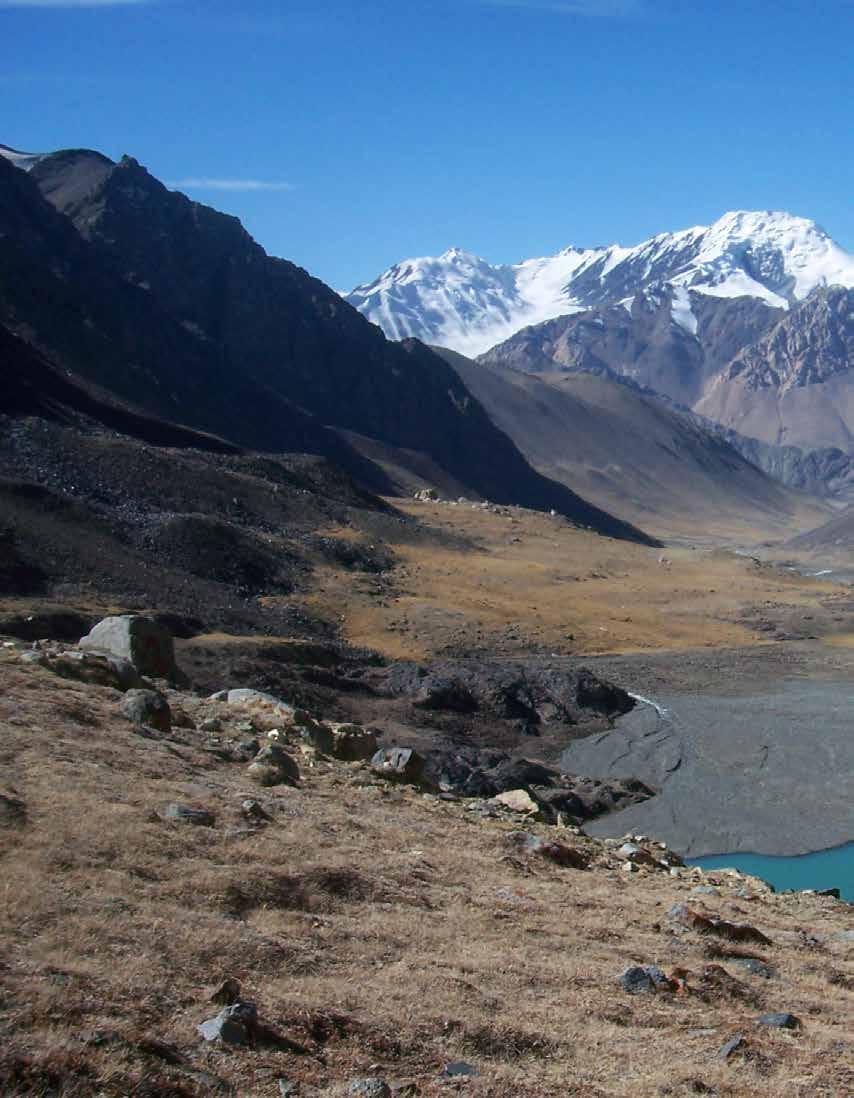
DON’T DELAY YOUR MOUNTAIN HUNTING ADVENTURES WAITING TO DRAW A SHEEP TAG!
BY JACK ATCHESON, JR.
• Ibex have the largest horn length per body size of any animal on Earth!
• The cost of hunting ibex is a fraction of the cost of hunting wild sheep!
• Ibex hunts require no drawing!
• There are four different forms of ibex type creatures: ibex, Spanish ibex, tur, and wild goats, 16 or more species can be legally hunted, not counting subspecies!
Ibex are an extraordinarily successful mountain animal to say the least. Their population footprint currently, combining Eurasia and Africa is about 30% larger than the whole North American continent! How did I make my choice on where to hunt ibex? Easy. I picked the ones I could afford to hunt and were found in hunter-friendly destinations. Advice you may wish to follow.
Let those thoughts settle in to your mind while I tell you a bit

about hunting this fabulous beast. My earliest memories are of mountains and the animals that lived in them. My dad, Jack Atcheson, Sr., was a pioneer of modern taxidermy and international hunting consulting. I grew up in his taxidermy shop, also our home, found in Butte, Montana. Through the shop doors came outfitters and hunters from local to distant areas with amazing animals in hand or a dream of hunting them, their passion of hunting became my life’s theme.
From 1960 to 1970, reliable transportation via commercial jets and four-wheel drive vehicles changed everything for the world’s hunters. It was also a time of new performance bullets/ calibers, optics, and hunting gear. With all these new gadgets came the marketing of these hunting products and promotions of destinations to take the newly equipped hunter. The new hunting industry was being fueled by inquisitive storytellers and their publications: Jack O’Conner,

Warren Page, and Elmer Keith, all famous shooters and hunters. They were family friends. Jack O’Connor was the one that talked about wild sheep and ibex, Warren Page couldn’t stop talking about big mule deer and the right rifle for the job and Elmer Keith was all about big bulls of any type and big guns! They all talked about Africa game and mountain ranges and the beasts inhabiting, all had wild names, a lot of nights. I could hardly fall asleep thinking about going there myself!
My dad and his buddies really planted a dream in me—the timid can stay at home was my theme. Ibex were and are a cheap date for the hunter wanting to see those places east of the sun and west of the moon. I started chasing mountain game in 1965, and I’m still at it today.
My first ibex camp was in Mongolia’s Gobi Desert just north of the Chinese bode, and I was fourteen times zones from my home in Montana. At this time, Mongolia was still a part of the vast USSR, and travel was the first challenge an ibex hunter faced in this neighborhood. It was June in the Gobi—the green-up period after a long winter—it was also a time I’d heard was good for concentrating old argali rams and big billy ibex. Our tent camp was

a yurt, the product of Mongolia’s nomadic people; a centuries old design—the original dome tent. Yurts are built to manage high winds, dust, snow, and rainstorms, and built to manage to manage a trip to hell and back! The interior was surprisingly colorful; the tent supports all painted in cheery colors and the floors were thick Asian rugs. To me it is very exotic and functionable. Camp had all

the amenities, which is a good thing because my wife, Cindy, had traveled to Mongolia on this hunting trip, and it was our honeymoon. Yes, I am a salesman… but international hunting trips are not just for hunters!
The terrain in the Gobi Desert is a mix of large salt flats, springs that run a short distance before re-entering the ground, rough treeless mountain ranges, and

“Far right,” he hissed. I shifted the cross hairs to that billy and touched off a shot. Galaa uttered a strange word (I am sure a Mongolian curse) and added, “You missed!”
short grasses cover whatever ground that is not rock. The elevation is 2,500 to over 5,000 feet. Ibex and wild sheep thrive in this landscape, perfect for escaping both two- and fourlegged predators.
Galbadrakh Baranz was my guide. Galaa as he was called, taught me about argali and ibex and how one might successfully hunt them. He went on to become Mongolia’s most famous hunting guide and my lifelong friend.
At first light, we drove our Russian Jeep towards an isolated mountain valley, which Galaa called the “Ibex Home”. Galaa told me an ibex horn will grow about three to five inches a year, an eight- to ten-year-old could be 35 to 38 inches, but they can live
over 15 years. Do the math, 45–50inch ibex is possible for many ibex species. Ibex Home was a hidden valley on the back side of a long cliff that paralleled the valley floor. The mountain range was rough volcanic rock. We stopped at a split in the cliff. Galaa set a slow pace with his hands clasped together behind his back—Central Asian marching stance I was to find out. The narrow gap snaked its way for a half a mile, and there we saw many ibex tracks in the sandy soil. It smelled like goats and pack rats to me. The gap gave way to an amphitheater about one mile across. Ibex Home was a spiral stairway of cliffs and grass covered benches; the pattern ended with blue sky 1,000 feet above.
The wind was in our face as the
rock warmed over the next few hours. That warm air would begin to rise, and the wind would shift to our backs and blow into the Ibex Home. We had to act quickly to still be unnoticed. Galaa dropped to his hands and knees and crawled forward to a large rock then peeked around the rock and began glassing for ibex. He showed great caution and warned me that the ibex was a very alert animal, more so than a wild sheep. If they see you, they are gone! He soon waved me forward, he whispered, “Fifteen males— largest two were twins.”
The twins laid under an overhang of rock. I was looking into the rising sun, the two ibex were in a shaded area and were hard to see. It appeared all the


billys were at least mature males. I was shooting O’Connor’s favorite caliber, a .270 with 130-grain bullets. I could see it was time to shoot. I quietly hand fed the first round. This Ruger held four rounds in the magazine plus a fifth in the chamber. I eased the rifle over the rock, found the twins in the Leupold 4-power fixed scope and prepared to shoot at the left male.
At that very moment, I felt a light breeze on the back of my neck. A moment later, all 15 ibex were on their feet, all moving, some jumped on top of truck-sized boulder. They all appeared to have horns the same size. I whispered to Galaa, “Which one?”
“Far right,” he hissed. I shifted the cross hairs to that billy and touched off a shot. Galaa uttered a strange word (I am sure a Mongolian curse) and added, “You missed!”
All 15 ibex were running in 15 direct directions and reminded me of an exploding flock of quail.
My shooting did not improve. I slammed the last shell into the Ruger and picked out what I thought was one of the largest ibex still in sight. The running ibex looked so tiny in that 4-power scope, it had to be over 350 yards. I held a foot over this billy’s nose and fired my last round. The billy hit the ground with a ball of dust and rolled hard up against a large rock. Wow, ibex hunting was really exciting, I was hooked.
I decided to hunt for Pamir ibex in the Pamir Mountains of Tajikistan, widely known as the roof of the world. Hunting in Tajikistan had opened only a few years earlier and this hunt would be a combo for Marco Polo sheep and ibex. When the Iron Curtain came down in the early 1990s, most areas that had been closed to outsiders were suddenly open to travel. We hunters as per usual were among the earliest visitors. The Pamirs were not easy to visit in the late
12th century when the adventurer Marco Polo returned to Europe by way of China and made the western world aware of the Silk Route and of Marco Polo sheep and ibex with huge horns. It is easier now but still a major journey.
Now I was there in the Pamir Mountains and it was midNovember and cold, -15°F, and no wind. The dawn was just breaking and faint light was revealing a landscape like nothing I had ever seen. There were no trees, grass grew only in the valley floor, and it was a harsh looking landscape. My altimeter showed 14,000 feet. The valley we were in was about 30 miles long east to west and about 10 miles wide. Mountains 18,000 feet tall encircled the valley. I had not glassed for more than 20 seconds, and I caught the first movement of the day, a herd of over 100 Marco Polo rams! They were working their way up a steep gravel face. I pointed them out to my guide; I was anxious to get things going!
When the Iron Curtain came down in the early 1990s most areas that had been closed to outsiders were suddenly open to travel.
My guide was an already famous Marco Polo guide, Toktomat, nicknamed Kuchuk in Tajik—the translation to English was Dog. He was tireless and very skilled at hunting, well named! Kuchuk and his helper chattered in Russian/ Tajik, and repeated Da, which means yes in English. They pointed at me and then at the rams, almost shouting, Da—who am I to say no to 100+ Marco Polo rams! My team spoke Hunter’s English, words like ram, female, left, right, one, two, three, and shoot, shoot. But we got
by fine, common hunters’ instinct is universal! We were looking for sheep and ibex, but with that many rams on the menu, it was now the day for sheep hunting. We started walking.
Late that afternoon, we made it to 16,500 ft. The last 200 yards, I had crawled on my belly to a rocky point that should place me within 200 yards of ram’s day bed. I had chosen Elmer Keith’s rifle pick for sheep hunting for this trip, a .338 Winchester Mag., shooting 210-grain Nosler partitions; it
was a caliber that just flat numbs about anything you hit. I had changed the magazine to manage four rounds down and one in the chamber. I hoped I did not need more than one round this time.
I peeked over the rock pile and the rams were still there all right, but at 15 yards! Of course, more than a few rams saw me move, and then were away in an instant and moving fast to the left. The calm herd had become a swarming mass of snow, gravel, legs, horns, and balls. I picked a ram on the right

outside edge, its horns seemed as wide as eagle’s wings...turns out he was 50 inches tip-to-tip. These sheep are sprinters I tell you! My only shot was quartering; I tapped the trigger. The bullet entered just in front of the left hip and exited between the right shoulder and ribs. That same bullet then entered the back of the right horn, then out the front side, finally snapping off 8 inches of the right horn tip. The ram slid 25 feet before he laid still. Too much gun, never in my book! At daylight the next morning, we were parked in a vehicle in a saddle between two large peaks. Good thing the Russian Jeep had low range gears; it was really laboring its way to 16,000 feet. The thin air suddenly got the best of the 6-cylinder engine, it flat powered out. Three of us had to step out of the stalled vehicle and we pushed it to level ground. The guide turned off the key with the truck still gasping, and so was I. A gas engine loses 5% of its horsepower for every 1,000 feet of altitude— me, too! We were in rougher terrain today and there was a maze of cliffs, slides, and benches on both sides of the vehicle. We sat glassing and drinking hot salted tea from the thermos. I never learned to like salted tea. More Tajik chatter and laughing; the Tajik are happy people in the wildest

of lands. I caught a movement in my right eye—in the passenger’s left side mirror! I focused on the movement. It was a herd of 50 male ibex walking, very nervously, only 50 yards behind the truck! I shouted ibex, and at the same time I pointed at the rear of the vehicle. My Tajik friends understood. We all jumped from the Jeep; the ibex band now were properly motivated to leave the area. They ran hard toward the nearest cliffs where they slowed, and once again, they all looked big and identical in size to me. I shouted, “Which one?”
Kuchuk was puzzled, then I pointed to the lead ibex and said, “One, two, three...” He understood and looked through the binoculars and said, “One, two, three, four, kiss, my, butt!”
I said, “What?”
Now markedly frustrated, he shouted, “Shoot, Shoot, one, two, three, four, kiss, my, butt!”
Now, I got it, so I shot Butt in the right shoulder. The .338 numbed him too. Two days of hunting and I was done. This mountain hunting is formidable stuff!
I had done two ibex hunts, one in early summer, one in November—and one of the beautiful things about ibex hunting—you can hunt some ibex species, somewhere, 12 months of the year.
It was April in Spain, a very wet and green time of the year. We left Madrid at noon after clearing customs and drove north towards the Gredos Mountain range where we would hunt Gredos ibex. We had stopped at a stone castle where we had an unbelievable lunch of baby lamb with local red wines. Our guide was one of Spain’s most famous guides, Jose Mallo. Jose spoke fluent English which he had picked up as an exchange student in the US. Jose has a special charm with both people and wildlife! My wife, Cindy, was the ibex hunter this time. Jose explained that we were going to hunt the north side of the Gredos Mountains and would be hunting in the national park itself. He explained that the Gredos ibex was the largest ibex in Spain. Hunting was legal in the park Monday to Friday. Like all of Spain, the ibex permit was valid for a three-day period—starting the next day at first light. The hunting conditions would be different from Central Asia’s Tajikistan and Mongolia where any size animal is legal rule. The official guides were called gamekeepers, as is the case in

most European hunting grounds. The gamekeepers live with the wildlife in their management areas year-round and know the land and game very well.
The hunting permits are for different aged and sized animals. The permits’ value was in three categories and price levels, and you pick your price range at the time of booking the hunt. Bronze low cost, silver mid cost, or gold highest cost in most cases. Cindy had a gold value permit—older larger male ibex only. Once the animal in the permit class is discovered, the gamekeeper will tell you to take that same animal. Upon taking an animal, the horns and bases are measured by your gamekeeper, it is documented and your permit is filled.
Jose went on to say it was green up in the mountain valleys. The
ibex males had dropped from the peaks to gorge on fresh grass. The gamekeepers had been watching a herd of old males that had been working lower and lower into the low country. They had eyes on one ancient male that was at the end of his life in this group. It was his time.
We left the villa an hour before daybreak, the trip to the old billy’s valley was on a black top highway for a way. A 2,000-yearold Roman cobble stone highway paralleled this modern highway— there had been many hunters on this trail before us! There were quaint villages every few miles. The road gave way to a rough dirt road and we entered a small village with narrow, one-lane streets. The main street ended at a point where two stone block buildings halted the way forward
for a vehicle but allowed access by horseback or on foot.
We started walking in dim light. The pathway into the mountain valley was a mix of mud, sand, and polished stone. The valley had fed people, livestock, and ibex for centuries. The rocky ground was cleared to form small pastures, and the cleared rock turned into durable, four-foot-tall rock fences. There were a few large oak trees in this pasture and they were surrounded by lush first growth grasses about six inches high. The mountains on both sides were steep and cliffy, while in between, it was covered in dense brush and taller oaks. The spring run-off was near flood levels and the streams roared; our approach was unheard by anything.
It was an easy grade for two miles,
and we moved at a fast clip, then the gamekeepers slowed and began glassing more. They had found where the ibex where at last light.
After a bit, we saw 11 male ibex grazing side by side. They moved forward quickly and it seemed they were trying to race each other to the next mouth full of green grass. Suddenly, two ibex paused their meal, reared to their hind legs, dancing with their front legs in the air, horns held high and then powerfully lunged forward, smashing their horns together just like rams! The others paid no attention to the fighters. I noticed one ibex that stayed off by himself, he was exceptionally large in horn, but he was withered to skin and bones—long winters and too many birthdays. I thought this must be the one they wanted Cindy to take.
The wind was light, into our face, and the roaring stream covered all noise—all good for a stalk! Cindy’s rifle was a loner, provided by Jose. The Mauser was a .270. Its removable clip held four down and a fifth round for the chamber. Yes, I like that one extra round… Stuff happens!
Cindy and Jose crawled to the rock fence and she placed the rifle in a position to shoot. Cindy is a good shot; she had practiced with a scoped .22 rifle. The practice paid off—one shot and the old ibex was hers. The ibex was skin and bones and we heard from the game scouts that they were afraid the ibex would not make it to Cindys arrival. He was 16 years old! We skinned the ibex and boned out the meat then headed for the vehicle. Later we ended up at a local taberna for salutes to the ibex and crew along

with Spanish Tapas. Spain has great accommodations, perhaps the best food on the planet, and has four distinct species of ibex and two chamois. Observers can head off on their own day trips or join the hunter in the field. I am excited to be booked for my next ibex hunt, a Beceite ibex in Spain’s Northeast region near Valencia.
Every ibex hunt in Eurasia takes you to exotic regions. Each hunt is so different. Nothing is like what you have experienced—the game, the people, the mountains—all will most likely exceed your expectations. More advice from me: the timid can stay at home. Start planning your first or next ibex hunt, now! WS


ADVENTURE-READY RIFLE SYSTEM
AVAILABLE IN 6.5 PRC FOR ALL MOUNTAIN SPECIES
SPECS
WEIGHT // 8.8lbs
STOCK // MDT HNT 26 with folding buttstock
BARREL // 22” Proof Sendero
OPTIC // Huskemaw Tac Hunter 5-20x50 with Dual Stack RFBC® Turret System
TRIGGER // TriggerTech Field
AMMO // Hornady ELD-M




BY WAYNE VAN ZWOLL

Missing a shot is humbling.
As sheep hunts claw their way toward six figures, a miss can also be expensive. Even home-spun chances come dear. What cost the thick-antlered whitetail you’ll never see again? While there’s no way to buy hit insurance, you can make hits more likely.
Shooting schools, once rare, have popped up on nearly every patch of earth with four-figure yardage and a bullet stop. Most peddle not only range access and coaching services, but rifles, optics, and ammo. Benefits to hunters: the chance to learn better techniques, ditch
bad shooting habits, and practice firing under field conditions. Scheduled range time nudges procrastinators to the line—hunters who’d otherwise fire half a box of cartridges annually to check zero. One school I attended directs students to bring 250 rounds for the four-day course.
“That’s expensive ammo,” some hunters harrumph. It is. But the value lasts. This is education. Hunting licenses and tags expire. Pickup fuel and air tickets are gone before opening day. As a youngster shelling out $5 for a deer tag and fueling a $300 sedan with 20-cent gasoline, I couldn’t have imagined
how expensive hunting would become. But it was impressed upon me early on that “education lasts forever,” and it’s never cheaper than it is as soon as you can get it.
Recently two friends told me about a shooting school they’d attended. “A great experience! We went twice because there was a lot to absorb. Besides, it’s fun!” In their 60s before enrolling, this couple had hunted in several states and a couple of countries in Africa.
“I admire such people,” says Darrell Holland, whose shooting school in Montana draws hunters from as far as Europe. “They want to learn. So they do. Their hunts
A hunter who wants to shoot better can. One who shrugs off coaching won’t.
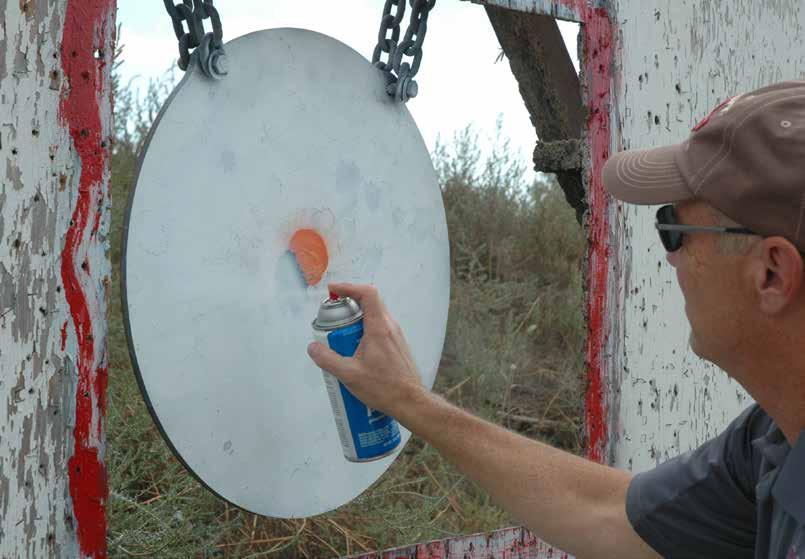
Long shots beg big targets, and lots of spray paint so hits can be readily seen through spotting scopes. are more productive.”
Attitude matters. A coach with tenure as a hunting guide observed: “So many hunters approach their guide or PH with the cocky claim they can kill game at any range. Training? Nope. They’re naturals, dead shots since as callow youths they prowled fencerows with one .22 cartridge and stern warnings not to waste it. When now they muff a shot at game, they blame the rifle, ammo, or scope, conditions or the guide. The notion that
marksmanship is an acquired skill maintained by diligent practice escapes them.”
Having shared the field with such fellows, I empathize. A hunter who wants to shoot better can. One who shrugs off coaching won’t.
Shooting schools owe much to long-range fervor, which has prompted range development where rifle fire was once off limits. In many courses, you can bang steel across bald plains at 1,000 yards and beyond. Verily, most game
is shot closer. But shooting far is still worthwhile. It confirms bullet impacts past your zero. It shows how landform affects wind, wind affects bullets, and mirage informs you of drift. Intelligent practice with a rifle, no matter the range, instills shooting habits and muscle memory that help you hit. Besides, success on difficult targets make every shot at game easier.
Increasingly, courses include simulated hunts on venues replete with brush, rocks, steeps, and dips.

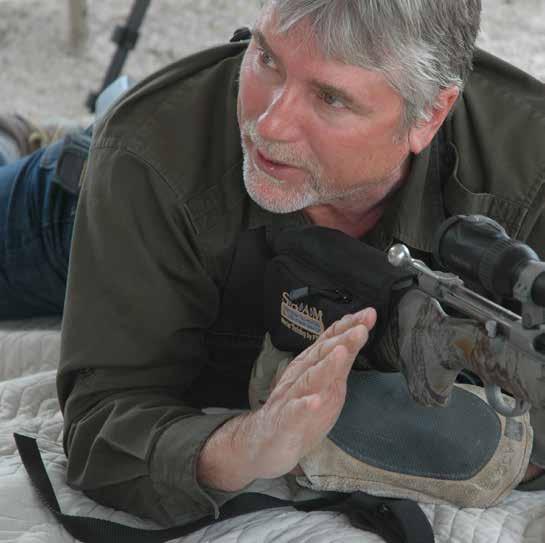
I attended a course Darrell Holland conducted in Oregon’s Coast Range. Distances ran to 800 yards, if memory serves—much farther than I’d fire at game. But prone with a sling (others used bipods), and practicing bolt-cycling drills, I improved my shooting. Steep shot angles and wind twisting through the hills humbled us. Class time clarified the distinctions between minutes and MILs and introduced us to scope reticles designed to make long-range hits easier. Like many schools, Holland’s furnished range cards for our rifles, based on our firing data. In Montana now, Darrell has his own 235-acre range near Billings. It’s a microcosm of western deer, elk and sheep habitat, with obstacles, angles, and wind that make hunters miss. Crosscanyon shots to 1,200 yards are possible; but Darrell puts students in hunting situations.Targets are not painted to contrast with the Big Empty beyond. Many are only partly exposed. Some may be easy to see standing, but too distant for an offhand poke and invisible from low positions. Students must spot each mark, range it, approach and fire at the optimal moment…. In other words, it’s a hunting drill, not just a shooting exercise.
Darrel Holland has included his students on his hunts in the U.S. and abroad. He brings real field experience to the firing line.
One of the most celebrated shooting schools these days is run by Tim Fallon and crew at his FTW Ranch near Barksdale, Texas. Tim bought the 12,000-acre property in 1996 for that purpose, and in 2005, conducted the first SAAM (Sportsman’s All-Weather, All-Terrain Marksmanship) course. Growth came fast. The shooting industry and individual hunters tapped the expertise of












































































































































































































































FTW coaches with advanced military shooting background. The Army, Navy and Marines sent Special Ops units there to train. Now with 35 shooting ranges and shot distances to 2 ½ miles, FTW conducts about 46 schools annually—“35 SAAM and a dozen military courses,” says Tim.
I’ve attended three courses at FTW, which includes on-site housing and all meals with its four-day SAAM Precision and abbreviated, two-day Precision Prep courses. “Students fire about 240 rounds on the full course, 160 on the refresher,” says Doug Prichard, an instructor now in his 20th year at the ranch.
Beyond safety protocols, firstmorning classroom instruction includes a short-course on marksmanship fundamentals, ballistics, and specific shooting gear for the course. Live-fire drills focus on position, wind doping, scope manipulation, and technical assists for hits at distance. Students fire across several venues, at targets of various sizes, near and far, in a range of conditions. Timed events and hunting scenarios teach performance under pressure.




FTW offers other curricula, including the “Field to Fork” class that impressed a woman who took it recently: “Great fun! And lots of useful instruction.” I’m sweet on the SAAM Safari option, a course that simulates African hunting with animal-face targets in natural habitat—including a partly submerged crocodile and life-size buffalo and elephants that pop into view close as you ease through cover. You’re expected to use appropriate rifles and loads—I once carried a .500 Jeffery for the dangerous game—and to fire from unsupported positions. Buffalo and elephant faces driven fast on rails






































of one day using




my Boswell Custom to complete my North American Grand Slam. After applying for years I won the lottery and drew a California Bighorn tag in Oregon as a nonresident! My Boswell rifle was dependable and exceptionally accurate on this hunt of a lifetime. Steve is the best. His customer service is unmatched and


















toward you test your ability to aim, fire, cycle, and deliver accurate repeat shots in a hurry. Hunters are encouraged to bring a “medium” rifle for use on plains game targets that demand precision at distance. For the two rifles, pack 260 rounds of ammunition.
“Beyond helping hunters learn and refine shooting skills,” says Tim Fallon, “our SAAM courses urge ethical hunting. We teach long-range shooting, but we don’t promote long-range hunting. We think hunters are at their ethical best when they limit range to their own ‘one shot, one kill’ distance for the conditions.”
Rifle manufacturers find shooting schools can put their wares in the hands of prospective buyers.
Bergara runs a two-day Western Hunter course at Queen Mountain Ranch near Evanston, Wyoming. Like almost every shooting school, it emphasizes safety and reviews the fundamentals of marksmanship, then touches on the basics of external ballistics. Like many, it includes a section on digital devices and apps for long-range shooting, demonstrated on targets to 1,000 yards. Live-fire simulated hunts follow.
Bergara also has a three-day course at Belt Mountain Lodge near Great Falls, Montana. It’s run by industry veteran and experienced hunter Chad Schearer and his family. An advanced course follows as an option. The 1,400-yard range gives Montana wind plenty of time to snare your bullets! Meals, lodging, and an airport shuttle are included. To make a vacation out of school, the Schearers offer flyfishing, with guide and drift boat, on the nearby Missouri river. Also prairie dog shooting. Day rates apply to both.
Snowy Mountain Rifles, a




semi-custom shop I’ve visited in Hamilton, Montana, offers a shooting school too. Like Bergara, the company furnishes rifles, a program that brings new customers. One wrote: “After buying my second rifle, I signed up for the Long Range [course] and quickly found out I had a lot to learn. The instructors [helped every student according to his or her need], and by day three we were [using our own data] and hitting a target just shy of a mile. The team at SMR is absolutely first class…I highly recommend their shooting school and even more so, buying one of their rifles...”
Best of the West, in Wyoming, offers individual instruction with its semi-custom rifles and runs group classes on demand. Shooting is at the nearby Cody range. “I had never taken a shot at over 300 yards before I used one of these rifles and applied the long-range techniques taught there,” a fellow told me. “Now hitting at 1,000 seems easy.” He was so impressed he helps bring shooters to Best of the West.
Known for a long-range focus, Gunwerks also conducts shooting schools near Cody, where it now has a factory dedicated to building rifles for long shots. I visited after seeing a clip of one in action. There were 181 minutes of lift on the elevation dial of the 5-25x Kahles scope. The rifle, a Gunwerks HAMR in .375 Cheytac, was pointing 558 feet over the distant white dot—a sizable steel plate —when it coughed. The bullet was aloft long enough to burn toast. A light breeze nosed it 20 feet to 9 o’clock. Several shots and corrections later, though, the plate shivered from a center hit. From two miles!
Engineer Aaron Davidson first applied his talents to firearms 20 years ago. After earning a patent


TEAM HAS BEEN DEDICATED to getting it right for more than 20 years, something we prove every year by drawing some of the most coveted and competitive tags in the world.
$55 per state
$10 per species
EXAMPLES:
If you want to apply for Sheep in three states, your fee is $195. If you want to apply for Sheep, Mtn Goat, Elk, Deer, and Antelope in one state, your fee is $105.
$10 per drawing regardless of the amount of tickets purchased
As an added bonus, we will also apply your children under 18 for FREE in the states that you’re applying in as well as offer 50% off rates for your spouse and your children over 18.

for a ballistic turret in 2006, he built Gunwerks around a rifle he designed. “Gunwerks helps shooters hit at extreme range,” he explains. “It’s our singular focus.”In 2010, the company introduced its G7 ballistics program, a year later its BR 2 range-finder. A Revic optics line followed.
After its Cody factory was movein ready in 2020, Gunwerks began building its own GLR action, on which its rifles are now based.
Carbon-fiber-wrapped barrels, cutrifled and hand-lapped, are bored for popular long-range cartridges, including Gunwerks’ own 7mm LRM. The company has also designed and produces its own stocks, specifically designed for prone shooting.
“We want shooters at our Long Range Academy to try Gunwerks rifles,” says Aaron. “So we invite enrollees in our L1 and L2 courses to put wear and tear on our rifles, not theirs, and to use our handloaded ammo.” These courses can be slated consecutively for one visit. Students learn the Gunwerks shooting system, then establish and confirm ballistic profiles for their loads. At the range, they use Kestrel devices and laser rangefinders to calculate corrections for drop and drift in minutes and MILs.
Gunwerks runs a three-day L3 class “on the mountain” where steep shot angles, almost limitless distance and wild winds bring to mind sheep country. They humble the best shooters. At my visit, focus was on a new Nexus switch-barrel rifle. I used it to pester steel at 800 yards in a frisky wind that chased even sleek, leggy boat-tails off plates broad as manhole lids. Still, I had to agree with Davidson: Pounding steel far away is fun! And skills refined at distance make you a more effective hunter—on the hill, on the veldt or in the woods—whatever the shot distance. WS
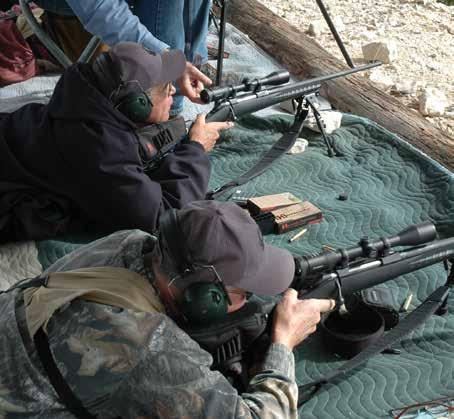
Before committing to a shooting school, check its website and compare course info with that of others. Determine what you most want to achieve. Match curriculums to your needs. Comparing prices, ask: Is lodging included? The night before the first day and after the last? What about meals? Daily rates range, roughly, from $800 to $1,400. FTW’s fees edge the top of that range, but when you consider not just the varied and outstanding shooting venues, the excellent instruction—and the delicious meals and evening drinks and clean, comfortable cabins on site, all included—the cost seems quite reasonable!
Ask if you’re expected to use a furnished rifle or bring one. If your own, what’s the best type for the course? Chambering? What about ammo? If available on site, how much will you be charged for it? If not, how much should you bring? Is a spotting scope available for each shooter or pair of shooters? Must you bring a bipod? Sling? Shooting sticks? Are gun-cleaning supplies available at no charge? Ask, of course, about open dates—also about class sizes, instructor backgrounds and how many students per instructor to expect. Request a couple of references. Share information about yourself. If you plan to bring a braked .378, check first. Even in small classes, shooters may be closely spaced, prone, on the line. If the blast of a powerful load through a brake doesn’t bring howls and growls, a peppering of dust, debris, and powder residue should. Questions about firearms protocol are never out of place. WS




Pacific Islands


Savannah elephant Botswana 101 and 77 pounds
Robert Fortier
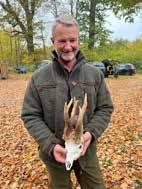
European roe deer
United Kingdom
Total score 6613/16
Mikkel V. Olesen

Rocky Mountain elk Arizona, USA
Total score 421
Rick Warren
The Rowland Ward Fair-Chase Hunting & Conservation Award is a solid silver medal given once a year by Dallas Safari Club and the Rowland Ward Foundation for an outstanding animal hunted under free-range, fair-chase conditions. One award is given for each of four regions: Africa, Americas, Asia and the Pacific Islands, and Europe.
To qualify, the animals must have been hunted in accordance with Rowland Ward’s Guiding Principles on Hunting and Conservation. The winner must be a strong supporter of conservation and sustainable hunting and exhibit exemplary ethics in the field.
For more details visit

by Chester Moore

The Wild Sheep Foundation’s (WSF) Chapter & Affiliate
Summit XVII, hosted by the newlyformed Southeastern Chapter in Ft. Lauderdale, FL, June 4-6, was more than just a gathering.
It was a declaration that collaboration is the key to conserving wild sheep.
Drawing chapters, affiliates, researchers, and conservationists from across the United States, Canada, and Mexico, the Summit delivered a compelling message of conservation and hope for the future.
Friday began with welcoming remarks from Sam Cunningham,
followed by recognitions from WSF President and CEO Gray Thornton and historical reflections from Patrick Morse on the Southeastern Chapter’s emergence.
As the day’s discussions unfolded, it became clear the event would highlight both emerging science and the people behind it.
Other Highlights included:
• Dr. Kate Huyvaert showcasing her lab’s work on wild sheep disease testing diagnostics with field tests. She was also presented a check for $50,000 from WSF for the Rocky Crate Endowment Chair.
• Terry Meyers addressed permit waivers to separate wild and
domestic sheep grazing and success on that topic in Colorado.
• Kevin Martin shared on National Forest & BLM Planning
• Angleo Baio reported on the formation of the WSF Southeast Chapter Conservation Corps.
• Alejandro Lozano shared groundbreaking GPS and video collar data from Mexico’s desert bighorn sheep reintroduction project in Sierra El-Alamo, a landmark in US-Mexico cooperation.
• Kyle Stelter presented on Psoroptes treatment trials.
• Travis Jenson covered Utah’s successful nursery herd development and predator control strategies.

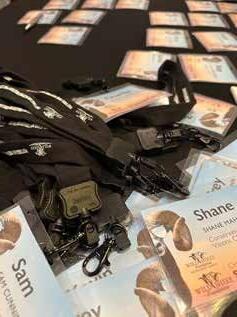
• A roundtable on predator management featured contributions from all attending regions.
• Renée Thornton and Brandi Love delivered an update on Women Hunt®, underscoring how mentorship and inclusivity
are transforming the face of conservation.
The day closed with Bryan Bartlett and Mike Bouton presenting on public engagement strategies, followed by the drawing of an Argali rifle.
Saturday continued the Summit’s momentum with fieldfocused presentations.
• Kyle Stelter kicked off with “1Campfire,” a storytelling initiative aimed at bringing outdoors lovers together under the banner of stewardship.
• Clint Bentley detailed emergency water hauls and translocations in Southern Nevada.
• Sam Cunningham returned with a report on the successful Franklin Mountains State Park translocation.
• Bryan Bartlett unveiled innovative guzzler designs.
• Gray Thornton facilitated a fundraising roundtable discussion,

tying grassroots efforts to largescale impact.
• The PRAB panel, featuring Tim Schommer, Helen Schwantje, and Chris Barker, explored new healthy sheep publications.
Late-morning highlights included:
• Sam Cunningham on Aoudad policy direction.
• Grant Chapman discussing Alberta’s harvest and management models.
• Shane Mahoney provided an educational and challenging update on the Wild Harvest Initiative.
• Bill Davis presented on the Arizona Desert Bighorn Sheep Society’s Rhinehart/Newlon Project, a water catchment that will connect two key areas of desert bighorn sheep habitat.
Federal land policy captured the audience’s attention as Kevin Martin delved into the critical need for engagement in federal planning processes, particularly as they impact wild sheep habitats.
“The agencies don’t always know who we are,” he said.
“And we haven’t always been super engaged.”
Through a detailed review of Forest Service and BLM resource management plans, Martin highlighted how early involvement enables influence at key decision points and a focus on public land units that contain bighorn sheep.
“You can go online and find letters from Arizona or Nevada from the original plans back in, like, the 80s and 90s and tie that into how we carry it through into the future,” he said.


Alejandro Lozano presented groundbreaking findings from Mexico’s desert bighorn sheep reintroduction project. Using GPS and video collars on 16 sheep, a special project involving Texas A&M University tracked the movement and behavior of the sheep following translocation.
“Females took four to five days to settle down after exploration, and males six to nine days,” he explained.
The study uncovered fascinating behavioral insights, such as how sheep used caves for thermal regulation or sought out specific terrain features to escape extreme heat. Perhaps most memorably, video footage revealed a sheep using a unique foraging technique:
“These females are hitting the cactus against the ground to break it up and then eat it,” Lozano said.
This marked the first time such behaviors have been documented with this level of detail in the region.
“This national program will have many eyes and many ears behind it. It is documented with real statistics, with satellite necklaces applied to wild animals,” he said.
One of the most poignant moments came from Renée Thornton and Brandi Love of Women Hunt®, whose presentation revealed how mentorship, personal healing, and inclusion are reshaping the future of conservation.
Love emphasized the impact of their graduates.
“These women are giving back in many different ways, whether it’s on the ground volunteering and building things or financially,” she said.
Renée highlighted another effort: the Rubye Mayflower Blake Legacy Fund.
Launched last year, the fund’s mission “is to empower women who are recovering from traumatic experiences by providing them healing
opportunities in the outdoors.”
The strength of the community built around Women Hunt® was highlighted at the Sheep Show®’s Beer & Bubbly social event, held just before the banquet hall opened.
“It was super loud, super energetic, and very positive,” Thornton said.
Yet perhaps the most symbolic moment came with the announcement of the “Coming Home” project.
A new translocation plan aims to return California Bighorn Sheep from Oregon to British Columbia, where the lineage originated 70 years ago. The crowd responded with overwhelming support, raising $200,005 on the spot.
“It’s not just about moving sheep,” said WSF CEO Gray Thornton.
“It’s about honoring history, giving back to a region that helped so many others, and showing what happens when we stand together for a species we all care about.”
From innovative disease diagnostics and predator control to international reintroductions and female-led leadership, the Summit showcased what happens when tradition meets innovation.
And although there were plenty of jokes throughout the weekend regarding the lack of bighorns in Florida’s Everglades and mangrove flats, there’s a new chapter in the region committed to conserving them out West and beyond.
And a room full of dedicated, focused people gathered there in the Sunshine State to show there are no borders when it comes to a desire to Put and Keep Wild Sheep on the Mountain®. WS


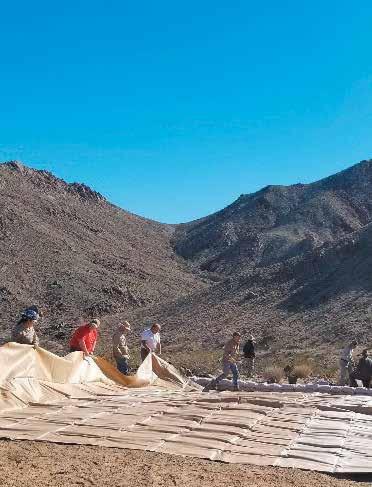
As we are looking forward to deer, bird, bear—and especially sheep—season, CA WSF is focused on what’s ahead: more water, more habitat, and more wins for wildlife.
In 2024, our “Give A Lamb A Drink” (GALAD) program made incredible strides with:
www.cawsf.org cawsf@cawsf.org
• Four new Raincatcher Wildlife Water Systems (RWWS) installed.
• Repairing and restoring several older systems.
• Installing the first of our 90 State Lands Program RWWS water systems in the Cody Mountains.
Each of these RWWS systems supports 45-75 bighorn sheep and costs $35,000 in equipment plus hours of volunteer labor.
In 2025-2026, we will continue installing four new RWWS in the State Lands Program as well as additional repairs and replacements.
CA WSF is actively monitoring the construction projects to ensure new wildlife over-crossings effectively protect bighorn sheep during and after construction.
CA WSF continues to host Sheep Summits bi-annually uniting agencies and partner non-profit organization advocates.
The many years of co-hosting the CDFW Desert Sheep Hunter Orientation has always been successful and continues again this year.
THANKS TO YOU!
All this is made possible by our generous donors and members. THANK YOU!
Special thanks to Kuiu and Eastern Chapter of WSF for their 2024 installation support!

by Mike Bouton Executive Director, WSF Midwest Chapter
Last March, the Midwest Chapter introduced a new awards program called the Roosevelt American Spirit Conservation Awards.
The Roosevelt American Spirit Conservation Award represents individual courage, dedication, optimism, honor, and compassion—the same virtues that made America. The awards are designed to recognize outstanding contributions to wild sheep conservation, the Midwest Chapter, along with its mission and programs. Winners of a Roosevelt American Spirit Conservation Award serve as role models for the Midwest Chapter’s Mission and Values.
The name of the award is: “In The Arena”.
Criteria for the “In The Arena” Conservation Award: An individual that has made significant scientific contributions to the preservation of North America’s wild sheep and has dedicated their lives to ensure the health and welfare of wild sheep and wildlife conservation.
The inspiration behind the Midwest Chapter’s Awards Program name was inspired by our 26th President, Theodore Roosevelt, who exemplified courage, dedication, optimism, honor, and compassion throughout his life.
Teddy Roosevelt did more for the conservation of our natural resources and the preservation

of sport hunting than any other person in the history of our nation. Teddy Roosevelt is often considered the “conservation
president.” In the North Dakota Badlands, Roosevelt is remembered with a national park that bears his name and honors the memory of

the original conservationist.
On April 23, 1910 in Paris, France and a year after his second term ended, TR gave his most enduring speech: “Citizenship in the Republic”. This historical speech is the inspiration for our Roosevelt American Spirit Conservation Award named “In The Arena”.
The award recognizes and honors an individual that has spent his life “In The Arena” of wild sheep conservation.
This year’s recipient, Kevin Hurley, is a pillar in North American wild sheep conservation and in the Wild Sheep Foundation family and community. This award went to an individual that has truly led a life of passion and commitment to North American wildlife, and in particular, to wild sheep.
His career spans five decades. Three of those decades were as a wildlife biologist for the state of Wyoming Game & Fish Department and retiring as the statewide bighorn sheep program coordinator. While working at WY G&F Department he chaired the Wild Sheep Working Group for the Western Association of Fish and Wildlife Agencies and remains an active member representing the WSF.
His association with the Wild Sheep Foundation (then Foundation for North American Wild Sheep) began five decades ago in his college years—it was proceeds from the Wyoming Governor’s bighorn sheep licenses, that was the major funding source for his graduate studies at the University of Wyoming where he studied the Trout Peak bighorn sheep herd, located between Cody and Yellowstone National Park.
In 1983, he actually helped set-up the WSF (FNAWS) office in Cody, WY.
Note: The first WSF (FNAWS) office was located in St. Paul, MN before moving to Cody in 1983. John and Jane Babler setup and ran the very first WSF office out of John’s Sign design business at 55 W. Ivy in St. Paul, MN.
In February 2011, Kevin Hurley joined the Wild Sheep Foundation as VP of Conservation. He has had a remarkable and distinguished career with WSF. His courage, dedication, optimism, honor, and compassion for wild sheep conservation along with his admiration by his colleagues and peers have led to numerous honors and awards.
In 2014, Montana State University established the WSF Kevin Hurley Wild Sheep Biology Award that is presented annually to either an MSU graduate or upper-level undergraduate student studying wild sheep or mountain goats.
Recently Kevin was bestowed as Wild Sheep Foundation’s Vice President of Conservation Emeritus for his significant contributions to WSF.
The Midwest Chapter takes great pride in their history of GIA contributions to wild sheep across North America. They also take great pride in their due diligence and fiduciary responsibility for their members towards sound conservation funding.
They say traits of a good financial advisor are discipline, knowledge, resilience, patience, humility, passion, and honesty to name a few. Anyone who has invested money knows the importance and value of a good
financial advisor. Wild sheep conservation is no different, it’s investing, and it too, takes an advisor with discipline, knowledge, resilience, patience, humility, passion, and honesty.
The Midwest Chapter is fortunate to have had such an advisor in wild sheep conservation for many years. Not only their chapter, but WSF and their family of C&A’s!
It is through Kevin’s unwavering support that many of the Midwest Chapter’s investments in wild sheep conservation have paid dividends in the way of Putting and Keeping Wild Sheep on the Mountain®, and will continue for the next generation.
Note: The life of a wildlife biologist does not come without challenges and dangers, Kevin has survived not one, but two plane crashes. Both incidents happened while conducting wildlife surveys. He has persevered through limitations as a result, but has continued with determination and a tireless work ethic. As of last July, Kevin has stepped back and has gone to part-time at WSF.
Last year Kevin was unable to be with us due to being on honeymoon. We also want to say congratulations to him and his wife Connie.
The Midwest Chapter and it’s members would like to say thank you and congratulations on a remarkable career in wild sheep conservation.
“It is not the critic who counts; not the man who points out how the strong man stumbles, or where the doer of deeds could have done them better. The credit belongs to the man who is actually in the arena…” WS

Chad Aurentz
Leslie Bagley
Jason Bailey
Jeffrey Bergeron
Clark Bergerud
Robert Blosser
Matt Breeden
Rob Brenteson
Kurt Burroughs
Sean Clark
Kamden Clouse
Christopher Collier
Robyn Collier
Paul Cooke
Bryer Cowell
Brandon Creager
Dave Cronk
Casey Deardorff
Bill Dement
Brian Duclos
Dean Eisberg
William Elliott
Gabe Elliott
Mark Fox
Brent Glidden
Sam Goldman
Mike Green
Charles Greene
Adam Grinde
William Harvey
Dan Helle
Sean Hoskins
Robert Ives
Jestin Jacobs
William Jagoe
Rick Jahlas
Anchorage AK
AK
NY Senoia GA
WA
WI Lolo MT
AK
AK
CT
WA
Vista AZ
Vista AZ
MT
AR
OH
MT
AK
TN
MN
River AK
AK
AK
CO
Falls OR
AK
Park AK
TX
AB
CO
ME
AK
AK
KY
Randy
Gary
Isaac
Igor Pavlus
Steve Perrins, II Greg Pope Isaac Powell Brent Pursel
Spell Mark Sprenger
David Stoddard
Peter Strope
Donald Stuart
Craig Tennant David Thain
Jacob Vernam Charles Volstad Peyton Wackerman
William Wackerman Harper Walton
Warren Jeff Watson
Sheldon Wengerd Caleb Wengerd
White Doug Wilson Monty Wood Dilan Worthley



by

At the request of WSF supporters and consistent with the 2% for Conservation program of which WSF is a Founding Partner, we have launched the WSF Conservation Revolving Fund “We Give” campaign. Watch for WSF “We Give” partners who proudly include the “We Give” logo in their advertisements and/or promotions as those advertisers, exhibitors and businesses give a percentage or portion of their sales to the WSF Conservation Revolving Fund. 100% of WSF Conservation Revolving Fund contributions are directed to initiatives benefiting wild sheep and the habitat they call home.
Proceeds are tax deductible to the full extent allowed by law and are directed to Grant In Aid and other specific conservation projects to Put and Keep Wild Sheep on the Mountain.
Participants to date include:
1. Jack Atcheson & Sons
2. The Journal of Mountain Hunting
3. The Wildlife Gallery
4. Backcountry BC and Beyond, Ltd.
5. Stone Glacier
6. RPS Bancard, LLC
7. YETI
8. SITKA Gear
9. Benchmade Knives
10. Kenetrek
11. Full Curl Spirits
12. RMP Rifles
13. 5.11 Tactical
14. Best of the West/Huskemaw Optics
15. Clarke—“1% For Tomorrow”
16. Brown Precision
17. Diamond Outfitters of Arizona
18. Black Rifle Coffee
19. Eventgroove
20. iHunt Apparel

For more information and to become a part of the “We Give” team, please contact Gray N. Thornton at 406-404-8750 or gthornton@ wildsheepfoundation.org



TICKETS: $50 EACH Only 1,500 will be sold.

and $5,000 for expenses






NOTE: bold/italics font denotes a joint WSF membership Chapter/Affiliate. Membership in these chapters and affiliates include membership in Wild Sheep
FOR COMPLETE CONTACT INFORMATION GO TO: www.wildsheepfoundation.org/memberships/chapters-and-affiliates
CHAPTERS:
ALASKA WSF
Kevin Kehoe, President 907-441-6323 president@akwildsheep.org
Molly McCarthy-Cunfer, Executive Director 907-615-2104 executivedirector@akwildsheep.org
WSF ALBERTA
Mike Smith tel:403-700-7746 mike@wsfab.org www.wsfab.org
WSF ALBERTA Chapter Office
Deena Arychuk, Chapter Staff info@wsfab.org 403-845-5544
CALIFORNIA WSF
Donald C. Martin, President 310-766-3921 Don-martin@earthlink.net
CALIFORNIA WSF Chapter Office
Beverly Valdez, Chapter Staff 650-472-3889 forthesheep@gmail.com www.cawsf.org
EASTERN CHAPTER WSF
Henry Noss, President Noss-s.mt.redbones@olive.com 610-223-8798
EASTERN CHAPTER WSF
Chapter Office
Bill Carter, Office Manager info@ecwsf.org and bill@ecwsf.org 814-656-1831 www.ecwsf.org
IDAHO WSF
Triston Warner, President Live2hunt13@hotmail.com 208-604-2244
Tracy Rowley, Chapter Staff 208-345-6171 tracy@rtmmagt.com www.idahowildsheep.org
IOWA FNAWS
Craig Nakamoto, President 402-650-1383 nakamoto01@sbcglobal.net iowafnaws@gmail.com www.iowafnaws.org
WSF—MIDWEST CHAPTER
Al Holland, President 651-492-2985 caholl@msn.com www.midwestwildsheep.com
WSF—MIDWEST CHAPTER
Mike Bouton, Executive Director 612-940-1979 mikeboutonmidwestwsf@gmail.com www.midwestwildsheep.com
MONTANA WSF
D.J. Berg, President 406-366-1849 dj@montanawsf.org Ty Stubblefield, Executive Director 406-696-3003 ty@montanawsf.org www.montanawsf.org
MONTANA STATE UNIVERSITY
STUDENT CHAPTER OF WSF
Janessa Kluth, Chapter contact 208-420-4240 montanastatewsf@gmail.com facebook.com/MSUWSF
NEW MEXICO WSF
Bryan Bartlett, President (575) 635-3499 BartleBC@yahoo.com newmexicowildsheep@gmail.com
OREGON WSF
Kevin Martin, President (541)969-6744 Kevindmartin63@gmail.com www.oregonfnaws.org
SE CHAPTER WSF
Patrick Morse, President 415-559-2270 Southeastwsf@gmail.com
UTAH WSF
Travis Jenson, President 801-641-5453 tjenson@xmission.com www.utahwsf.org
UTAH WSF Admin
Hadli Sorenson, Executive Director 435-840-0786 hadlisorenson@gmail.com www.utahwsf.org
WASHINGTON WSF
Garrett Grant, President grant16garrett@hotmail.com www.washingtonwsf.org
WYOMING WSF
Bralli Clifford, President 307-438-2043 bralli@wyomingwildsheep.org
Wyoming WSF Chapter Office
Katie Cheesbrough, Executive Director 307-399-4383 katie@wyomingwildsheep.org www.wyomingwildsheep.org
YUKON WSF
Spencer Wallace, President 867-689-2074 yukonws@gmail.com www.yukonwsf.com
2% For Conservation
Jared Frasier, Executive Director 406-221-3102 contact@fishandwildlife.org www.fishandwildlife.org
Alaska Professional Hunters Association
Deb Moore, Executive Director 907-929-0619 Deb@alaskaprohunter.org www.alaskaprohunter.org
Alberta Outfitters Association
Kevin Stanton, President 403-762-5454 aoa@albertaoutfitters.com www.albertaoutfitters.com
Alberta Professional Outfitters Society
Jeana Schuurmaan, Executive Director 780-414-0588 jeana@@apos.ab.ca www.apos.ab.ca
Argali Wildlife Research Center
Bamgalanbaatar Sukh, Game Biologist and head of “Argali Wildlife Research Center” +976-99176580 amgalanbaatarsukh@gmail.com
Arizona Desert Bighorn Sheep Society, Inc.
Sam Gorton, President 480-285-7155 Samgoar15@hotmail.com admin@adbss.org
Association of Mackenzie Mountain Outfitters
Tavis Molnar, President 867-633-4934 info@arcticred-nwt.com
Bear Trust International
Logan Young, Executive Director 406-595-6583 logan@beartrust.org www.beartrust.org
Blackfeet Fish & Wildlife
Gerald “Buzz” Cobell, Director 406-338-7207
gcobell@blackfeetnation.com http://blackfeetfishandwildlife.net/ Cody Country Outfitters and Guides Association
Lee Livingston 307-527-7416 Livingston@tctwest.net
Colorado Outfitters Association Kelly Nottingham, Office Manager 970-824-2468 office@coloradooutfitters.com www.coloradooutffiters.org
Custodians of Professional Hunting & Conservation—South Africa Adri Kitshoff-Botha +27 0 83 6500442 ceo@cphc-sa.co.za www.thecustodians.co.za
Dude Ranchers Association Colleen Hodson 307-587-2339 colleen@duderanch.org www.duderanch.org
Elko Bighorns Unlimited
Cory Mahan, Vice President 775-397-4465 cmahan@ram-enterprise.com
European Federation for Hunting and Conservation (FACE) David Scallan 00353-879504563 David.scallan@face.eu www.face.eu
Fraternity of the Desert Bighorn Patrick Cummings, President Patrickcummings1002@gmail.com www.fraternityofthedesertbighorn.com
Fundacion De Vida Silvestre En Sonora, A.C Jacobo Artee, President 011-52-662-212-5510, 011-52-662-217-4119 jacoboartee@prodigy.net.mx
Grand Slam Club/Ovis Jason Price, Executive Director 903-466-2195 gsco@wildsheep.org www.wildsheep.org
Guide Outfitter Association of BC Scott Ellis, CEO 604-541-6332 ellis@goabc.org www.goabc.org
Ilbirs Fund
Zairbek Kubanjchbekov, Director +996 558271081 zkubanychbekov@ilbirs.com www.ilbirs.org
International Caribou Foundation Cheryl Lind, Executive Director 406-404-1297 cheryl@internationalcariboufoundation.org www.internationalcariboufoundation.org
International Professional Hunters’ Association
Rob Kern, President 540-336-6359 rob@huntcon.com https://internationalprohunters.com/ Lubbock Sportsmans Club, Inc. Dan Boone, President 806-733-0590 dfb@sonoramfg.com
Mongolia Wildlife Association
Magsarjac Erdenebat, Executive Director mongolwildlife@gmail.com
Montana Outfitter & Guides Association
Mac Minard, Executive Director 406-449-3578 moga@mt.net www.montanaoutfitters.org
National Bighorn Sheep Center Amanda Verheul, Executive Director 307-455-3429 amanda@bighorn.org www.bighorn.org
Navajo Nation Department of Fish & Wildlife Jeff Cole, Wildlife Manager jcole@nndfw.org 928-871-6595
Nebraska Big Game Society Jim King (402) 430-6566 jim@glsbinc.com www.nebiggame.org
Nevada Bighorns Unlimited Evan McQuirk, DVM, President 775-224-5264 emcquirk@hotmail.com www.nevadabighornsunlimited.org
Nevada Bighorns Unlimited, Fallon Jay Lingenfelter, President jay.lingenfelter@cccomm.co 775-427-1254
Northern BC Guides Association Craig Kiselbach, President terminusmtn@gmail.com 250-442-7103
Northern Nevada SCI Chapter Gavin Chodera, President 916-960-8518 gchodera@nnsci.com www.nnsci.com
Northwest Guides & Outfitters Association Colin Niemeyer, President 250-306-8624 hunting@kawdyoutfitters.com
Northwest Sportsman’s Club Nate Perrenoud 509-994-6795 www.northwestsportsmansclub.com Purkersdorfer Jagdklub Gunther Tschabuschnig, Vice President 011-43-676-496-6691 info@jagdklub.eu www.jagdklub.eu
Pyramid Lake Paiute Tribe
Donna Noel, Director of Natural Resources 775-574-0101 Ext: 17 www.plpt.nsn.us
Rocky Mountain Bighorn Society Ben Ramaker (785)760-1374 benramaker@hotmail.com www.bighornsheep.org
Terry Meyers, Executive Director 970-640-6892 meyers.terry@gmail.com
Rocky Mountain Goat Alliance Marvin Kwiatkowski, Chairman marvin@goatalliance.org www.goatalliance.org
Contact: Kendrick Chittock, Fundraising Coordinator kendrick@goatalliance.org info@goatalliance.org
Safari Club International 520-620-1220 info@safariclub.org www.safariclub.org
Sheep Hunters of the World (SHOW) Billi Carey, Administrator 480-292-1674 www.sheephunters.com
Shoshone & Arapaho Fish and Game
Arthur Lawson, Director lawson@windriverfishandgame.com www.windriverfishandgame.com
Society for the Conservation of Bighorn Sheep
Steve Marschke, President 310-339-4677 info@sheepsociety.com www.desertbighorn.org
Spanish Professional Hunters Association Bruno Rosich 346-559-01611 Bruno@TrophyHuntingSpain.com www.spanishprofessionalhunters.com
Tahltan Guide Outfitters Association Rudy Day, President 250-235-3395 Dayrudy84@gmail.com
Taos Pueblo Michael Martinez, Hunt Manager 575-758-7410 hunting@taospueblo.com
Texas Bighorn Society Clay Brewer, President 325-792-4177 Claybrewer1@outlook.com www.texasbighornsociety.org
TBS Administrator Page Carter, Office Admin O: 806-745-7783 C: 806-759-8257 page@texasbighornsociety.org
The Confederated Tribes of the Warm Springs Reservation of Oregon (CTWS) Camille Brooks 541-553-2029 Camille.brooks@ctwsbnr.org https://warmsprings-nsn.gov
The International Council of Game and Wildlife Conservation (CIC) Sebastian Winkler office@cic-wildlife.org https://www.cic-wildlife.org/ Wildlife Stewardship Council John Henderson, President sirjohn55@gmail.com wildlifestewarship@gmail.com www.wildlifestewardshipcouncil.com
Wild Sheep Society of British Columbia Greg Rensmaag, President 604-209-4543 Rensmaag_greg@hotmail.com
Wild Sheep Society of British Columbia Office & Staff Kyle Stelter, CEO 250-619-8415 kylestelter@gmail.com www.wildsheepsociety.com
Hana Erikson, Executive Assistant 604-690-9555 exec@wildsheepsociety.com
Wyoming Outfitters & Guides Association Jeff Smith, President 307-265-2376 wyoga@wyoga.org www.wyoga.org
Yukon Outfitters Association Mac Watson, President 867-668-4118 (Office) info@yukonoutfitters.net www.yukonoutfitters.net
Yukon Outfitters Association Staff Shawn Wasel, Executive Director 780-213-4301 (Cell) swasel@mcsnet.ca
Brenda Stehelin, Office Manager info@yukonoutfitters.net
Northern Wild Sheep and Goat Council Kevin Hurley, Executive Director 307-899-9375 info@nwsgc.org www.nwsgc.org
Desert Bighorn Council Patrick Cummings, Chair Nevada Department of Wildlife (Retired) (702) 486-5127 patrickcummings1002@gmail.com www.desertbighorncouncil.com













Enter to win a 2025 Wyoming Commissioner’s License Good for elk, deer, or pronghorn in any unit, any season. Only 600 tickets sold. One lucky hunter.
Enter to win a 2025 Wyoming Commissioner’s License Good for elk, deer, or pronghorn in any unit, any season. Only 600 tickets sold. One lucky hunter.
Enter to win a 2025 Wyoming Commissioner’s License Good for elk, deer, or pronghorn in any unit, any season.
TICKETS: $50 EACH
TICKETS: $50 EACH
SALES OPEN: JUNE 15 – JULY 15, 2025
ONLY 600 TICKETS AVAILABLE
SALES OPEN: JUNE 15 – JULY 15, 2025 ONLY 600 TICKETS AVAILABLE
DRAWING HELD: JULY 16, 2025
DRAWING HELD: JULY 16, 2025
TICKETS:
HUNT YOUR CHOICE OF SPECIES & AREA
HUNT YOUR CHOICE OF SPECIES & AREA
WHAT MAKES THIS LICENSE SPECIAL?
A WYOMING COMMISSIONER’S LICENSE IS ONE OF THE MOST COVETED TAGS IN THE WEST. IT ALLOWS THE HOLDER TO CHOOSE ELK, DEER, OR PRONGHORN, IN ANY OPEN AREA, ON DATES OF THEIR CHOOSING — OUTSIDE THE REGULAR DRAW.
A WYOMING COMMISSIONER’S LICENSE IS ONE OF THE MOST COVETED TAGS IN THE WEST. IT ALLOWS THE HOLDER TO CHOOSE ELK, DEER, OR PRONGHORN, IN ANY OPEN AREA, ON DATES OF THEIR CHOOSING — OUTSIDE THE REGULAR DRAW.
THIS IS A ONCE-IN-A-LIFETIME CHANCE FOR THE HUNT YOU’VE ALWAYS DREAMED OF.
THIS IS A ONCE-IN-A-LIFETIME CHANCE FOR THE HUNT YOU’VE ALWAYS DREAMED OF.
Commissioner Bill Mai awarded this license to the Wyoming Wild Sheep Foundation and it will be used for the Steve Kilpatrick Memorial Habitat Improvement Project in NW Wyoming.


At this year’s convention, we felt it:
The strength of our community.
The pride of shared purpose.
The power of tradition.
Now, as we look ahead to GOABC’s 60th anniversary in 2026, we invite you to join this legacy.
GOABC Life Membership and Pillar Life Supporter status aren’t just titles — they’re badges of honour within a tribe that puts wildlife first.
They mark your commitment to conservation, your belonging to something bigger, and your role in shaping the future.
• EARN your place in GOABC history
• ASCEND our ranks—with exclusive recognition at events
• BELONG to the few who build the future of outfitting in BC
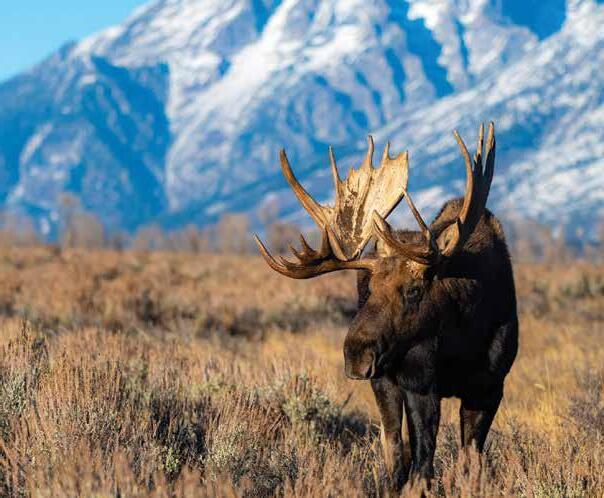
The next generation is watching. Let’s show them what legacy looks like.


NOTE: Dates noted are as of press time. Please check C&A websites for updates.
Sheep Week® .................................January 19-24 ...................... Reno, NV
Sheep Show®..................................January 21-24
Icons of Conservation Gala ...... April 29-May 1 ............... New Orleans Roosevelt Hotel
WSF Thinhorn Summit IV May 5-7 Prince George, BC WSF C&A Summit XVIII .................. May 14-16 ... Grand Junction, CO
WSSBC Jurassic Classic ..................... Aug 21-23 ............. Chilliwack, BC
Chapter

Date
Location
Alaska WSF April 10-11 Anchorage, AK
California WSF April 25 TBD
Eastern Chapter WSF ....................................... Feb 27-28 ............................... Lancaster, PA
Idaho WSF ............................................................ March 21 ....................................... Boise, ID
Iowa FNAWS March 27-28 Des Moines, IA
Midwest Chapter WSF March 20-21 Minnetonka, MN
Montana WSF March 6-7 Bozeman, MT
New Mexico WSF .......................................... Raffle Only
Oregon WSF.......................................................... April 25 ...................................... Bend, OR
Southeastern Chapter WSF TBD TBD
Utah WSF March 21 Salt Lake City, UT
Washington WSF ................................................ March 14 ................................ Tacoma, WA
WSF Alberta ...................................................... March 6-7 ............................... Red Deer, AB
WSF Alberta—Yellowhead April Edson, AB
Wyoming WSF June 5-6 Casper, WY
Yukon WSF................................................................... TBD
Affiliate
Arizona Desert Bighorn Sheep Society May 9 TBD Scottsdale, AZ
Elko Bighorns Unlimited ............................................ TBD
Fraternity of the Desert Bighorn .............. May 17 TBD ............................. Las Vegas, NV
National Bighorn Sheep Center July 3 - Anniversary Dubois, WY Nov 1—Big Horn Bash
Nebraska Big Game Society ............................ March 20 ................................. Lincoln, NE
Nevada Bighorns Unlimited .................................. April 3 .....................................Reno, NV
Nevada Bighorns Unlimited - Fallon TBD Fallon, NV
Nevada Bighorns Unlimited - Midas TBD Midas, NV
Northern Nevada SCI Chapter ............................... TBD .....................................Reno, NV
Rocky Mountain Bighorn Society ................ April 17-18 ............................. Loveland, CO
Rocky Mountain Goat Alliance
Society for the Consv. of Bighorn Sheep N/A
Texas Bighorn Society June 6 San Antonio, TX
Wild Sheep Society of BC—Northern ............... Jan 31 ................... Dawson Creek, BC
WS Society of BC – Salute to Conservation... Feb 27-28.................................. Penticton, BC
NOTE: No date listed = Date not yet determined or provided by C&A



by Chester Moore WSF Staff Writer
In a time when chaos seems to be the only constant, Mama Bear Survival: Raising Strong Families in an Uncertain World: A Guide to Preparedness, Resilience & SelfReliance arrives with a message that’s hard to ignore.
Preparedness isn’t just for doomsday preppers but for everyday families.
Written by Emily Richett, a former news reporter turned entrepreneur and mother of four, the book blends personal experience with practical advice.
Richett is also a graduate of the Wild Sheep Foundation’s Women Hunt program, where she harvested her first deer and deepened her understanding of hunting, conservation, and survival.
The book’s origins were rooted in a personal reckoning, not in a publishing plan.
“After my fourth baby, I stepped out of that postpartum haze and realized just how much the world had changed. Places that once felt safe, like grocery store parking lots, splash pads, and playgrounds, suddenly didn’t anymore,” she said.
For Richett, the concept of “mama bear” wasn’t metaphorical. It was visceral.
“If something went down while I was at the park with my kids, who are all over the place, I’m not leaving. That instinct? That’s where the book started.”
This deep-rooted maternal protector instinct met with her

Mama Bear Survival is not a book about doomsday preparation but how women can prepare for every day events and yes, even for true crisis-level situations. It not only focuses on the outdoors aspects of survival but covers everything from finance to situational awareness in the grocery store.
journalistic approach. With no time to waste and a world changing rapidly before her eyes, Richett did what good reporters do: she asked questions.
“I started tracking down experts,” she said.
“I wasn’t looking to build a bunker or go full prepper. I just wanted to know how to protect and provide for my family.”
The result was more than just a set of skills. Mama Bear Survival is a practical guide for mothers, covering personal safety, digital
awareness, food preservation, firearm basics, and first-aid training. Part workbook and part handson resource, it’s designed to help moms take charge of their family’s preparedness and protection.
“There were no resources that spoke to moms like me,” she said.
“Everything was geared toward men or extreme prepping. I wanted a book with the heart of a coffee table book and the guts of a survival guide.”
A particularly personal moment in her journey was finding a

survival manual she inherited from her father, Bradford Angier’s How to Stay Alive in the Woods.
“It had this gorgeous textured cover. Inside, there was a note I wrote to him years ago: “For Dad, the only man I know who could stay alive in the woods.”
“I realized I wanted something like that, but for moms.”
Her book draws from real-world experience, including her time with the Women Hunt program, where she joined other women in learning to hunt and harvest ethically. That immersion in traditional skills and the sisterhood forged there influenced the section of her book on homesteading and food sourcing.
“The women I met, many younger than me, were already living this life of self-reliance. It lit a fire in me.”
Richett’s background as a child of steelworkers and hospital janitors turned surgical support staff showed a generational contrast she believes modern parents must confront. She says that where grit and survival once came standard, comfort and dependency have dulled instincts.
But rather than mourn the loss, Mama Bear Survival aims to bridge the gap.
“We’re not teaching our kids what our grandparents taught us,” she said.
“But the good news? It only takes one generation to gain it all back.” Her journalistic instincts guided her through the process.
“I’ve always been the type to track down experts when I want to learn something,” Richett said. This approach led her to interview self-defense, emergency medicine, and food preservation professionals. The wisdom she gathered became the backbone of
her book and the episodes of her podcast, Mama Bear Survival where she continues the conversations for a broader audience.
What makes the book stand out is the way it addresses realworld family dynamics alongside preparedness. Chapters include everything from building a family emergency binder to starting a garden or confidently managing digital safety.
The tone of the book is encouraging, never alarmist.
“This is about being proactive,” Richett said.
“It’s about equipping ourselves with the knowledge and confidence to care for our families, no matter what challenges arise.”
Her words echo a deep instinct familiar to many mothers, inscribed on one of the book’s first pages alongside an epic picture of a sow grizzly and her young.
“It’s said that the most dangerous place in the world is between a mama bear and her cubs. Like the mama bear, today’s mom continually adapts to her environment, leading with love and standing strong to raise children in a rapidly changing, increasingly challenging world.”
By Lisa Moore
By the final chapters of Mama Bear Survival, it’s clear this isn’t your typical preparedness manual. The author offers a guide rooted in personal experience and maternal perspective. As a mother of an 18-year-old daughter, this spoke to me in a big way.
The structure is approachable, with four main sections:
Preparedness, Safety & SelfDefense, Health & First Aid, and Traditional Skills. Each includes checklists, how-to instructions, and helpful self-assessments. Richett begins with the “Mama Bear Mindset,” urging mothers to lean into their protective instincts and actively prepare their homes and families.
A notable strength is the focus on community. Richett encourages readers to build local support systems and maintain important records in a “Family HQ Binder”, one of the book’s most useful suggestions.
The self-defense chapter is direct yet accessible, with insights from Richett’s firearms training. While guns are well-covered, they’re presented alongside situational awareness, home safety planning, and digital security, making the section relevant in many aspects of life.
Visually, the book is clean and easy to use. It’s equal parts guidebook and conversation starter, something you could leave on the coffee table or tuck in your bug-out bag.
As a mother and outdoorsman, I appreciated how Richett integrates hunting and food preservation into the broader topic of motherhood. It’s a refreshing take that doesn’t separate traditional skills from family life but instead shows how they can support it.
In all, Mama Bear Survival offers an easy-to-follow, meaningful approach to family preparedness.
And what I liked most about it is that it empowers without overwhelming or implying unrealistic expectations. WS


Emily Richett proudly poses with her first harvested deer during the Wild Sheep Foundation’s Women Hunt program at the FTW Ranch. This was an empowering milestone on her journey toward self-reliance and conservation-minded living.
When Emily Richett joined the Women Hunt program, she didn’t expect it to become the capstone of her book, but that’s precisely what happened.
Emily harvested her first deer during the five-day experience, which was hosted in Texas at the FTW Ranch. It was a powerful, transformative moment for someone who once identified as a vegan.
“I learned how to track, harvest, process, and cook a deer with respect and intention,” she said.
Meet the Wild Sheep Foundation’s Women Hunt® Committee
Bios and photos at: www.wildsheepfoundation.org/ about/women-hunt-committee
“It wasn’t just about food. It was about connecting with tradition, nature, and a circle of women seeking the same thing: competence, confidence, and community.”
This hunt became more than a milestone. It tied together themes of preparedness, sustainability, and courage that run through Mama Bear Survival.
“Women Hunt showed me that self-reliance isn’t just about gear or skill. It’s about mindset and mission. And I knew the book wouldn’t be complete without
that experience,” Richett said. It also reinforced one of her book’s core messages: that it’s never too late to learn new skills or become the protector your family needs.
Thanks to the mentorship and camaraderie of Women Hunt, Richett not only finished her book with renewed purpose, she became a part of a growing sisterhood that is helping to change the face of hunter advocacy and conservation, one hunt at a time. WS
Women Hunt® wants to hear from you!


https://www.wildsheepfoundation.org/womenhunt
womenhunt@wildsheepfoundation.org

@womenhunt @women_hunt


• Pure Precision Sklton Action
• Cut-rifle Carbon Barrel
• Proprietary IN-RUT Carbon Fiber Stock
• Match grade Adjustable Trigger
Our lightest gun ever! custom built to your specifications.
The IN-RUT, Full-Curl Lightweight is a handmade firearm of the absolute highest-quality. Built with today’s sheep hunter in mind this custom rifle is our lightest gun ever. Hand built “one by one” in the historic Black Hills of South Dakota this rifle features a Pure Precision, Sklton action standard with a “cut-rifle” carbon barrel, custom chamber and recessed target crown. The barrel is pillar glass bedded into a proprietary IN-RUT carbon fiber stock, weighing in at only 1.2 lbs.
“MY IN-RUT RIFLE IS THE FINEST, MOST ACCURATE RIFLE I HAVE EVER OWNED OR SHOT, PERIOD!” -N. Guy Eastman


sincere appreciation to Bernie Fiedeldey and the “1 MORE FOR 4” participants for making this drawing and hunt of a lifetime possible!
































by Joshua Schwencke WSF & Women Hunt® Executive Chef in Residence

Dawning the oak bars of pubs across England sits what is, by far, my favorite pub food. Though many across the pond have yet to discover its deep-fried glory, it’s quickly becoming a staple for those who enjoy some protein with their pints.
I speak, of course, of the Scotch Egg—a hard-boiled egg encased in seasoned ground meat, rolled in breadcrumbs, and fried to golden perfection. Personally, I prefer my version with a soft-boiled egg because, let’s face it, that runny yolk is pure magic.
The history of this Frankensteinpub delicacy is a bit murky. Food historians trace its appearance as early as 1783, though some claim its origins lie in the Indian dish Nargesi Kofta. Either way, a huge “thank you” is owed to the minds that invented, borrowed, and improved upon this iconic creation.
In my years of cooking for hunters, teaching wild game preparation, and breaking bread around campfires, Scotch Eggs have become a fun addition to share. Using your ground wild sheep is yet another creative way
to honor the harvest and elevate your game meat.
A quick note: any type of egg can be used here. My recent versions have included everything from quail eggs to duck eggs, depending on what’s available. What matters most at this stage is the boiling of the egg. Here’s a quick refresher: Place your eggs (in their shells) into a saucepan and cover with cold water. Bring to just under a boil, then cover and remove from heat. Choose desired doneness from choices that follow. Carefully remove eggs from water once the
cook time has completed.
• 6 minutes yields a runny yolk with a firm white—ideal for Scotch Eggs.
• 9 to 10 minutes delivers a fully set yolk.
Anything past that is just not right—and arguably should be illegal.
PRO TIP: pull the eggs from the hot water just before your ideal doneness. That gives you a little leeway, since they’ll continue cooking slightly during frying.
Transfer the eggs to an ice bath (50% water, 50% ice) to stop the cooking. Let them cool before peeling. The cold helps separate the protein from the shell, making peeling a bit less frustrating.
Now that we’ve handled the simple yet important task of cooking an egg, let’s talk wrapping and breading. Using lean ground meat—especially from a lean animal—can work against you in both flavor and structure. I recommend a grind that’s no leaner
than 80/20. Fat = flavor, and it helps the meat cling to the egg. Recipes like this shine a muchneeded light on the importance— and joy—of using your wild game in creative, delicious, and maybe even unorthodox ways. My hope is that this inspires you to dig deep into the game freezer, pull out that ground sheep, and wow your friends and family with your culinary know-how. WS
Ingredients:
• 12 soft- or hard-boiled eggs
• 3 lbs. ground wild sheep (or other wild game)
• 2 shallots, finely minced
• 2 tsp. kosher salt
• 1 tsp. black pepper
• 1 tsp. smoked paprika
• 1 tsp. garlic powder
• 1 tsp. Dijon mustard
• 2 eggs, beaten (for dredging)
• 3 Tbsp. milk
• 1 cup all-purpose flour
• 1 tsp. all-purpose seasoning blend
• 2–3 cups panko breadcrumbs
• Neutral oil for frying (peanut oil preferred)
Scan here for the Mountain to Plate Video Series with Chef Josh Schwencke
Instructions:
1. Prepare the Meat Mixture: In a large bowl, gently combine the ground wild sheep, minced shallots, salt, pepper, paprika, garlic powder, and mustard. Do not overmix—this can make the texture gummy.
2. Wrap the Eggs: Divide the meat into 12 equal portions and roll each into a ball. Flatten a portion in your hand, place an egg in the center, and mold the meat around the egg to cover it completely. Chill for 15 minutes to help them hold their shape during frying.
3. Bread the Eggs: Dredge each meat-wrapped egg in seasoned flour, shaking off excess. Dip in the egg wash (beaten eggs + milk), then roll in panko breadcrumbs until well-coated.
4. Fry: Heat oil to 350°F (175°C) in a deep fryer or heavy pot. Fry eggs 2–3 at a time for 6–8 minutes, turning as needed, until golden brown and the meat is cooked through. Drain on a rack or paper towels. If you choose not to deep fry, an oven set at 400°F (205°C) works well. Just spray the outside of the eggs with oil and bake for 2530 minutes, turning halfway through.
5. Serve: Cut in half, dip in your favorite sauce (I like a blend of mayo, grain mustard, and Worcestershire), and enjoy immediately.
6. Enjoy: I’d prefer to enjoy my Scotch Eggs with a glass of Full Curl Rye on the rocks. The peppery nature of the whiskey pairs really well with the egg yolk. You’re welcome.




by Ryan Brock, Ph.D. WSF Youth Education Coordinator
The Life Membership Fund Scholarship is awarded each year to both an undergraduate student as well as a graduate student who is in a field related to Wild Sheep Foundation endeavors. These include majoring in degrees in wildlife management, wildlife biology, and wildlife pathology. An area of focus on wild sheep is preferred, but not necessary. This year thirty students applied for the top scholarship of $5,000 for schooling and travel costs to attend Sheep Show® in Reno, NV to see the economic side of conservation and the opportunity to network with others. Four scholarships were awarded this year from this fund, with the top graduate and undergraduate each receiving $5,000 and two students receiving $2,500.
This year’s top undergraduate scholarship award went to Brooke Lakin from Indiana. Brooke’s journey as a wildlife conservation ambassador began at just eight years old when she started volunteering at the nature center at Indiana Dunes State Park. To this day she still volunteers there, assisting with trail maintenance, animal care, and programming, including Project Owlnet where she gathers data and helps visitors to understand the migration of the Northern Saw-Whet Owl. All of this led to the Indiana State Park Volunteer of the Year is 2018. She has been President of high school Environthon team, the Science Club, and Captain of the Quiz

Bowl team. She was captain of the varsity bowling team and head manager of the baseball team. Brooke will be working towards a Bachelor of Science in Wildlife with the goal of becoming a wildlife educator, hopefully working for the U.S. Fish and Wildlife Service to educate others on the importance of wildlife conservation. Brooke will be attending Purdue University in the fall of 2025.
The other undergraduate award went to Taylen Libsack from
Livingston, Montana. Taylen will be working towards a major in zoology and a minor in marine biology at Oregon State University. Taking part in a trip to Costa Rica with Ecology Project International, Talen spent nine days collecting data on spider monkeys and leatherback sea turtle hatchlings. Additionally, time was spent in Yellowstone collecting data on bison and wolves and radio collar work was used to locate elk, pronghorn, and bighorn sheep.


Both experiences reinforced the passion for wildlife conservation. For the graduate level division of the scholarship, Dylan Stewart received the top award this year. Dylan Stewart is working towards a Ph.D. degree in the Department of Rangeland, Wildlife, and Fisheries Management at Texas A&M University. His research aims to identify the factors that influence translocation success of desert bighorn sheep in Sonora, Mexico. While pursuing his associate degree, Dylan volunteered with the Arizona Game and Fish Department to check bighorn cameras and construct water catchment systems for wildlife. He has also assisted the National Park Service and the Arizona-Sonora Desert Museum to remove invasive buffelgrass to restore habitat for native species. In Florida and Georgia, he assisted biologists to capture and band Northern bobwhite to check habitat quality and estimate chick survival. In
Alabama, he assisted the Alabama Department of Conservation and Natural Resources to mentor and teach youth primitive survival skills. More recently, Dylan led research projects focused on assessing movement, space use, habitat selection, and survival of white-tailed deer using GPS data. In 2022-2023, his work focused on restoring rocky mountain bighorn sheep in Hells Canyon, Idaho, Oregon, and Washington and the surrounding areas. He has given 38 presentations at conferences from Alaska to Maryland while co-authoring another eight. His goal upon completion of his Ph.D. is to continue as a post-doc at Texas A&M for two years to untangle the relationship between resident bighorn sheep conspecific density and the time it takes translocated bighorn sheep to settle into their new environment. After that, he hopes to join Borderlands Research Institute as a post-doc researcher,
researching desert bighorn sheep in Texas. Eventually, he’d like to return to Arizona and work as a professor or with Arizona Game and Fish Department as a senior research biologist.
Another top graduate scholarship recipient is Jeff Tillery. Jeff is pursuing a M.S. in Wildlife and Fisheries Science at South Dakota State University. He will defend his thesis this December and plans to continue as a PhD student. Jeff’s research focuses on the implementation and results of an ongoing test-and-remove project on bighorn sheep in Badlands National Park and the Pine Ridge Reservation, which suffered a 7080% decline in 2021/22. Among Jeff’s many experiences with wildlife conservation include time at Channel Islands National Park working with island foxes and in Utah on Forest Service lands working on goshawk surveys. He was also involved with moose drone calving research in Minnesota and volunteered with interagency grizzly bear efforts. Jeff has countless days giving back and educating others about wildlife and the outdoors.
These recipients stood out, yet only represent a sample of those applications submitted. Based on the quality of all the applicants this year, our future is hopeful when it comes to our wildlife, and we are proud to be able to support a handful of them on their quest for their degrees. This scholarship has been given out for almost a decade now. Applications can be found under our youth education programs on the Wild Sheep Foundation’s website and are due March 1st of each year. WS



White, and Blue YETI → $40 Branded Bill Leather Patch USA Hat ↓ $35







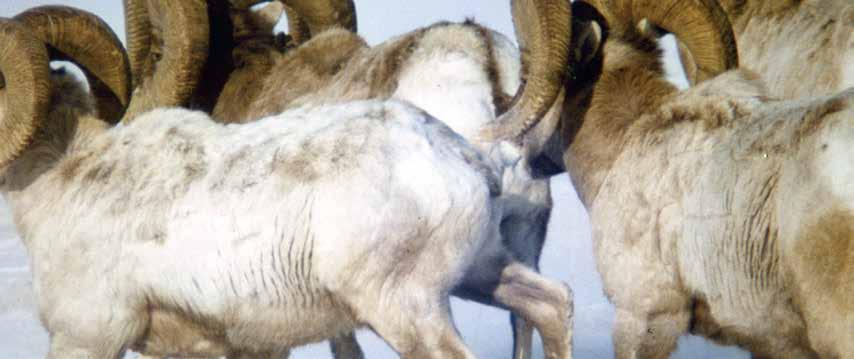
by Kevin Gilbert

My first sheep hunt was in 1999 for Dall’s sheep. This was a horseback hunt in Alaska, which unfortunately was unsuccessful. This setback made
me want to hunt sheep even more. Four years later in 2003, I was back in Alaska with my guide, Scott Ruttum, and packer, Branden, with outfitter, Rob
Jones, of R&R Guide Service. Many miles were walked and mountains climbed. I was beat, but still going… Rob flew over us one morning and asked Scott, “How’s

Kevin doing?” Scott said, “He’s doing great!” I thought to myself, who is Scott talking about, me?
On the seventh day of the tenday backpack hunt, we finally got on three rams. They were about 100 hundred yards below, almost straight down. Scott had his spotting scope on the biggest one to verify it was legal, which was difficult due to the steep downhill angle.
After about 30 minutes, the ram finally looked up at the ridge we were on, and Scott determined he was full curl. I stayed back so I wouldn’t skyline myself or spook the rams. Scott gave me the nod that the ram was in fact legal. Scott said take him if you want him. I was like, get out of my way! I put the gun over the ridge and shot the ram in his bed. He took a minute, got up, walked by the other two rams and then his knees buckled and he fell and rolled out of sight. The other two rams stayed bedded and craned their necks to watch my ram roll down the mountain. They had a puzzled look on their face, as if to say, “Do we have to do that too?” Scott and Branden put on their packs and started down the mountain. I stood up and could hardly breathe. I had a rush of adrenalin that literally took my
breath away. I was shaking with excitement. We did it! We were successful with a full curl, nineyear-old Dall’s ram! At that time I was the age of 40 and I told myself that I would get a Stone’s when I turned 50.
In January of 2013, I didn’t have a Stone’s sheep hunt booked. My promise to myself of getting a Stone’s sheep when I turned 50 didn’t look like it would happen. About a month later, I got a call from Tom Christensen, Eastern Montana Outfitters, in Glendive, MT. I had guided mule deer hunters
for him in the past and he thought of me when he got a call from McCarthy Adventures, a booking agent in Pennsylvania that had a Stone’s sheep hunt. He told me the price, which was considerably less than what the market was, but I turned it down. I hung up the phone and thought to myself, you idiot! Tom called back a couple of weeks later and said the price had dropped, I said, “book it.” The hunt was booked for September 2013 with Tom Vince of Turnagain Adventures in British Columbia.
This hunt was a 14-day horseback hunt. I drove from Montana up the Alaska highway to Coal River. We took a jet boat 75 miles up the river to their base camp.
The next morning, we put some of the horses in the jet boat to cross the river and tied them up. The guides brought some of the horses across the river. It was a long, overgrown, steep (up and down), muddy, dusty, horse trail that took us over eight hours to get to a small cabin on a lake. We arrived just after dark. The cabin was a mess with a big bear paw print on the open front door, birds’ nest and signs that squirrels had taken it over. It was pretty evident it hadn’t been used in a while. My guide, Jerry Porter, and


I stayed in a tent outside of the cabin while Tom and his hunter stayed in the cabin.
The first day, we cleaned the cabin, cut, split, and stacked firewood, and collected drinking water from a spring several hundred yards behind the cabin. We had some rainy weather that made the mountains impossible to glass so we didn’t wonder far from the cabin.
I think it was around day five, Jerry and I took our tent and gear and went for about a four-hour ride to another camp. There were hitching posts for the horses and an elevated cache with salt for hides and some other stuff (I can’t remember what all). We set up our tent and built a makeshift lean to with a tarp over it to cook under. That night as we tried to sleep, we could hear horse bells and a bull moose grunting nearby.
The next morning, we road up a
ridge, tied off the horses and Jerry said to me, “Today I get to see if you can climb.” I told him not to worry, I’d be right behind him. We got up on the ridge and saw quite a few Stone’s rams, but nothing legal. We also saw a grizzly bear digging on the mountainside.
On the way back to camp that evening Jerry’s horse started bucking—my first thought was
grizzly bear! I was wrong, it was just a porcupine.
The next day, day seven, we rode back down the main trail we rode into camp on. Jerry was feeling lucky; I think we were going into his secret spot. Before we got there, we spotted rams on top of this high knob. They weren’t quite legal, but they sure looked close to me. Jerry said, “We need to go,

follow me.” We rode up to the base of this long ridge and tied off the horses. We took a short walk up to this huge boulder and Jerry was looking around it. He told me stay behind him. Sure enough, he spotted three rams. They were all “no brainers”! One was very nice. But they were down in the brush about a mile away. We went off the backside of the ridge to get out of their sight. We walked on loose rock above cliffs that weren’t something you wanted to look at for very long. We saw some nice mountain goats. I had a tag, but wasn’t interested in them until one of the rams was mine.
We got near the end of the ridge and looked over—no rams. We backed off and went to the other side. We spotted them coming our way! We eased down the tree-covered ridge, we could see just about everything except just in front of us was a drop off we couldn’t see over. The rams had to be right there—probably less than 50 yards. It was getting late, and we couldn’t see them, even though we knew they were close. Every step, Jerry would look back at me as if to scold me for making too much noise, I wasn’t.
Then, we both felt the dreaded breeze on the back of our necks. Then we heard them run.
I still couldn’t see them! Jerry ran towards where we heard them running, I was right behind him. There, 200 yards out on the next ridge, rams! With urgency, I asked, “Which one?” Jerry responded, signaling the one in the front. I took a rest with my shooting sticks and shot before the ram went over the ridge. I saw him again, I knew he was hit, but I took no chances. I shot again and again, he went down! I couldn’t believe it! We were successful with a 13-year-old ram. He was 39” on the long horn and 34” on the broomed horn. We got pictures down in the brush just before it got dark. We had the ram
dressed and we headed backed to the horses. The terrain was a series of steep ridges perpendicular to our path back to the horses with loose rock. Jerry finally called it, and we spent a long chilly night next to a fire trying to stay warm— and trying not to catch on fire ourselves. We looked at the ram’s head sticking out of my pack and agreed this night would be a lot more difficult if we had not had that to look at.
After that I told myself that it would be great to achieve my FNAWS by the time I turned 60. I was halfway there.
was for the Pope and Young Club. The item being auctioned was a 15day horseback hunt for an Alberta bighorn with Chad Lenz, Savage Encounters. I bid on my phone and won it! The hunt was scheduled for September 2021.
In November of 2020, Emilio Espino of La Palmosa emailed me that he had a cancellation in February of 2021, so he asked me if I would like to move my hunt up from November to February, I said, “YES!”
So, in February of 2021, I was in Mexico hunting desert bighorn sheep on Super Bowl Sunday

In 2019 at my first Sheep Show®, Paige Culver introduced me to Emilio Rangel and Emilio Espino at their La Palmosa booth. I booked a desert bighorn hunt with them for November 2021. I also booked a California bighorn hunt in 2019 with a British Columbia outfitter I had bid on and won at the MTWSF banquet. I had my last two sheep hunts booked! Unfortunately, the sheep hunt in British Columbia ended unsuccessfully.
In March of 2020 my friend Joe Mariner sent me an email with a live auction attachment. The auction
with Emilio and David! We left the ranch just around daybreak and drove the Jeep to the base of a mountain that was a very long ridge. We climbed at a steady pace to achieve the top of the long ridge. We wore leather gloves and thick gaiters to avoid the cactus and other plants that wanted to “bite” us. We worked our way down the ridge glassing in all the side draws as we went. I got warmer and warmer as the day went on. We stopped for frequent water breaks. We saw ewes and lambs but no rams.
Around 4:00 in the afternoon
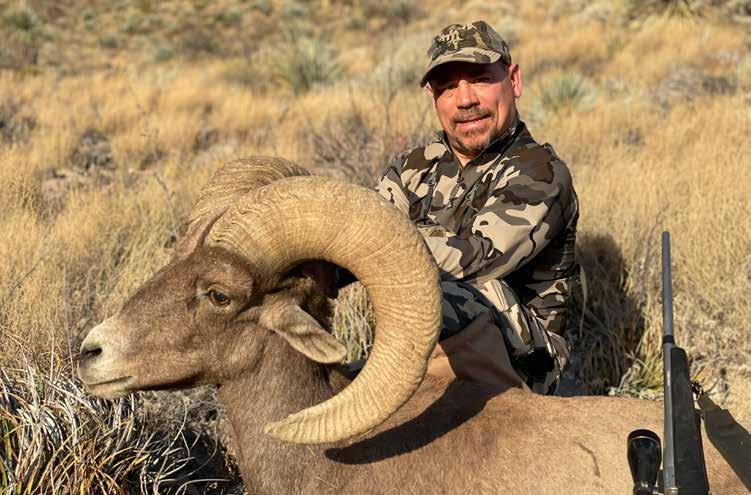
David spotted a ram a long way off and at the bottom of the mountain. We made our way down as quickly as we could. David had to catch me at one point as I almost did a header off a rock. We got back to the Jeep and drove toward where David spotted the ram. We ended up seeing ten rams and they started moving away at the base of the mountain. We made a big loop and got in front of them. Eight of the rams went up the mountain and a good ram and a smaller one stayed the course and at the base of the mountain. We set up on the bigger ram at over 400 yards, but there was brush in the way, and I didn’t feel great about that shot. Emilio said we could try to get closer, but there was a risk that the rams might spook.
We moved closer. We stacked our packs on top of each other for a rest and I laid prone on a glassing mat. I ranged the ram at 373 yards. I took the shot, and the ram
buckled and went behind a small ridge. Emilio and David were sure he was hit. I wasn’t.
It took some time to get to where the ram was standing when I shot. There was blood there and just past that spot, there he laid. 0n the first day of the hunt, we got a nineyear-old desert bighorn! I was ¾ of the way there!
In 2021, when I was scheduled for my Alberta bighorn, Canada was closed! Chad Lenz rescheduled me for 2022. Canada was still not open to everyone in 2022, so my hunt was moved again, to 2023. I turned 60 in August of 2023, so it was very possible I would achieve my goal of a FNAWS when I turned 60. I went on this hunt in September of 2023.
I drove seven-and-a-half hours to Caroline, Alberta on September 14. The next day we drove 2.5 hours or so to the trail head. We were met at the trailhead by one of the guides. He had great news.
Eight rams had been spotted from the base camp, and it appeared that there might be two that were legal. We had about a five-hour horseback ride into the base camp.
When we arrived at base camp, we went right to their glassing spot. Right before dark we spotted the rams about three miles away. Two of them had big round bellies and you could see they had good bases on their horns, but from that distance that’s about all you could see.
The next day we loaded up our gear to move to another camp that was closer to where the rams were spotted. We were hopeful that two were legal because there were two hunters, Jim Ferguson from northern California (he won this hunt in a raffle at the Sheep Camp in Salt Lake City) and me.
We rode about three hours to the next camp and stopped at a glassing spot on the way. As luck would have it, the rams were still where we spotted them from base
camp. One of them looked legal, but we needed to get closer yet.
The next morning, we were back at the glassing spot. We confirmed the rams were still there, but they were on a mountain face hidden by another smaller mountain in front of us. My guide, Logan Hunt, told Jim and me that we would have to decide who would shoot first. We both wanted a ram, so Logan flipped a Life Saver, as he didn’t have a coin. I called heads and heads it was. I was going to get first shot, if there was a legal ram, and Jim would go second if there was another legal ram in the group.
We headed down the glassing hill to the horses and rode to the mountain that obscured the rams from sight. We climbed the smaller mountain and got on top. It was pretty much straight up through some timber and then it opened to rocks and dirt. We stopped a few times to catch our breath. For me I think it was hard to breathe more because of the adrenalin than the steepness of the slope. The wind was blowing in our face which was perfect. We ranged the mountain face the rams had been on and it was under 400 yards. I told Jim earlier, if the rams came out beyond my effective range, I would let him have the shot. We were waiting behind a low rock out crop in the sun, but the wind was cold. After a while, a small ram, ewe, and lamb came into view from above, but not the group of rams we had seen earlier. Then rams started coming out from below us. There were five, but not the biggest ones we had seen earlier, that we hoped were legal. The three sheep above watched them, then the five rams went back down the mountain and into a spot where we couldn’t see them. The wind was blowing in that direction so we didn’t want to move closer and scare them into the trees where they could leave without us seeing them.
After a while, we decided to move down the ridge. Just as we stood to go, Logan said, “Get down!” A ram had come out and was walking up the hill, grazing, but looking like he wanted to leave. Logan told me to get ready. I chambered a round. Matt, Jim’s guide, called the range at 340 yards. Logan got a big grin on his face and said, “He’s legal, take him when you’re ready.” I was already on the ram and just waiting to hear those words! I looked at Logan once more to confirm what I thought he said. I didn’t want to mess this up! I shot right after the confirmation. The wind was gusting and angling down the mountain from right to left at a pretty good clip. The ram was going from my left to right angling
uphill. I put the crosshairs on the front of the ram’s shoulder, but I didn’t dare hold off in front of him. I hit the ram, and he headed down the hill, but still on his feet. The wind was blowing pretty good, and my shots weren’t going exactly where I wanted them. I ran down the ridge to get closer. The ram laid down and I went into prone position and tried to catch my breath. I shot again and put the ram down for good! We got him! We all watched as the other rams ran out from their hiding spot.
Unfortunately for Jim, there were no more legal rams in the bunch. Lucky for me, I got my Alberta bighorn and achieved my FNAWS by calling heads on the flip of a Life Savers! WS

by Rick Carosone

With the successful drawing of an Idaho sheep tag in 2005, the dream of taking all four species of North American bighorn sheep began. Over time I realized that this was probably unattainable for me. Paying for the Dall’s and Fannin hunts were doable but a Desert sheep hunt? Not an option with the abysmal odds or paying $45,000 for a hunt in Mexico. The goal then became four of any sheep.
I coined this a “Poormanslam”. I hoped to get lucky and take two sheep in the lower 48 unguided. With my successful DIY Idaho hunt, I was on track. My plan then became, draw one more tag in the lower 48 and go north for two others. I harvested two rams north of the border in 2006 and 2011.
In 2023, I was fortunate to draw a Wyoming Unit Five tag after 25
years of applying. Going without an outfitter limited me to the non-wilderness portion of the unit that holds, far fewer, and mostly younger rams. As I spoke with “people in the know” my sanity was questioned continuously on my ability to do it unguided and without stock. With the assistance of two great friends, who accepted the challenge in a grizzly-rich environment, we were completely



successful. After 14 days of scouting, Layne Hacking and I harvested a Class IV, nine-yearold ram, on day three. Arguably the greatest hunting adventure I have ever been a part of.
I am extremely grateful for the opportunities I’ve been fortunate to have. Sheep hunting has changed my life; physically, emotionally and philosophically. Knowing that somewhere down the road a sheep tag may become available keeps me fit and a motivational fire burning within me. It has improved many aspects of my life. To me the cost was a small price to pay for the benefits I reaped. However, the barriers that exist for entering the sheep arena are unfortunate. It is simply out of reach for a large portion of the general hunting public.
When I coined the term Poormanslam it was tongue-in-
cheek. Even 25 years ago the least expensive way to harvest a thinhorn sheep was at least $8-$9000. Not a nominal amount at that time. If I monetized my Poormanslam the total cost of food, gas, guides, tags, lodging, taxidermy etc. comes in at around $42,000. That is exactly what one desert sheep hunt costs today. What “Poorman” can afford that? If a person were to buy all four NA tags today the price tag exceeds $200,000.
I am appreciative and indebted to the people that have put and kept sheep on the mountain. Also for my friends that helped me on these hunts and for my guides in Alaska (Matt Snyder) and the Yukon (Dan Reynolds), thank you. I sincerely hope I am lucky one more time, if not, I have cherished the ride. WS









A1
ONE OF A KIND LOST WAX ORIGINAL BRONZE OF THE BUYER’S CHOICE (100% FULLY DONATED)
JUSTIN YOUNG FINE ARTS
Justin Young P: 719.688.9110
E: jyoungfineart@hotmail.com W: www.justiniyoung.com
A2
“KODIAK” BROWN BEAR WILDLIFE BRONZE ARTIST
Frank Entsminger
P: 907.883.2833
E: bronzeart@aptalaska.net
W: www.frankentsminger.com
A3
“A LEAGUE OF EXTRAORDINARY GENTLEMEN” DALL’S SHEEP BRONZE KARL LANSING STUDIO - WILDERNESS IMAGES
Karl & Louise Lansing
P: 250.428.8614
E: klansing@shaw.ca W: www.karllansing.com
A4
METAL MOUNTAIN (100% FULLY DONATED)


MONTANA PLAQUES
Peter Ryman P: 605.380.5659
E: psryman@gmail.com
W: www.montanaplaques.com
A5
TWO HORN GOBLETS - ORIGINAL ART
ANTLERED MUGWORKS
Todd Strupp P: 715.642.3937
E: toddstrupp@gmail.com
W: www.antleredmugworks.com
A6
FNAWS HORN HIGHBALL MUGS - ORIGINAL ART
ANTLERED MUGWORKS
Todd Strupp
P: 715.642.3937
E: toddstrupp@gmail.com
W: www.antleredmugworks.com
A7
“HARE RAISING EXPERIENCE” WILDLIFE PAINTING THE DEVINE GALLERY
Dan Devine
P: 905.560.1653
E: dan@dandevine.net
W: www.dandevine.net
AS1
3 - DAY SINDH IBEX (UP TO 39”) HUNT IN PAKISTAN FOR 1 HUNTER(TROPHY FEE UP TO 39” IS INCLUDED -$1,000 PER INCH OVER 39)
CAPRINAE SAFARIS OF TURKEY
Mehmet Alkan & Riza Gozluk
P: +90.532.583.9108
E: info@caprinae.com
W: www.caprinae.com



B1
5-DAY/5-NIGHT RIO GRANDE WILD TURKEY HUNT FOR 2 HUNTERS & 4 NON-HUNTERS (CROSSBOW/BOW HUNT ONLY) (Trophy fees for 2 turkeys are included)
PUERTA LAS HAYAS RANCH
Luis H Salinas
P: 844.419.2832
E: info@puertalashayas.com
W: www.puertalashayas.com
B2
4-DAY/3-NIGHT 1X1 HIGH VOLUME DOVE HUNT FOR 4 HUNTERS
(100% FULLY DONATED) FRONTERA WINGSHOOTING
Clarita Frontera
P: 214.603.4662
E: clarita@fronterawingshooting.com W: www.fronterawingshooting.com
B3
3-DAY/3-NIGHT DOVE HUNT IN ARGENTINA FOR 4 HUNTERS (100% FULLY DONATED) NORTE HUNTERS
Paula Cardelle
P: 972.528.4770 or 980.300.0614
E: nortehunters@gmail.com
W: www.nortehunters.com
B4
3-DAY WATERFOWL HUNT & 2-DAY WINE TASTING FOR 2 IN NEW ZEALAND BLACKSTONE OUTFITTERS NZ
Corry & Sarah Walker
P: 64.27.488.6601
E: info@blackstoneoutfitters.nz
W: www.blackstoneoutfitters.nz

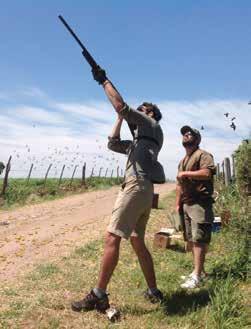








B5
3-DAY WATERFOWL & SAND HILL CRANE HUNT IN ALBERTA CANADA FOR 1 HUNTER (100% FULLY DONATED)
AMERI-CANA EXPEDITIONS INC.
Nick & Dan Frederick
P: 780.469.0579
E: ameri.cana@shaw.ca
W: www.ameri-cana.com





E1
4-DAY MOUFLON OR FALLON DEER FOR 1 HUNTER & 1 NON-HUNTER (Trophy fee included for mouflon or fallon deer)
(100% FULLY DONATED)
HUNT IN SPAIN & ALFONSO FABRES
Alfonso Fabres
P: +34.923.380001
E: info@huntinspain.com
W: www.huntinspain.com
E2
3 - DAY FREE-RANGE BALKAN CHAMOIS OR EUROPEAN GRAY WOLF HUNT IN MACEDONA FOR 1 HUNTER (Trophy fee for Balkan chamois or European gray wolf included, hunters’ choice)
THE HUNTING CONSORTIUM LTD.
Robert Kern
P: 540.955.0090
E: hunt@huntcon.com
W: www.huntingconsortium.com
E3
7-DAY ALPINE CHAMOIS HUNT FOR 1 HUNTER AND 1 NON-HUNTER IN SLOVENIA (Trophy fee included for bronze medal Alpine chamois)
IBERHUNTING SPAIN
Antonio Teruel Farrugello
P: +34 664.283.512
E: iberhunting@iberhunting.com
W: www.iberhunting.com
E4
5-DAY CANTABRIAN CHAMOIS HUNT FOR 1 HUNTER & 1 NONHUNTER (Trophy Fee included for 1 Cantabrian chamois)
HEREDEROS HUNTING
Rafa Navazo
P: 34.629.033.7620
E: rafa@herederoshunting.com
W: www.herederoshunting.com THE CONKLIN FOUNDATION
E5
3-DAY IBERIAN MOUFLON HUNT FOR 1 HUNTER FOR <1ICLUB 2026! (Trophy fee included for 1 Iberian mouflon)
(100% FULLY DONATED)
HEREDEROS HUNTING
E6
5-DAY IBERIAN RED STAG HUNT FOR 1 HUNTER AND 1 NON-HUNTER
(100% FULLY DONATED)
SPAIN SAFARIS
Luis Berga
P: +34.66.981.4458
E: luis@spainsafaris.es
W: www.spainsafaris.es
E7
10-DAY MULTIPLE SPECIES COMBINATION HUNT FOR 1 HUNTER AND 1 NON-HUNTER
($11,300 credit for daily rates)
CAZATUR
Eduardo de Araoz
P: 011.34.91.442.3775
E: spain@cazatur.com
W: www.cazatur.com
E8
4-DAY HUNT FOR IBERIAN RED STAG OR ROE DEER FOR 1 HUNTER (Hunter’s choice) (Trophy fees included for 1 red stag up to bronze or 1 unlimited roe deer)
ESPACAZA JOSE MALLO - SPAIN
Jose Mallo
P: 34.91.575.76.29
E: jose@espacaza.com
W: www.espacaza.com
E9
5-DAY FALLOW & RED STAG HUNT FOR 1 HUNTER AND 1 NON-HUNTER
(Fallow stag up to 3kg - red stag up to 320 SCI points)
FN HUNTING
Martin Neuper
P: +43.664.133.4870
E: fn-hunting@gmx.at
W: www.fnhunting.com




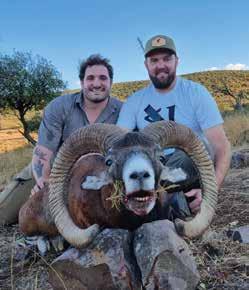




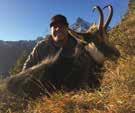













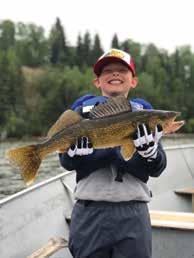

F1
CUSTOM BUILT SHEEP SHOW EDITION 7 PRC RIFLE (100% FULLY DONATE)
HIGH VOLTAGE ARMORY
Troy Sturgill
P: 541.260.1751
E: hvarmory@aol.com W: www.hvarmory.com
F2
FIOCCHI USA AMMO (100% FULLY DONATION) FIOCCHI USA
Aaron Glass
P: 417.725.4118
E: h.hammond@fiocchiusa.com
W: www.fiocchiusa.com
F3
BROWNING 7PRC X-BOLT 2 SPEED SPR (100% FULLY DONATED)
BROWNING
P: 801.876.2711
E: shaundi.campbell@browning.com W: www.browning.com
F4
CUSTOM 6.5 PRC ULTIMATE SHEEP RIFLE - WITH A SWAROVSKI RIFLE SCOPE ARROWHEAD RIFLES
Luke Horak
P: 319.558.8621
E: sales@arrowheadrifles.com
W: www.arrowheadrifles.com
F5
TSN-55A FLUORITE CRYSTAL SPOTTING SCOPE & TRIPOD (100% FULLY DONATED) KOWA SPORTING OPTICS
Paul Kardos
E: pjkardos@kowa.com W: www.kowa-usa.com
FISH 1
3-DAY NORTHERN PIKE & WALLEYE FISHING TRIP FOR 2 ANGLERS (100% FULLY DONATED)
GREAT WHITE HOLDINGS, LTD
Jon McMahon
P: 780.818.6201
E: greatwhiteholdings.com
W: www.greatwhiteholdings.com
FISH 2
3-DAY/4-NIGHT FISHING TRIP FOR 1 WHEELCHAIR BOUND ANGLER & 1 CAREGIVER CAMERON RIDGE BUNGALOWS/ SWEET SIN FISHING ADVENTURES
Chris Franke/Lawrence Dunkley
P: 780.817.4349/250.855.9178
E: info@cameronridge.com
W: www.cameronridge.com
FISH 3
4-DAY FISHING TRIP IN NORTHERN YUKON 2 ANGLERS & 2 NON-ANGLERS (Fish include grayling, Arctic char, and lake trout)
MIDNIGHT SUN OUTFITTING
Logan & Jesse Young
P: 403.813.8589
E: midnightsunoutfitting@gmail.com
W: www.midghtsunoutfitting.com
FUR 1
NATURAL LUNARAINE MINK LONG GILET VEST. SLEEK AND ELEGANT. SIZE M
WILLIAM FURS
Caline Asmar
P: 775.828.0995
E: williamsfurs@yahoo.com
W: www.williamfurs.com
FUR 2
FORREST GREEN SHEARED BEAVER JACKET WITH SPOTTED RABBIT COLLAR SIZE S. WILLIAM FURS
Caline Asmar
P: 775.828.0995
E: williamsfurs@yahoo.com
W: www.williamfurs.com
FUR 3
BLACK AND GOLD SPOTTED SHEARED MINK STROLLER REVERSIBLE TO TAFFETA RAINCOAT. PERFECT FOR TRAVELING SIZE L/XL
WILLIAM FURS
Caline Asmar
P: 775.828.0995
E: williamsfurs@yahoo.com
W: www.williamfurs.com
















FUR 4
DARK BROWN LAMBSKIN LEATHER
STROLLER WITH NATURAL MINK
TRIM AND SHEARED MINK LINER
SIZE M/L
WILLIAM FURS
Caline Asmar
P: 775.828.0995
E: williamsfurs@yahoo.com
W: www.williamfurs.com
FUR 5
TANNED COW ELK HIDE (100% FULLY DONATED)
SUMMIT LIFE MEMBER:
KEVIN HURLEY
FUR 6
TANNED BUFFALO HIDE ROBE (100% FULLY DONATED)
SUMMIT LIFE MEMBER: KEVIN HURLEY
FUR 7
BC LYNX PELT
BC TRAPPERS ASSOCIATION
Stan Troyer
P: 250.263.4999
E: bcfarmer@gmail.com
W. www.bctrappers.ca
FUR 8
3-DAY BC TRAPLINE ADVENTURE W/KENT MAITLAND
BC TRAPPERS ASSOCIATION
Stan Troyer
FUR 9
BC GRAY WOLF PELT
BC TRAPPERS ASSOCIATION
Stan Troyer
M1 THE TACTICAL - T-4-16-HD CUSTOM SERIES
TACTICAL HEARING
Tim Sparks
P: 801.822.6888
E: tim@tacticalhearing.com
W: www.tacticalhearing.com
M2
CUSTOM FELT HAT
(100% FULLY DONATED)
CHAZ MITCHELL CUSTOM HATS
P: 435.559.1917
E: chaz@chazhatz.com
W: www.chazhatz.com
M3
FLY WAY 4X4 180X
AUTOMATIC TRAP THROWER (100% FULLY DONATED)
DO ALL OUTDOORS
Mike Winkler
P: 615.775.8298
E: mike@doalloutdoors.com
W: www.doalloutdoors.com
M4
CUSTOM COLOR PACK HORSE PACKAGE (100% FULLY DONATED)
CUSTOM PACK RIGGING LTD.
Tysen Bjorn
P: 250.256.7858
E: tysen@custompackrigging.com




NA 1
5 - DAY COUES DEER HUNT FOR 1 HUNTER IN ARIZONA LET’ER RIP OUTFITTER & GUIDE SERVICE
Bill Babiash
P: 520.370.5457
E: badbullz@aol.com
NA 2
7-DAY THERMAL PREDATOR
HUNT IN ALASKA
MIDNIGHT SUN SAFARIS
Coke Wallace
P: 907.978.0929
E: info@midnightsunsafaris.com
W: www.midnightsunsafaris.com
NA 3
5-DAY COLUMBIA BLACKTAIL DEER AND BLACK BEAR COMBO HUNT IN OREGON FOR 1 HUNTER (100% FULLY DONATED)
EDEN RIDGE OUTFITTERS
John McCollum
P: 541.290.2671
E: edenridgehunts@gmail.com
W: EdenRidgeOutfitters.com
NA 4
2-DAY HUNT FOR HYBRID EUROPEAN MOUFLON/HAWAIIAN SHEEP FOR 1 HUNTER AND 1 DAY DEEP SEA FISHING FOR UP TO 3 PEOPLE (100% FULLY DONATED)
MAUNA LOA OUTFITTERS
Colin Onaka - WSF Life Member
Steven Onaka
P: 808.960.7373
E: MaunaLoaOutfitters@gmail.com
Capt. Mark Bartell of the Ambush
P: 808.366.4808

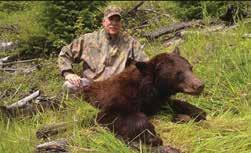





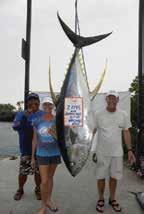


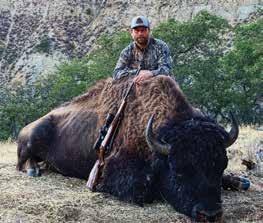






NA 5
10-DAY BIGHORN SHEEP HUNT FOR 2026 SHEEP SHOW RAFFLE GARRET BROS OUTFITTING
Pat Garrett
P: 780.621.7989
E: pat_470@hotmail.com
W: www.garrettbrosoutfitting.com
NA 6
7-DAY COUGAR HUNT IN BC FOR 2026 SHEEP SHOW KIFARU OUTFITTERS
Jesse VanMarrion
P: 403.594.2781
E: jvanmaarion@kifaruoutfitters.net
W: www.kifaruoutfitters.net
NA 7
5-DAY TROPHY BISON HUNT FOR 1 HUNTER IN CALIFORNIA CONSERVATIVE GAME MANAGEMENT
Chase Morisoli
P: 805.610.3624
E: cmorisoli@gmail.com
W: www.huntcgm.com
NA 8
11-DAY TROPHY MOUNTAIN GOAT HUNT FOR 1 HUNTER IN REMOTE BRITISH COLUMBIA TERMINUS MOUNTAIN OUTFITTERS
Craig Kiselbach
P: 250.442.7103
E: terminusmtn@gmail.com
W: www.terminusmountain.com
NA 9
9 - DAY ALASKAN HUNT FOR 2 MOUNTAIN GOATS AND 1 SITKA BLACKTAIL DEER FOR 1 HUNTER & 1 NON-HUNTER
KODIAK OUTDOOR ADVENTURES
Paul Chervenak
P: 907.486.3008
E: paul@kodiakoutdoors.com
W: www.kodiakoutdoors.com
NA 10
10-DAY SPRING GRIZZLY BEAR & WOLF HUNT FOR 1 HUNTER MIDNIGHT SUN SAFARIS
Coke Wallace
P: 907.978.0929
E: info@midnightsunsafaris.com
W: www.midnightsunsafaris.com
NA 11
5-DAY TWO BLACK BEAR HUNT FOR 1 HUNTER (100% FULLY DONATED) DEEP COUNTRY LODGE
Dean Crocker
P: 709.685.2463
E: deancrocker@exitrealtynl.com
W: www.deepcountrylodge.com
NA 12
10-DAY LA PALMOSA DESERT SHEEP HUNT FOR 1 HUNTER AND 2 NON-HUNTERS
(100% FULLY DONATED)
LA PALMOSA - HUNTING OUTFITTER
Emilio Espino
P: +521.811.916.4668
E: info@lapalmosa.com
NA 13
10-DAY FALL MOUNTAIN GOAT HUNT FOR 1 HUNTER
KILDALA ADVENTURES, LTD.
Todagin Hodson
P: 250.877.2407
E: kildalaadventures@gmail.com
W: www.kildalaadventures.com
NA 14
5-DAY BULL ELK HUNT IN NEW MEXICO FOR 1 HUNTER AND 1 NON-HUNTER
(PROCEEDS OF THIS HUNT WILL GO TO BENEFIT THE RANCHITOS DE LOS NINOS CHILDRENS HOME IN NEW MEXICO) FOUR DAUGHTERS RANCH
Mike Mechenbier
P: 505.388.2902
E: accounting@4dcattle.com
W: www.elranchitonm.org
NA 15
10-DAY ALASKA YUKON MOOSE BACKPACK HUNT FOR 1 HUNTER NWT OUTFITTERS
NAHANNI BUTTE OUTFITTERS
Jim & Nadine Lancaster/Clay Lancaster
P: 250.847.1855
E: jladventures@xplornet.com
W: www.lancasterfamilyhunting.com
NA 16
12-DAY SPRING KODIAK ISLAND BROWN BEAR HUNT FOR 1 HUNTER ROHRER BEAR CAMP
Sam Rohrer
P: 907.486.4074
C: 907.539.1828
E: sam@kodiakbearcamp.com
W: kodiakbearcamp.com
NA 17
12-DAY STONES’ SHEEP HUNT IN NORTHERN BRITISH COLUMBIA
(100% PROCEEDS TO SUPPORT NW BC STONE’S SHEEP INITIATIVES) SPATSIZI RIVER OUTFITTERS
Mike Gilson
P: 250.847.9692
E: mike_gilson@bcsafaris.com
E: admin@spatsizi.com
W: www.spatsizi.com



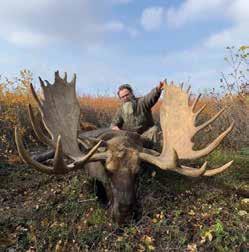
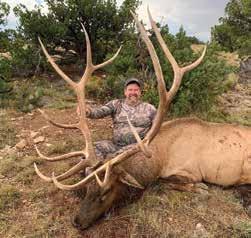
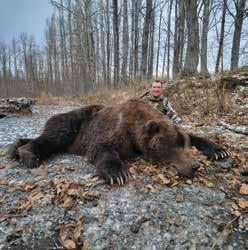

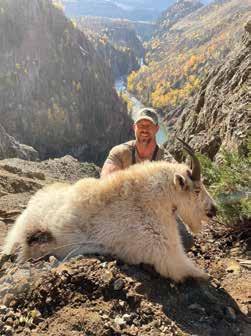



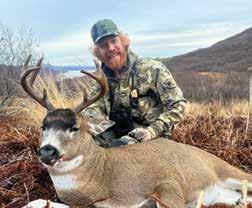






NA 18
12-DAY MOUNTAIN GOAT IN BRITISH COLUMBIA FOR 1 HUNTER (100% FULLY DONATED FOR WSF THINHORN INITIATIVE)
GOLDEN BEAR OUTFITTING
Blake Williams
P: 250.794.8350
E: gbowilliams@gmail.com
W: www.goldenbearoutfitting.com
NA 19
5-DAY MULE DEER HUNT IN NEW MEXICO FOR 1 HUNTER (100% FULLY DONATED)
FRONTIER OUTFITTING
GT Nunn
P: 505.350.9775
E: gtnunn@aol.com
W: www.frontieroutfitting.com
NA 20
3-DAY/2-NIGHTS AMERICAN ALLIGATOR HUNT FOR 1 HUNTER AND 1 NON-HUNTER (100% FULLY DONATED)
GOD’S COUNTRY OUTFITTERS
Charles & Natalie Herrington
P: 386.972.0100
E: hunt@godscountryoutfitters.net
W: www.godscountryoutfitters.net
NA 21
HELICOPTER HOG HUNT PACKAGE FOR TWO HELIBACON
Chris Britt
P: 281.802.0397
E: chris.britt@helibacon.com W: www.helibacon.com
NA 22
5-DAY COLUMBIA BLACK TAIL DEER & COASTAL BLACK BEAR HUNT FOR 1 HUNTER (100% FULLY DONATED)
SPOON CREEK OUTFITTERS
Ken Wilson
P: 541.396.2726
E: spooncreek13@gmail.com
NA 23
5-DAY/6-NIGHT KODIAK SITKA BLACK-TAILED DEER, SEA DUCK AND FOX COMBO HUNT FOR 2 HUNTERS (100% FULLY DONATED)
MIKE ODIN’S ALASKA ADVENTURES, LLC
Mike Odin
P: 907.644.4868
E: mike@mikeodin.com
W: www.mikeodin.com

NA 24
10-DAY ALASKA-YUKON
MOOSE HUNT FOR 1 HUNTER IN NORTHWEST ALASKA FREELANCE OUDOOR ADVENTURES
Lance Kronberger P: 907.854.2822
E: freelanceOA@mac.com
W: www.freelanceoutdooradventures.com
NA 25
NEVADA UNIT 231 PRIVATE LANDOWNER ELK TAG FOR 1 HUNTER (100% FULLY DONATED)
PEPPERMILL CASINO & GEYSER RANCH
Albert D. Seeno Jr. & Blue Mountain Ranches of Nevada LLC P: 925.671.7711
NA 26
7-DAY LATE SEASON MOUNTAIN GOAT HUNT IN ALASKA FOR 1 HUNTER - SHEEP SHOW RAFFLE 2026 (100% FULLY DONATED)
ULTIMA THULE OUTFITTERS
Paul & Donna Claus
E: logan@ultimathulelodge.com
W: www.ultimathulelodge.com
S 1
TROPHY ROOM CLEANING (100% FULLY DONATED) HEADHUNTER TROPHY CARE LLC
Wade West P: 817.988.2312
E: trophycare@rocketmail.com
S 2 2027 WSF 50TH ANNIVERSARY VIP TABLE (ONLY 5 TABLES AVAILABLE)
S 3 2027 LADIES LUNCHEON VIP TABLE
S 4
WINE TASTING FOR 50 PEOPLE ANYWHERE IN THE CONTINENTAL USA AFRICAN TRADITION
Clive Botha
P: 561.379.8243
E: blksem7@aol.com
W: www.sabestwine.com








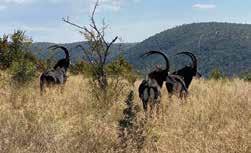














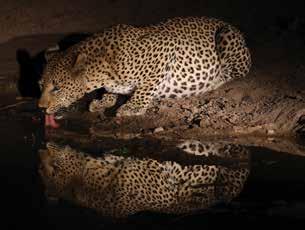
SA 1
7-DAY SABLE BULL OR ROAN
ANTELOPE HUNT FOR 1 HUNTER
($3,000 credit towards trophy fee, towards sable bull or roan antelope)
IBAMBA SAFARIS
Johan & Zelda Pretorius
P: +27832261690
E: johan@ibambasafaris.com
W: www.ibambasafaris.com
SA 2
7-DAY/6-NIGHT IMPALA & ZEBRA HUNT FOR 4 HUNTERS AND 4 NON-HUNTERS
(2 impala and 2 zebra to be shared between hunters are included) (100% FULLY DONATED)
DEKO SAFARIS
Gerhard Van Blerle
P: 27.82.855.0168
E: gerhard@dekosafaris.com
W: www.dekosafaris.com
SA 3
7-DAY/6-NIGHT IMPALA & BLESBUCK HUNT FOR 4 HUNTERS
(2 impala and 2 blesbuck to be shared between hunters are included) (100% FULLY DONATED)
DEKO SAFARIS
Gerhard Van Blerle
P: 27.82.855.0168
E: gerhard@dekosafaris.com
W: www.dekosafaris.com
SA 4
5 - DAY HUNT FOR ZEBRA, IMPALA, BLESBUCK, WARTHOG, MT REEDBUCK AND KLIPSPRINGER FOR 3 HUNTERS (Trophy Fees for 6 mentioned species to be split between 3 hunters)
SUPERIOR AFRICAN HUNTING SAFARIS
Eli Van Der Walt/Jeffrey Austin
P: 830.313.8724
E: rancho1024@yahoo.com
W: www.superiorsafaris.com
SA 5
5 - DAY/5 NIGHT EXCLUSIVE “BIG 5” PHOTO SAFARI FOR 2 PEOPLE WITH LUXURY LODGING MATTHEW GREEFF SAFARIS
Matthew & Sylvia Greeff
P: +27.83.265.2824
E: mgsafari@iafrica.com
W: www.matthewgreeffsafaris.com
SP 1
5-DAY BULL TAHR HUNT FOR 1 HUNTER FOR <1ICLUB 2026! (100% FULLY DONATED)
BLACKSTONE OUTFITTERS NZ
Corry & Sarah Walker
P: 64.27.488.6601
E: info@blackstoneoutfitters.nz
W: www.blackstoneoutfitters.nz

TAX 1
LIFE-SIZE WILD SHEEP MOUNT WITH HABITAT AND BASE DEER CREEK WILDLIFE STUDIO
Josh Hunt
P: 307.272.3718
E: deercreekwildlife@icloud.com
W: www.deercreekwildlifestudio.com
TAX 2
LIFE-SIZE NORTH AMERICAN SHEEP MOUNT
(100% FULLY DONATED) THE WILDLIFE GALLERY
Dan & Charlotte Catlin
P: 989.561.5369
E: dan@thewildlifegallery.com
W: www.thewildlifegallery.com
TAX 3
SOFT MOUNTED WOLF FOUNDATION FOR WILDLIFE MANAGEMENT (F4WM)
Justin Webb – Executive Director
P: 208-610-4455
E: info@f4wm.org




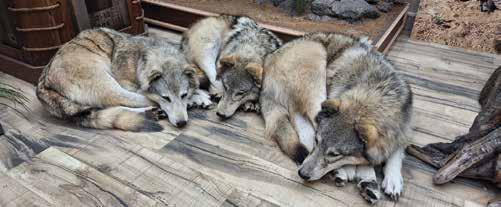
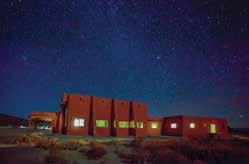





T 1






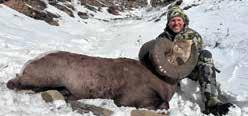

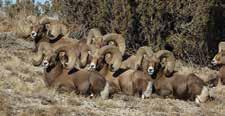



4-DAY/3-NIGHT EXCLUSIVE ADVENTURE AT LA PALMOSA FOR 6 PEOPLE (Culinary experience, wildlife viewing, spa and much more!) 100% FULLY DONATED LA PALMOSA
Emilio Espino P: 52.818.181.2924
E: info@lapalmosa.com W: www.lapalmosa.com
T 12
ONE WEEK STAY IN A MOUNTAIN CABIN IN THE BEAUTIFUL BIGHORN MOUNTAINS OF WYOMING (100% FULLY DONATED)
Jeff Geiger P: 614.668.8222
E: jeffrey_geiger@ml.com
NAVAJO NATION DESERT BIGHORN (2 AVAILABLE) NAVAJO NATION DEPARTMENT OF FISH & WILDLIFE
Jeff Cole P: 928.871.6595
E: jcole@nndfw.org
BRITISH COLUMBIA MOUNTAIN SHEEP SPECIAL HUNTING PERMIT BC FISH & WILDLIFE BRANCH, MINISTRY OF FORESTS AND THE HABITAT CONSERVATION TRUST FOUNDATION
Alicia Bates P: 250.739.8683
COLORADO ROCKY MOUNTAIN BIGHORN SHEEP LICENSE
ROCKY MOUNTAIN
BIGHORN SOCIETY
Terry Meyers, Executive DirectorRMBS
E: meyers.terry@gmail.com P: 970.640.6892
CONFEDERATED TRIBES OF WARM SPRINGS BRANCH OF NATURA RESOURCES - CA BIGHORN SHEEP PERMIT
CONFEDERATED TRIBES OF WARM SPRINGS BRANCH OF NATURAL RESOURCES
Austin Smith Jr - Branch of Natural Resources General Manager
P: 541.553.2046
E: wildlifetags@ctwsbnr.org

RPS Bancard LLC is the preferred merchant services provider for the Wild Sheep Foundation, and proud participating partner of the WSF WE GIVE Program.
RPS provides Retail and E-Commerce businesses with ultracompetitive rates for credit/debit card processing.
RPS will help minimize your company’s merchant services fees while maximizing your support of WSF, as RPS donates a percentage of your processing fees to the WSF Conservation Revolving Fund.
Join RPS in supporting the WSF WE GIVE Program, and support our shared passion for “Putting and Keeping Wild Sheep on the Mountain®”.






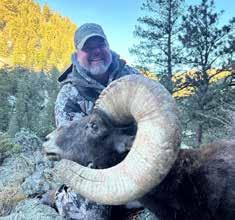
Species: Rocky Mountain bighorn Outfitter: Self-Guided, Archery Location: Colorado

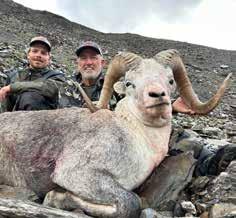
SPECIES: Stone’s sheep
OUTFITTER: Gundahoo River Outfitters

SPECIES: Bukharan markhor
OUTFITTER: Neal & Brownlee
GUIDE: Greg Brownlee
In the Spring 2025 issue, we included the incorrect field photo for Matt’s tremendous self-guided bighorn! Our apologies Matt.
I was fortunate to take this old ram on opening day in an archery-only unit. I watched this bruiser of a ram for close to three months, keeping close tabs on his habits. I scouted as much as I could with my wife and two children who nicknamed him “Bones”.
On December 1, opening day for this unit, I knew which path Bones would take to get water from the river. I glassed with a couple of close friends that accompanied me on my adventure and within minutes we had him spotted. I climbed up to just above the ram’s location and worked to within 20 yards of him when he came into view from behind a boulder. I drew back and released my arrow just as he presented a perfect opportunity at his vitals.
The challenge of taking a ram with a bow, and the outcome made this a once-in-a-lifetime opportunity I will never forget. I am thankful for my close friends and family that helped me throughout the whole process.WS
GUIDE: Isaac Thompson
LOCATION: British Columbia
Our first 11 days of the trip were great and we saw numerous rams and tons of sheep, just no mature rams. After a 12-hour horseback ride to a new area, I sustained a retinal bleed in my shooting eye and was unsure of how I was going to shoot if given the opportunity. And, while getting off my one-eyed horse named Chief, I slipped and crashed into the creek below me and cracked two ribs...Now what?
We piled in tent for the night amidst a torrential rain to be awakened by Isaac that a ram was some 800 yards above us. We got a closer look and determined he wasn’t mature. We went back to finish breakfast and coffee while I watched this ram come to within 160 yards— and after further review, Isaac realized he was wrong in his assessment, he was LEGAL!
He reappeared after crossing the creek below approximately 300 yards away. I couldn’t appropriately find him in my scope shooting left handed and with my non-dominant eye. I eventually found him in my scope at 414 yards and made a perfect shot. Awesome trip! WS
LOCATION: Tajikistan
February 2024, Tajikistan. My buddy V.T. and I touched down in Dushanbe, chasing a dream—and one incredible markhor. Greg Brownlee had set it up and was also with us, and soon we were bouncing along rough roads near the Afghan border, following the roaring Ponj River into the mountains.
Our guide paddled upriver like a legend, weaving through rapids to reach a camp tucked beneath blood-red cliffs. No time wasted—we grabbed gear, downed some tea, and piled into an old Russian truck for the high country.
By late afternoon, we spotted him. A giant markhor, king of the cliffs, standing bold at 690 yards. I took the shot. He dropped, wounded—but not done. We raced after him through punishing terrain, slipping, climbing, chasing hope.
Then, out of nowhere—movement. V.T. tossed me the rifle. One quick breath, 150 yards, offhand shot. He rolled down the slope.
Pure adrenaline. We laughed, snapped photos, and made our way back to camp—exhausted and buzzing with the kind of joy only a wild mountain can give you.
To adventure! WS


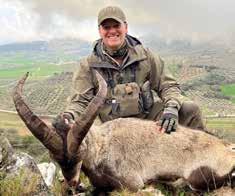

SPECIES: European Mouflon
OUTFITTER: Safari Outfitters
GUIDE: Fernando San Pio
LOCATION: Spain
EUROPEAN MOUFLON
Fog was the challenge in an area that was absolutely full of sheep, red deer, and wild boar. This hunt was like still hunting through the whitetail woods and glassing ridgetops when possible. After spotting various groups of ewes
and lambs, and a handful of younger rams, I finally had a long enough gap in the fog to locate the largest ram in a group of 25+ sheep and get lined up for a downhill, cross-canyon shot. He is a handsome sevem-year-old representative-class ram of the area, and I was honored to connect with him.
RHONDA IBEX
Rain and fog persisted all day as we played cat-and-mouse with a group of five “Machos.” After a lot of hiking through the brush and rocks in the morning, we went into the closest village for lunch and a re-group. That afternoon we had much of the same and the billies had moved from their earlier bedding location. We made a “last hour of light” play to try and cut off the direction we suspected they had headed, and as it can often happen, there they were, quite suddenly, about 180 yards below us and cross-canyon. A quick setup on the nearest rock offered enough support for a shot, and the rest is history. I was able to take a very nice, bronze-class, nine-year-old, silver-haired billy. This was my third of the Spanish ibex.
SE SPANISH—HISPANIC IBEX
Three days of dawn-to-dusk hiking, climbing, driving, and glassing finally put us above a large group of 17 billies near last light. It was a picturesque setting sheltered from the wind and rain in a canyon amongst the ruins of an ancient rock structure in short terraced orchards with apple, cherry, and olive trees. Unable to close to distance that evening, we returned first light the next morning in hopes they had hung tight to the area. We were beyond elated to find the group literally within fifty yards of where we had left them the night before, and this gorgeous 10-year-old billy gave me a brief opportunity in what was a very hectic few minutes of stalking through the orchard at just over 140 yards. He is an absolute monarch, large bodied, deep dark coloring, silver/gold class, and was blind in one eye to boot! WS

SPECIES: Bezoar ibex
OUTFITTER: Optimum Hunting
GUIDE: Sahin Vural
LOCATION: Turkey
I have always dreamed of hunting Ibex in the Pasha of the Taurus Mountains. This was my first Capra hunt. I was greeted by beautiful country and hunt alongside great people. We saw a lot ibex, but unfortunately, the weather conditions weren’t optimal with fog, wind and snow. To be honest, my skills are not aligned with long distance shooting as I primarily hunt in Africa. Mountain hunting was a different experience for me! I shot an eight-year-old bezoar at 480 meters, just five hours before my flight on the last day of my hunt. It is an absolutely gorgeous animal to go along with the beautiful landscape I experienced. I will absolutely go back to Turkey and hunt there again! WS

SPECIES: Barbary sheep
OUTFITTER: Go with Bo Outfitting
GUIDE: Joffrey Fecomme
LOCATION: Morocco
I travelled to Oujda, Morocco in November 2024 to hunt for beautiful aoudad in their native haunts of the Atlas Mountains. It was an exciting adventure in an exotic land. Sheep camp consisted of a well-appointed guest house with pool, restaurant, bar, patio, warm showers, comfy beds, and in-house masseuse. It was indeed, an “Old Man’s Hunt”. I took this nineyear-old ram on the third day. WS

SPECIES: Fannin sheep
OUTFITTER: NWT Outfitters
GUIDE: Robert Kelly Wieb
LOCATION: Northwest Territories
It was a perfect day in the Mackenzie Mountains! Kelly and I spotted two rams within 45 minutes of leaving our tent on the first day. We watched them feed on a steep rock cliff at about 1600 yards. Once they went around a rocky edge, we started to make our move up a wash to get above the rams. After a couple hours of checking each chute, we came to the last one and there they were. I made a solid downhill shot at about 110 yards and the ram took a nasty fall. Fortunately, the ram was in good shape once we got to him—an awesome Fannin ram! WS

SPECIES: Desert sheep
OUTFITTER: Mesquite Mountain
Outfitters
GUIDE: Nick Morris
LOCATION: Sonora
We had found two target rams in the first three days of hunting.
On day four we decided to make a climb to the top of the mountain with the hope of turning up the larger of the two. Within minutes one of the spotters found my ram bedded at 360 yards.
After missing my first shot the ram gave me another opportunity and was able to put him down.
The scenery and country we hunted was incredible with the Sea of Cortez in the background. It was a beautiful backdrop with the ram that completed my FNAWS. WS
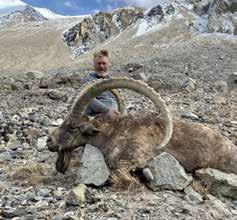
SPECIES: Mid Asian ibex
BOOKING AGENT: Dmitry Borisov
LOCAL GUIDE: Yuri Stepavskoy
LOCATION: Tajikistan
Had a good hunt with my buddy, Lyle Wood, in Tajikistan’s Pamir Mountains last September. As most know, Tajik can be challenging and frustrating in many ways, but it always makes for an overall great adventure. Organizations like WSF among many others are certainly helping Asian countries build on their resource and move forward with conservation efforts. Can wait to go back this fall. WS

SPECIES: Desert sheep
OUTFITTER: Hunt Mexico
GUIDE: Chewy
LOCATION: Baja Mexico
This was such a beautiful place and absolutely wonderful country to hunt sheep. I was able to take this 12-yearold ram on the last day of the hunt. My good friend and fellow Wild Sheep Member, Dan Kluth, was able to join me on this hunt, taking a beautiful ram of his own. WS




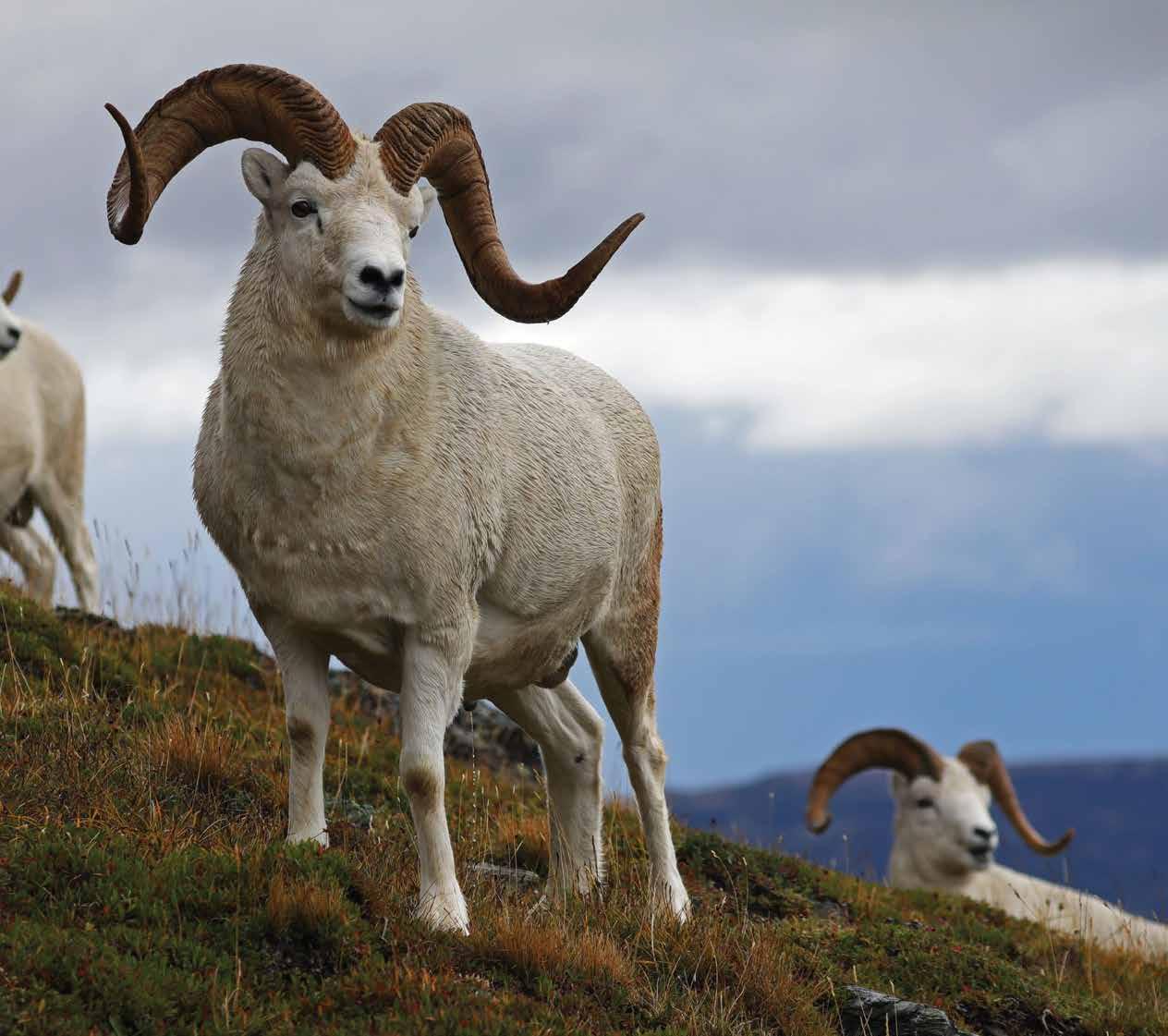

| www.wildsheepfoundation.org


The following <1 Club® or <1iClub® members have LOST their membership status by taking their first wild sheep rams! Congratulations!

Dylan Hitner—Stone’s sheep
My decision to pursue a Stone’s Sheep started with an ill-fated climb up a ladder, and onto the roof of my house to take a quick measurement. After an unexpectedly rapid decent onto concrete resulted in multiple reconstructive wrist and elbow surgeries, I found myself struggling through physical therapy, overweight, and in the worst shape of my life. I needed something on my horizon to work towards, and I knew there would be nothing to motivate me like a sheep hunt. After talking to several outfitters at the 2023 Sheep Show®, I met Darwin, Wendy, and their daughter, Trina, with Scoop Lake Outfitters. After conversing with them throughout the show, I signed up to hunt Stone’s sheep in 2024.
I arrived at Scoop Lake in the best physical shape I had been in for 20 years, and 65 pounds lighter than my post-accident weight. Darwin flew us out to a remote cabin where we would start our trek. My guides and I spent the next week covering many miles of the most breathtaking country in the world. We spotted several groups of younger rams over the first few days, but hadn’t yet turned up a mature ram. On our 6th day we spotted what looked like a very
good ram on one of the steepest and most difficultto-access ridges around. As it was too late to attempt a stalk that day, we watched him until twilight and formulated a strategy for the following day.
The following morning, we started the stalk, slipping, sliding, and clambering our way down the rock faces. At the bottom, we emptied our packs and started the near-vertical climb up the other side.
After belly crawling up onto the last pinnacle, we spotted the rams bedded a little over 200 yards from us. My guide had to study him a bit to verify his age, then gave me the go ahead. A well-placed shot (with a follow-up for insurance), and he quickly went down; however, being on one of the steepest hillsides around, we had to watch as he tumbled end over end until he went out of sight.
Although exhilarated by the moment, I was a bit apprehensive about how intact the ram might be after such a tumble. Fortunately, my worries were for naught, as he had hung up in the rocks just out of sight from where we had seen him disappear. I had successfully harvested my first wild sheep! We had to dig a ledge onto the sheer shale hillside to place him for pictures and processing.
The next day we were looking at a ~30 mile pack back through difficult terrain to the lake we had been dropped off at, so I was extremely relieved when we found out they would be able to pick us up from the river in a jet boat, a mere eight-mile downhill hike away. The scenic ~100 mile jet boat ride back to the main camp capped off a trip of my dreams.
The trip was everything I was looking for in a sheep hunt and then some. It was extremely challenging but indescribably rewarding. My guides, Tyler and Dave, and photographer,Trina, helped to make the trip a success with their upbeat attitudes, humor, hard work, and determination. There is nothing quite like spending time in the mountains with people that hunt hard and have fun doing it. WS
Way to get in shape Dylan! You are Kicked Out!

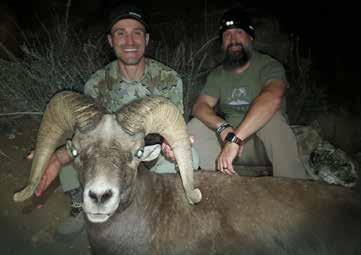
Josh Cafasso—Rocky Mountain bighorn
I’d been dreaming of this hunt for years. The chance to pursue a trophy Rocky Mountain bighorn sheep in Unit S49 was a dream come true. I partnered with Sangre de Cristo Outfitters out of Westcliffe, Colorado. I was also very grateful my friend, Grant, joined us since he hunted the same exact unit last year.
Our hunt began on October 2nd. Days turned into nights as we hiked the rugged terrain. By the fifth day, our persistence paid off. We spotted a small band of


rams, including a magnificent dark chocolate ram. As they locked horns in a fierce display of strength, we watched in awe.
The next few days were a rollercoaster of emotions. We got close, but the elusive rams always seemed to slip away, whether it was due to our own mistakes or simply their incredible instincts. On one occasion, a bystander spotted us stalking the rams, alerting them to our presence. Another time, we tried to herd them into a more open area, but they outsmarted us, disappearing over the horizon.
Finally, on the ninth day, our luck changed. We spotted the dark chocolate ram again. With a steady hand, I took a 400-yard shot. The ram went down, but our work was far from over.
As darkness fell, we embarked on a challenging night hike to recover the trophy. The terrain was steep and treacherous, and we had to navigate through the dark, keeping an eye out for mountain lions. After hours of searching, we finally found the ram.
This hunt was a test of skill, endurance, and patience. It was a reminder of the raw beauty of the wilderness and the thrill of the chase. The memories of those ten days will stay with me forever. WS
We know you like chocolate Josh,but you are Kicked Out!
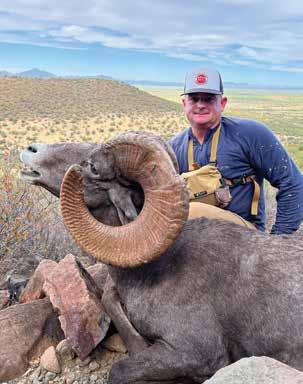





This all started at the end of 2023 after I took my dad on his dream moose hunt in British Columbia for his 70th birthday. That trip opened my eyes to a whole new world of big game hunting. Back home in Texas with 300 pounds of moose meat, I returned to work and family life—but I couldn’t stop thinking about more adventures. One night, I stumbled across a raffle by the Alaska Outdoor Council for a desert bighorn sheep hunt. Sheep hunting had never even crossed my mind, but I figured, “Heck, why not?” I bought one ticket, fully expecting it to be a donation.
On October 23, my phone rang during dinner—an Alaska number. I almost ignored it, thinking it was spam. It wasn’t. On the line was Caleb Martin, AOC’s director: “Hey there! Is this Tony Vindell? I’m holding your winning ticket for a desert bighorn sheep hunt.” I was speechless. People wait 30 years for a tag like this, and I’d won on my first-ever sheep raffle.
The outfitter, David Artee from Sonora, Mexico, reached out soon after. With our second child on the way, David graciously allowed me to postpone until the following season. I spent the next year training— physically and at the range—wanting to be ready for the opportunity of a lifetime.
Finally, I landed in Hermosillo with my dad. We met up with David, his brother, Alex, and their guides before heading out to camp.
Day one was humbling. I thought I had an “eagle eye” for spotting game, but sheep are a different story. I stared at the mountains, sure there was nothing there—until Freddy, one of the guides, spotted a ewe. I had been looking at the same spot for 10 minutes and saw nothing. Thankfully, David, Freddy, and Juan Carlos knew these mountains intimately. We saw plenty of sheep that day, including a promising ram at dusk, but had no time to make a move.
On day two, we hiked six miles trying to relocate that ram but came up empty. While scouting another area before lunch, David spotted a monster ram
at 1,000 yards. We began a stalk and got within 200 yards. Just as I set up for the shot, an unseen ram busted us, and both took off like rockets. My adrenaline was through the roof.
Later that afternoon, we moved to a new range. Freddy barely got out of the truck before whispering, “Borregon! Shh!” A big ram stood behind a single cholla cactus, 1,200 yards away. Back at camp, David had asked for my comfort zone, which I’d told him was 400 yards. He said, “We’re going to make a stalk, and I’ll get you to 500. I’m confident you can make that shot.” I replied, “Well, I’m glad one of us is!”
We crept through the desert, David checking the range every hundred yards. At 500 yards, I asked if we could get just a bit closer. We moved to a palo verde tree—final range: 465. That “four” at the beginning did wonders for my nerves.
The angle was steep, and all my practice shooting prone or off a bipod didn’t apply. I used both guides’ shooting sticks—one supporting the front of the rifle, the other the butt—while I stood awkwardly, trying to steady my aim. The ram stood quartered toward me, and even the tiniest movement pulled my crosshairs off. I waited, calmed my breathing, and squeezed the trigger. The ram stumbled, ran about 40 yards, then stopped. I fired again. He dropped.
Freddy and David burst into celebration, running over to hug me. My dad and Juan Carlos joined us, and the celebration began.
We climbed the mountain and found the ram lying in a thick patch of thorns. He was even more stunning up close—massive horns with beautiful coloration. I was officially out of the <1 Club! We took photos and packed him out.
Back at camp, the camaraderie was just as special. Everyone celebrated each other’s successes around the fire. That night we grilled sheep backstraps over an open flame and told stories late into the night.
In the days that followed, more hunts took place. I tagged a javelina while others harvested beautiful desert mule deer. David Artee has a great operation with an outstanding group of people on his team. The access to thousands of acres of low fence land making these hunts completely free range and fair chase is what truly makes these hunts more special, and I can’t speak highly enough of the experience and his team.
A huge thanks to Caleb Martin and the Alaska Outdoor Council. Yes, these raffles are real—I’m proof. Even if you don’t win, your money goes to conservation. For now, I’m waiting on customs and permits to get my ram back home. But this experience lit a fire in me. I’m now setting my sights on someday completing my FNAWS. Unless I hit the lottery, I’ll be buying raffle tickets like never before! WS
You sure are lucky Tony, but you are Kicked Out!

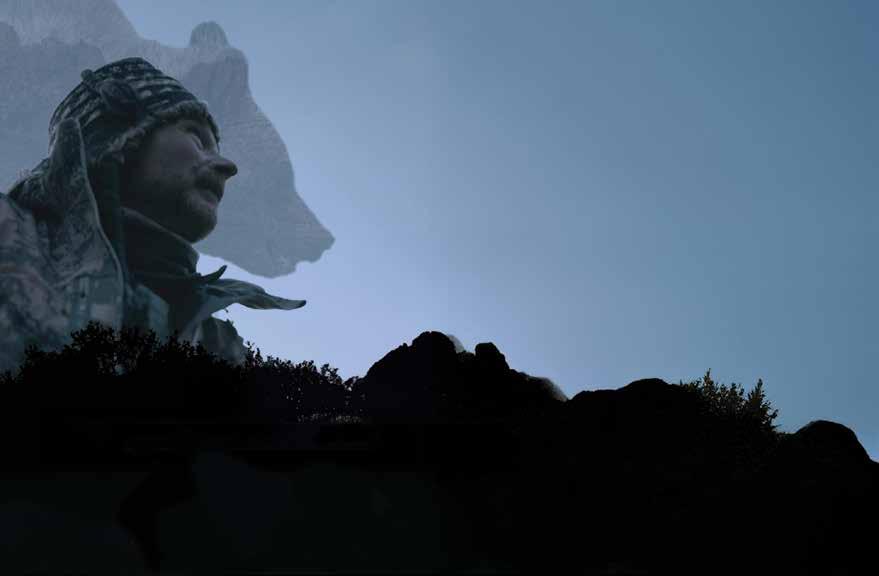



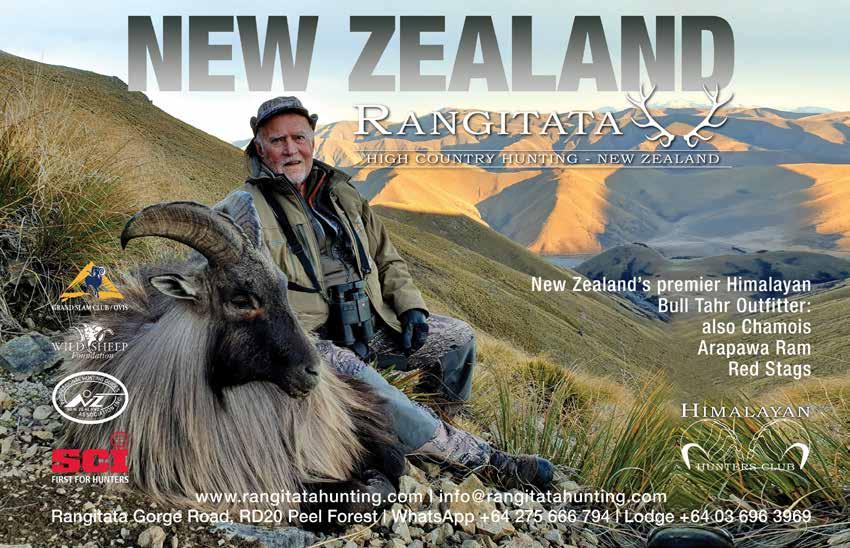











Fernando Saiz
Nano was more than a hunter; he was a visionary whose lifelong mission was to elevate Spain’s name on the global stage, especially in the United States.
Born in Madrid on September 19, 1947, he was an architect, but his passion for the outdoors led him to dedicate his life to hunting. Intelligent, persistent, and shrewd, he was able to organize expeditions in Spain that attracted notable figures such as President George H. W. Bush and General Norman Schwarzkopf. He was the first Spaniard
to receive the “Outstanding International Professional Hunter” award and the first Spanish recipient of the prestigious C.J. McElroy Award from Safari Club International.
Fernando’s entrepreneurial spirit led him to co-found Venatoria, a premier hunting show that evolved into Cinegética - SCI, Spain’s most international hunting convention. He was in love with hunting in the mountains, which led him to co-found the Culminum Magister Brotherhood and Award, the highest honor bestowed upon high mountain hunters, reflecting
his commitment to recognizing hunter excellence.
His estate, Pinos Altos, became a symbol of luxury and tradition, thanks in large part to the efforts of his wife, my aunt Koki. Together, they transformed it into a fivestar destination renowned for its hospitality and culinary excellence.
Despite battling rheumatoid arthritis from a young age, Fernando’s passion for hunting never waned. He ventured from the Arctic to Africa, and especially in the Asian mountains, which he deeply loved, demonstrating resilience and determination in the face of adversity.
A true gentleman, a devoted husband, and the most formidable and admirable mentor one could ever ask for. He was outstanding.
Fernando passed away on May 19, 2025, in Madrid. His legacy as a pioneer, a dedicated conservationist, and an extremely caring person, endures in the hearts of those who knew him and in the traditions he helped preserve.
These sad days we have been sharing laughs and tears with Koki, Beltran, and all our family. WS
Juan Mitjans

“Out of suffering have emerged the strongest souls; the most massive characters are seared with scars.”
— Kahlil Gibran
“Instead of possibilities, I have realities in my past, not only the reality of work done and of love loved, but of sufferings bravely suffered. These sufferings are even the things of which I am most proud, although these are things which cannot inspire envy.”
— Viktor E. Frankl, Man’s Search for Meaning
Lora Gene Young, huntress, international hunting guide, sunny soul, tireless go-getter, inspiration and world traveler, departed this life on February 25, 2025, at her home in Lansing, NC. She was 41.
Born in Concord, NC, to Charles Martin and Carla

Fields Young, Lora was a force of nature—fearless, adventurous and deeply compassionate. She was a proud graduate of Ashe County High School’s Class of 2002 and later earned her Ag Journalism degree from North Carolina State University in 2006. She further pursued her passion by obtaining a master’s degree in International Agricultural Relations/Ecology from Oklahoma State University.
As a highly respected hunting guide, Lora worked in New Zealand, Australia, Canada and across the United States. A member of WSF, she was featured in a story about her guiding career in the Fall 2018 edition of Wild Sheep® magazine. Lora was also a visible and uplifting presence at many a Sheep Shows®, where she worked the booth for Kiwi outfitter, Croc Adams, of Southern Mountain Adventures and, with her bubbly personality, she cultivated legions of friends. Taking great pride in her work, Lora ensured the best experience for those she guided while managing all aspects of camp.
Most of all, Lora loved her family—both immediate and extended—and held them all close to her heart. Her love appeared in many forms, including her Facebook page, where she shared her joyful worldwide wanderings
Paula Wilson
Paula A. Wilson, age 74, of Hardyston NJ, passed away peacefully at her home on Sunday, June 15, 2025 after a long illness. Born in Brooklyn, NY, Paula was raised in Central Islip, Long Island. She resided in the Blue Heron Lake community in Dingmans Ferry for 20 years before moving to Hardyston Township, 10 years ago. Paula was a devoted wife and mother. She was a Summit Life member of the Wild Sheep Foundation and a Pinnacle Member
as a self-described gypsy nomad hunter and, later, her hope, humor, struggles and courage living with metastatic breast cancer. She remained upbeat and kind even through years of suffering, setbacks and dim prospects for recovery.
The family wishes to express their heartfelt gratitude to the many people who have offered their prayers, kindness and support throughout Lora’s yearslong battle with metastatic breast cancer, especially the Lansing Bridge to Recovery, the Lansing Community, and her Footsloggers family.
In honor of Lora’s wishes, a Celebration of Life, or “Party” as she preferred to call it, was held at Helton Creek Community Center in Lansing, NC, on March 2, 2025. Her March 2 Celebration of Life can be viewed online at https:// mjpc.org/archive/.
Memorial contributions may be made to: Lansing Bridge to Recovery (www.lansingbtr. org/donate), Northern Peaks State Trail/Paddy Mountain (blueridgeconservancy.org/ northern-peaks-trail), Mountainsto-Sea Trail (mountainstoseatrail. org), or SECU Family House in Winston Salem NC (www. familyhousews.org).
We’ll see you on the mountain one day, our beautiful gypsy nomad. WS
of the Eastern Chapter Wild Sheep Foundation. Paula enjoyed traveling with her husband, Jim for conservation conventions, attending over 20 years of “Sheep Shows” and Eastern Chapter WSF events. They enjoyed visiting family and traveling whenever they could. They took several great cruises and cross country road trips.
In lieu of flowers, donations in Paula’s memory may be made to St Judes Children’s Research Hospital or Eastern Chapter Wild Sheep Foundation. WS

George Andrew Van Den Berg
George Andrew Van Den Berg, age 90, passed away on Friday, Nov 1, 2024 at home in Bayfield surrounded by his loving family. He was born August 1,1934 to Andrew and Kleo Van Den Berg

Lee Howard
Lee Earl Howard passed peacefully at home, surrounded by his loving wife, Carol, and his family on April 6th, 2025. Born June 5th, 1940, in Hailey, Idaho, Lee was an avid outdoorsman. From the time he was old enough to carry a gun, he could be found roaming the hills, valleys, and forests around Carey, Idaho, hunting, fishing, and providing food for his family and the community.
in Crawford, CO. George felt one of his luckiest moments in life (and there were many), was his marriage to whom he referred to as “Amazing Grace” Sossaman. They found much happiness in their years together and shared a love for history, the local community and watching the Denver Broncos. He was a member and past Elder of the Florida Mesa Church in Durango where he met Grace. He grew up with his siblings on a ranch in Crawford, CO, which was foundational to his farming and hunting roots. He served as a barber in the Navy and had the opportunity to see much of the world while serving his country. George later became a longtime resident of the Durango/Bayfield area. In that time, he sought the adventure of having a “birds-eye
After moving to Boise, Idaho, he graduated from Bora High School and then attended Brigham Young University, where he met the love of his life, Carol Gwen Wimmer. They were sealed in the Logan Temple on September 6, 1962. Upon graduating from the “Y” with a degree in Geography, he and Carol built a home and moved to Salt Lake City.
Over the next sixty years, they raised four children in that home and served faithfully in their church and local community. As one who always gave back, Lee served as a reserve officer for the Salt Lake City Police Department and as a mentor to young men in the Boy Scouts of America. Lee loved to design, build, and create. With his natural ability to connect with people, he excelled as a private business owner and consultant across various industries, all while maintaining an enduring passion for the outdoors and wildlife.
Lee served in many wildlife organizations, co-founding the Utah Chapter of the Wild Sheep
view” of Colorado and became a skilled mountain pilot. He spent many years flying to the high country and keeping track of bighorn sheep. He was most proud of serving two terms as a Colorado Wildlife Commissioner.
George was very sociable and established many lifelong friendships in the area and with the outdoor community. He possessed an extraordinary passion for the mountains, wildlife, family, and friends. We know him best as a storyteller of many journeys in the high country, Canada, and Mexico. He was a lifelong hunter which later transitioned to capturing wildlife through photography. He held a deep desire and knowledge specifically of wild sheep and dedicated much of his life to their preservation. WS
Foundation, where he served as president and director. He was instrumental in numerous local and multistate conservation projects. Ever the champion for wildlife and hunters, he met with many government officials and traveled internationally to increase awareness and support for wild sheep.
Lee had numerous friends from all walks of life and will always be remembered for his loyalty, honesty, and humor. He valued his friendships and worked hard to maintain them. A devoted father, he shared his knowledge, skills, and love for the outdoors with his family, taking them hunting, fishing, camping, and on countless adventures. Yet, his heart always belonged to Carol. She stood by him in all his endeavors and was always by his side. Carol was the center of his life and on those occasions when he had to leave home alone for work, hunting, or on behalf of the organizations he served, he always returned home to her. WS

Ron Dube
Ronald Roger Dube (1942-2025) passed away peacefully with his family gathered around him on
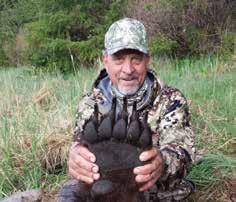
Scott Talbott
It is with great sadness that I write this to let everyone know that former Wyoming Game & Fish Director Scott Talbott passed away with friends and family at his side

Steve Kilpatrick
Steve
Kilpatrick, a dedicated conservationist and retired Wyoming Game and Fish habitat
May 15, 2025, in Cody, WY. He was born on May 8, 1942 in Nashua, NH. Ron married his high school sweetheart, Carol, in 1961, and they recently celebrated 64 years together. Ron’s love affair with Wyoming began 52 years ago. He had a calling to live in the West and was so drawn to Wyoming that he and Carol moved their four sons, two horses, and the family dog to Buffalo, WY when he was just 30. Together they purchased and ran Caribou Resort in the Big Horn Mountains, and Ron realized his dream of becoming a big game outfitter. In 1987 they moved to Cody, where Ron and
after a long battle with cancer. Scott fought like hell up until the very end, and endured endless treatments and travel to just keep going. Anyone that knew Scott knows that he lived his life to the absolute fullest, and never spent a single moment laying around when he could be out hunting, fishing, socializing, or advocating for wildlife. When I went to see Scott, one of the first things he asked about was how the Commission Meeting went. In fact, every time I saw Scott since he retired in 2019, he would ask how things were in the agency. He lived and breathed Game and Fish to his core. Scott used to always say,
biologist, died in Lander on May 4, leaving a legacy of dedication to preserving Wyoming’s natural heritage. He was 70. The following was provided by his family: Born in Neligh, Nebraska, Steve’s early connection to nature instilled a lifelong commitment to wildlife and habitat conservation. After earning his degree in wildlife biology, Steve began his career with the Wyoming Game and Fish Department in 1978, eventually serving as the habitat area supervisor for the Jackson, Pinedale, and Green River regions. Throughout his tenure, he led
Carol continued their outfitting business for many years, while Ron guided hunters for big game in the Thorofare.
Ron was the quintessential outdoors man. He had a soulconnection with the great outdoors for 73 years. His purpose on earth was to not only enjoy the outdoors but to fully immerse and understand the details and nuances of nature and animals and to inspire and educate others to do the same. Ron believed it was a privilege and an honor to live his purpose in Wyoming. In 2023, he was inducted into the Wyoming Outdoor Hall of Fame. WS
“I’ve been blessed to have been a Game Warden in Newcastle, a Wildlife Investigator, a Regional Wildlife Supervisor in both Green River and Casper, a Deputy Chief, and a Director...and it was one hell of a ride, and even if given the opportunity to start my life over again, I wouldn’t do a damn thing different!” Scott cared deeply about Wyoming’s wildlife, and his dedication to this Department was unparalleled over his 34 years of service. Scott’s legacy and mark on this agency will endure for a long time to come. Scott was a mentor to many, an incredible leader, a good friend, and he will be missed. WS
numerous interagency initiatives to balance the needs of agricultural producers and wildlife, positively impacting over 530,000 acres of habitat in northwest Wyoming. Following his retirement, Steve remained active in conservation through his work with the Teton Science Schools, Wyoming Wildlife Federation, and Wyoming Wild Sheep Foundation. He also served on the board of the National Bighorn Sheep Center, contributing his expertise to the preservation of this iconic species. WS

Denise Swanson
Denise Ann Swanson, 61, of Deerfield Beach, Florida, passed away on May 31, 2025, leaving

Haskell Stricklen
November 21, 1959 – April 8, 2025
“If you needed to bury a body, no questions asked, and all he’d do is reply ‘when, where and do I need to bring a shovel?’, who would you call?” That was a defining question when deciding on who was to be my Best Man. The answer came immediately and without hesitation. “Haskell Stricklen.”
Haskell was born November 21, 1959 in Dallas, Texas and passed April 8, 2025 in Deming, New
behind a legacy of kindness, courage, and boundless curiosity.
Born on March 12, 1964, in Cincinnati, Ohio, Denise was the beloved daughter of Bernie and Elena Fiedeldey. She grew up surrounded by a close-knit family—all of whom were inspired by her strength, compassion, and adventurous spirit.
Denise was a woman full of life, known for her ever-positive attitude and love for the outdoors. Whether hiking a trail, exploring new places, or simply enjoying the beauty of nature, she found joy and inspiration in the world around her. She had a deep sense of empathy and a heart for the underdog, always ready to lend a hand or an ear to those in need.
Professionally, Denise built
Mexico. He is survived by his two step sons, his beloved lab River, and friends from around the world who knew him throughout his life’s journey for his laugh, his passions, his kind words, his caring ear, and most of all, his loyalty.
Besides training and spending countless hours with his dogs, his greatest passion was fly fishing. He taught fly casting through his work at Bass Pro Shops, Orvis, and Tailwaters Fly Fishing Company, introducing many to the art of casting a fly. He cast his own in the western USA for warm and cold water species—his perfect loops and graceful casting motion a marvel to see. Some of his favorite times were fly fishing the Sea of Cortez with Texas mates, where he landed dorado, tuna, roosterfish, and surprisingly, even a striped marlin, brought to the panga on 15 lb test line and diminutive size #4 bucktail Clouser. His laugh and stories, with that Texas drawl, while drinking an ice cold Pacifico on a beach in the
a successful career in business intelligence technology. Beyond her technical expertise, she was a gifted teacher and mentor, with a passion for helping others grow and succeed. Her patience, insight, and encouragement left a lasting impact on colleagues and friends alike.
In lieu of flowers, the family kindly requests that donations be made to the Miami University Denise Fiedeldey Swanson
Endowed Scholarship Fund— where she nurtured her love for learning—or dedicated to the Southeastern Chapter of Wild Sheep Foundation Scholarship Fund, reflecting her enduring connection to nature and wildlife.
Denise’s Warmth, wisdom, and spirit will be deeply missed by all who knew and loved her. WS
Eastern Cape or in a surfside bar in Loreto, BCS are forever seared into my mind.
In the hunting and conservation community he served us well at Dallas Safari Club, Rowland Ward, and for more than a decade as a stalwart volunteer for Wild Sheep Foundation at our annual Sheep Show® convention. Hack was a staff favorite as he was mine. Haskell managed WSF’s daily seminars, helped with signage, set out awards on stage, and did anything and everything asked, and his feathers never ruffled when he was needed in an “oh sh*t” moment to help solve a behind-the-scenes show crisis. His loyalty shown like a bright star for his evening banquets gig as WSF’s stage manager, deftly marshalling speakers and award recipients to the stage with a smile but firm “you need to be stage right now!” urge.
You were my six Hack, and always will be. Until we fish and laugh together again… WS
– Gray N. Thornton

We lost one of the hunting communities’ great hunters—”a hunter’s hunter”—on May 26th, with the passing of Rich Pierce, following a valiant struggle against cancer. Rich was a quiet fellow, always listened to others, but was also a dedicated hunter that let no obstacle, rain, snow, or the ravages of cancer deter him. His striking trophy/memory room is packed, and each animal within is an excellent specimen. Most notable are his superb collections of mule deer, blacktail deer and a mountain diorama of four+ FNAWS, plus great specimens of European and Asian sheep and ibex, as well as many African species. He never had any of his collections officially scored, nor did he enter into any award programs. If he had, he would have re-written the record book in several categories. When not hunting, Rich managed the family plumbing contracting business. Rich was very generous, and, despite his many achievements, was still a humble and approachable person, as well as a prolific and gifted storyteller. He is survived by his brother Dennis and sister Diane. He was a life member of SCI, Hunter Legacy Fund Member, Golden Gate Life member, former Golden Gate Board member, and a life member of many other sportsmen’s organizations. WS


•
•
•
•
•
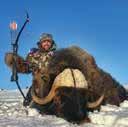




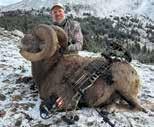

















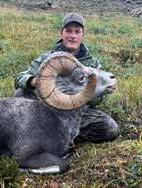





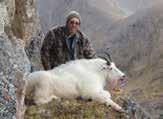


































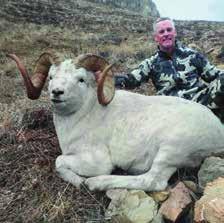



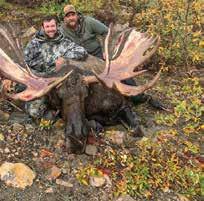
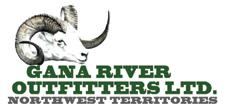















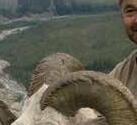


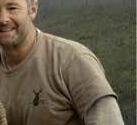

























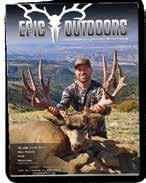
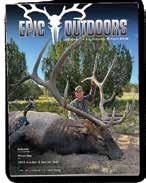










by Ken Nowicki

La cucaracha, la cucaracha, ya no puede caminar porque no tiene, porque le falta las dos patitas de atrás* *ThE cockroach is coming - spanish
“S
crew’wum, Boy,” mouthed Lead-On Highfee. I was taken aback.
“What’s that, is everything OK?” I hoped he wasn’t mad at me. I could see his mouth was full. I saw he was trying to hold his chew and shovel in some toast and talk at the same time.
Packtrain was schlerping coffee. I knew he had a chew in his cheek too.
“They’s crossing the Texas Border Boy. Thousands of them.” Bang—he crashed his horny old fist into the counter. “It’s going to be a disaster. We got to call Gray and see if the Sheep Foundation can send in the troops.”
Oops, we looked up and Ruby was standing right there and she didn’t look happy with her eyes shooting laser beams and her hands brandishing a spatula. “And what seems to be the problem down here?”
“Uh, Ruby,” stammered Packtrain. “The Boy was just getting worked up about that infestation of screwworms coming up from our good friends in Mexico. Hey, how about some of those fish tacos you got on special? We’ll take a mess of them.”
The cockroach, the cockroach, Can’t walk anymore Because it doesn’t have, Because it’s missing Two little back legs.* La cucaracha - EngLish

“That was close,” I said when Ruby flounced back to the grill. But I was sure I caught a smile on her face.
Lead-On didn’t wait long to elucidate for me. “Cochliomyia hominivorax Boy, or cockralls for short. The colloquial English word is screwworms. Some down in Latin America call them Maneaters.”
“Them flies are mean, Boy. They go straight into the nose
and the maggots crawl right up into the brains.”
Lead-On Highfee has an encyclopedic memory for anything relating to the natural world and he never wasted all his time setting around in the winter between hunting seasons. He could rattle off Linnean taxonomies on everything from insects to all four of our Slamo Grande species of sheep. The fact was that Lead-On has proof, he says, that the so-called extinct Audubon bighorns are still to be found in a small chunk of badlands in southern Saskatchewan, but he is not revealing exactly where. He also has sub-groups identified for desert, California, bighorns, Stone’s, and Dall’s, with some of them divided and subdivided. As an outfitter, he even promoted his areas as the only place to get midget sheep and some collectors bought into the program. He subdivided them into Ovis Minimosis. Some guys just had to have one. But on other matters he is also well versed.
“These screwworms is far worse than a blowfly. Screwworms are devil worms. The will devastate our cattle industry. They kill horses. Packtrain will be riding donkeys when those flies get into that glue

factory he is running.”
That had Packtrain MacNammee’s eyes bugging. He took pride in his horses. These days he is downsized from his outfitting days when he had a remuda numbering into the hundreds. He still keeps a small bunch to run a guide’s school and take a few tourists from his boundary stables. Some of his string are real gentle and even carry stampede rodeo brands. They must be worth a lot of money.
But Packtrain was worried too, and he let the little snipe pass. “We got a problem Boy. Those worms will magnify and come north and there won’t be nothing to stop them. I’m worried about my horses for sure, but I am just sick about the sheep we might lose.”
“Only thing will save them is a cold snap. We need Texas to frost up and a big chill across the entire south of the USA. Them flies are just like monarch butterflies and they can migrate all the way to Alaska,” Lead-On said, his head shaking and jerking like he was having a fit. “Oh the inhumanity of it,” and he just about bobbled off his stool.
“It needs to be 40 below zero before the flies will freeze. It don’t get that cold in Texas,” Packtrain shook his head. “We been through this with pine beetles and sawflies, caterpillars, ticks and them pesky wasps and bees, too. Talk about a train wreck for a pack string.”
“I met lots of Texans who told me it gets forty below in Texas,” I said. The two old coots just rolled their eyes and leered at Ruby swinging in to deliver some goods.
Ruby had our tacos and more coffee and we sat in near silence for
a bit as we all chomped and gulped those Mexican delights and slurped her coffee, now known as café and twice the price.
I like to be quiet when we eat because my old friends have lost a lot of teeth and when they talk and eat at the same time it is a bit sporty dodging all the spittle. We crouched like crows sitting on stools at the counter of Ruby’s Café. I like to drop in and visit twice a week and attempt to pry some hunting tips out of the old codgers. Tips on where to hunt rams are the most valuable but I get very few of them. They do hand out advice on how to hunt sheep on occasion.
“See, Boy,” Lead-On continued. “Most flies lay eggs on rotten meat. The eggs become maggots and they finish the decomposition of a carcass, if they can get it before the birds and bears. And birds and bears love to hoover up flies and maggots too. But these screwworms get right into killing the animals. They can get into any place hot and smelly, like your pits or your ears or your nose.” I recoiled from that. Perish the thought. “They love boring a hole up into the skull,” he said. “They’ll turn the skull into a sponge.”
Ruby has free wi-fi in her coffee house now. She started listing it in the Kootenai Tattler as a Bistro, when she got the fancy coffees, but we all think of it homey as a kitchen and all the reprobates rub shoulders with the town’s business elite and the houndsmen who come in after a morning chasing cats and bears. It can get pretty snorky in there. There are often a few flies butting heads on the window panes. I shuddered.
I did a Siri search and checked
up on screwworms while the outfitters filled up on a tacos. I was gobsmacked with the number of hits. It appears that the US Department of Agriculture is geared up big time. The first line of defence is to stop the spread of screw worms by cutting off livestock coming from the south. They call this a nuclear solution. I am not sure why. I read some of the material to Packtrain and Lead-On. They don’t do internet and still have cable TV. But Lead-On is better educated than most people I know. And he thinks ahead.
“You better make sure that any sheep capes you bring from Mexico is well-dipped and dried, Boy,” said Lead-On. “Now they are looking for more than ticks at the border. They’ll be sharp eyed for screwworms catching rides on the capes.”
“Sheep got the best chance to survive this plague,” mused Packtrain. “Sheep are smart. They get right up on top and sit in the breeze. You want to find rams, Boy. Look up.”
“You best get down to Old Mexico and get a desert before the flies take hold,” advised LeadOn. “I’m not joshing. These screwworms could end hunting for years until things bounce back.”
“But what can we do to help the sheep?” I am always ready to jump in and volunteer.
“Well, Boy,” said Lead-On. “You might do some scouting around and see if we got any up in this neck of the woods. Maybe those flies are up on Sheep Mountain now.”
“Yahhs,” said Packtrain. “Get that mutt of yours and teach it how to smell them out. They get under rocks in the day and you and
Persnix won’t get bit during the daytime. It’s at night those screw worms get nasty.”
“Flip over the rocks and check for the flies and the larvae. They look just like a maggot, but supersize. Mind you keep your fingers and nose away from them.”
“We can alert the Sheep Foundation if you find any. Look up high in the rocks. Do some prospecting. Make yourself useful.”
It was a great idea. My dog Persnix, named because he can be persnickety, has a wonderful nose.
“Keep an eye out for any dead sheep. Maybe take a flyswat and whack any screw worms you find and stick them in a bottle. We can get them analyzed.”
I was happy to have something to do. It would be great fun trekking around the spring range looking at the sheep and finding flies. It would be something meaningful that I
could do to help wild sheep.
I paid for the coffee and the tacos and hustled out the door. I was going to find some of those bugs and make my contribution to the future of wild sheep.
Editors Note
• Nowicki reports his phone now has Artificial Intelligence (AI) applications and he has been conversing with it to find out more about screwworms. In the spring of 2025, the United States started banning cattle imports from Mexico. In Panama, the Department of Agriculture has a bug factory propagating sterilized screw worms. Millions of these flies have been released in an attempt to frustrate the natural breeding cycle of the wild ones. Wildlife biologists have been cautiously optimistic
As I hit the door, I heard Packtrain sing out.
“There ain’t no flies on me,” he roared. Now why were they sniggering? WS
WSF’s Legacy Society recognizes individuals, families and foundations making testamentary bequests or contributions of major gifts, gift annuities or other charitable-giving instruments. Since inception of the Ensuring the Future of Wild Sheep (ETFOWS) campaign, 48 Legacy Society members have been recognized through WSF’s Legacy Society for contributions or pledges of future gifts.
Bequests made through the New Beginnings Campaign* or other bequests may be recognized through the Legacy Society by contacting WSF. For more information on the Legacy Society or Estate Planning resources available through WSF, please contact Paige Culver at 406.404.8758 or PCulver@WildSheepFoundation.org.
Anonymous
Anonymous
Lee & Penny Anderson
Jack, Jr. & Cindy Atcheson
Derek W.O. Berry
Mike Borel
Cabela’s Outdoor Fund
David W. Campbell
Rick & Heather Carosone
Dr. Robert W. & Cynthia Cassell
David & Sona Combs
Monty & Becky Davis
Howard & Mary Deters
Doug & Patty Dreeszen
Buddy DuVall
Tom Grimes
Eric & Sue Hansen
Robert & Arlene Hanson
Dr. Paul F. & Kathy J. Havey
Zach & Amber Higgins
John R. & Mary Ann Justus
Blair A. & Victoria M. Kenewell
Robert M. Martin, Jr.
Robert and Lisa Mays
Roger McCosker
Kyle & Joanne Meintzer
Chuck Middleton
that wild sheep may survive decimation from the screwworm by reason of habitat selection for high windy points on mountain tops. Nowicki is proposing a war chest be raised at the next Sheep Show® to battle the coming plague of screwworms. His boot surveys in British Columbia were inconclusive, but he believes drones could be used to detect screw fly infestations. He plans a full report in an upcoming issue of the Wild Sheep® magazine.

David Mode
John & Leslie Pearson
Brad R. Plaga
Robert L. & J.P. Puette
Kevin & Janine Rinke
Lanny Rominger
Louis & Pauline Rupp
SCI Foundation
- Hunter Legacy Fund (HLF-100)
Roger Segebrecht
Kasie and Jason Sheridan
Tim & Roxane Shinabarger
Steve & Sue Skold
Curt & Marcia Thompson
Gray & Renée Thornton
Steve & Carrie Thompson
Jim Travis
Tim & Ruth Van Der Weide
The Estate of Robert B. Johnson
Zachary Walton
Wayne W. Webber
The William H. Donner Foundation, Inc
*New Beginnings Campaign was the FNAWS Capital Endowment Campaign conducted 1998-2003.

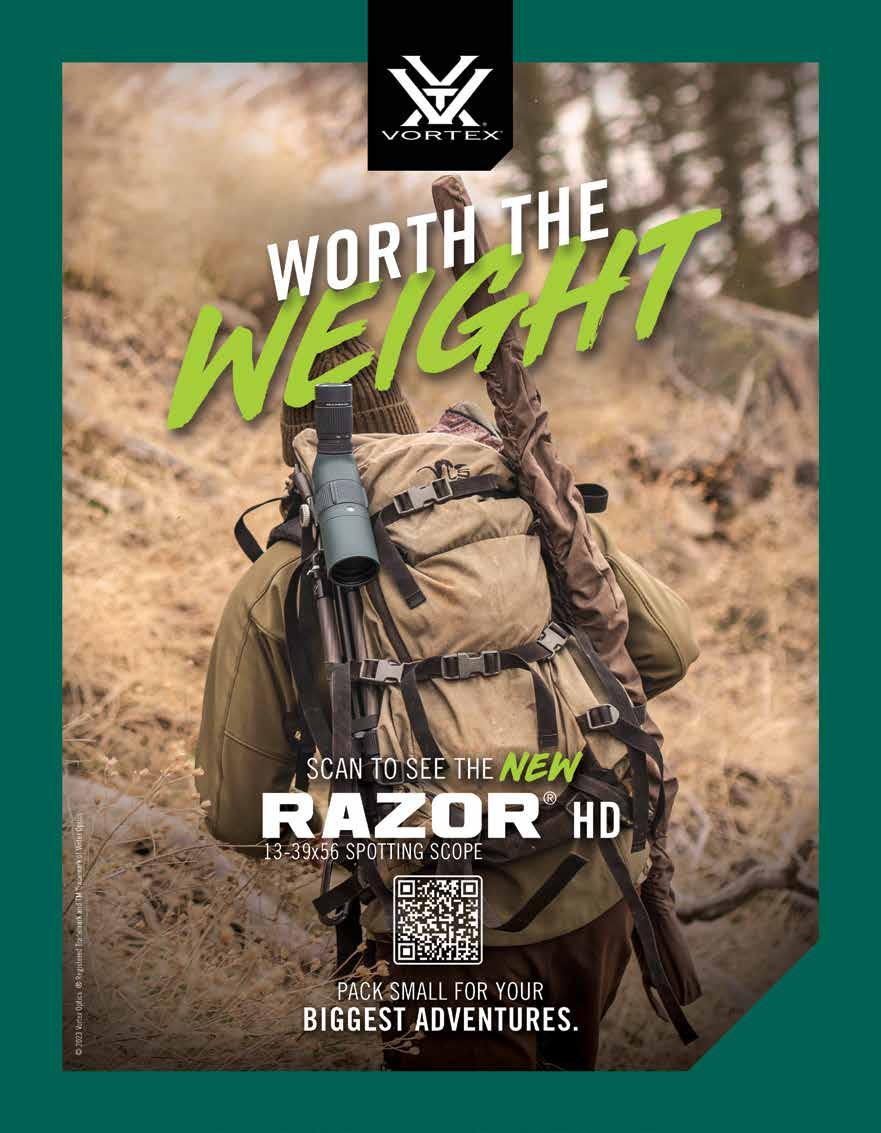
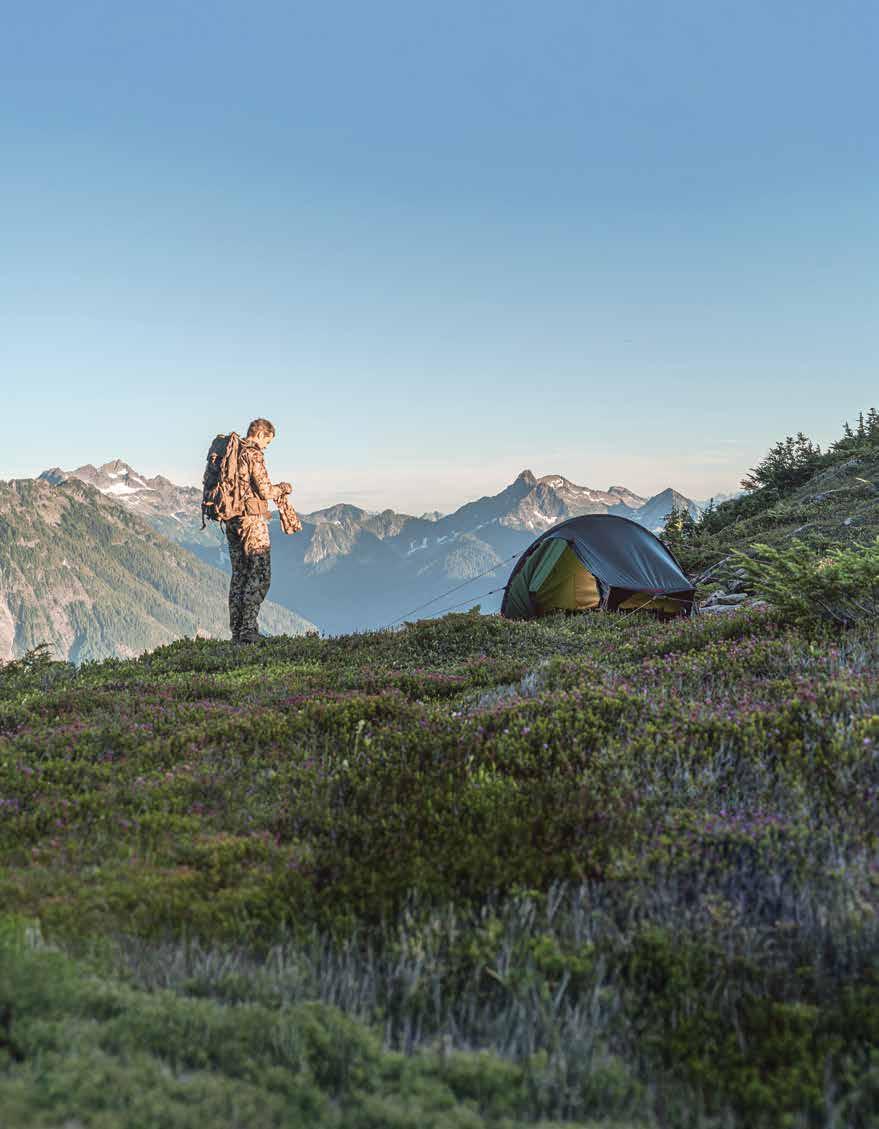


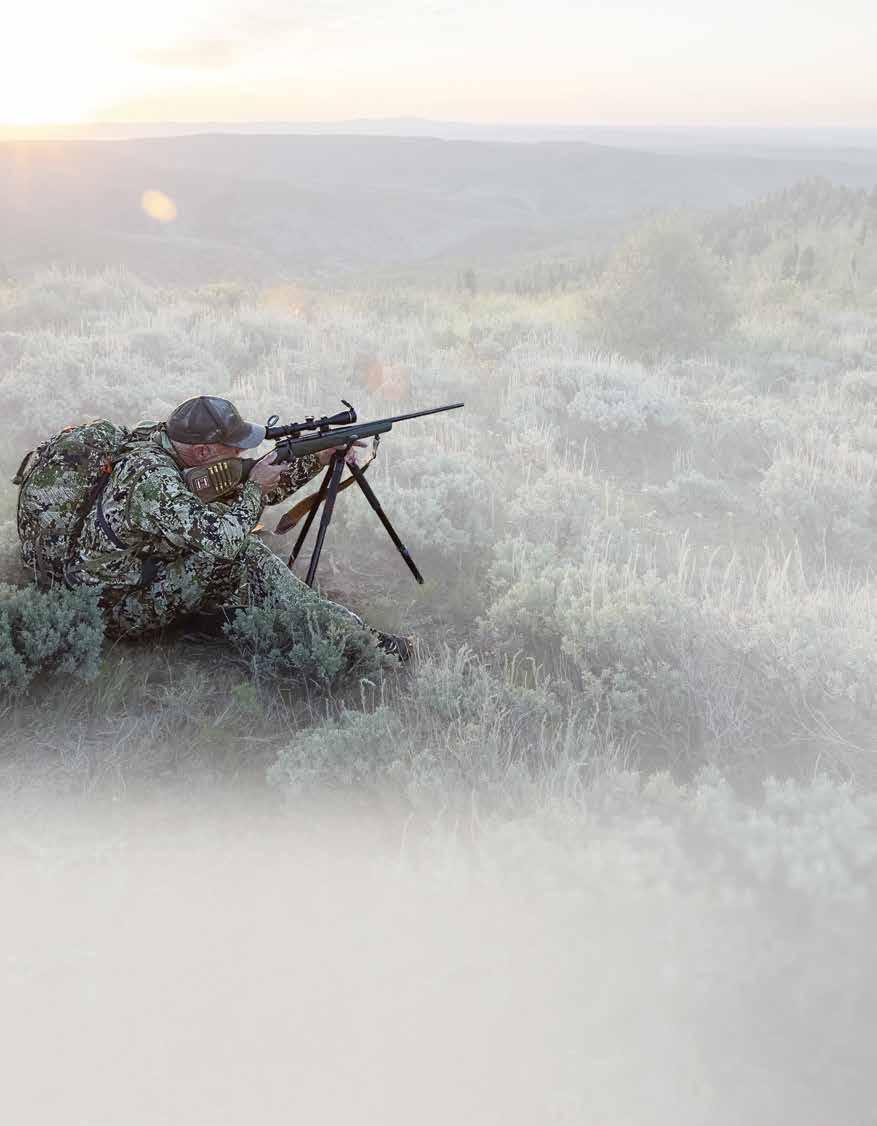

When you set out to exceed the limits of what is expected of hunting ammunition, you don’t do it by guessing what should happen. You test, evaluate and refine until you arrive at Hornady ® Precision Hunter ® ammunition, loaded with our ballistically advanced ELD-X® bullet with Heat Shield® tip. Engineered specifically to deliver match accuracy and lethality at all practical ranges, Hornady ® Precision Hunter ® ammunition is the best ALL-RANGE hunting ammunition.
